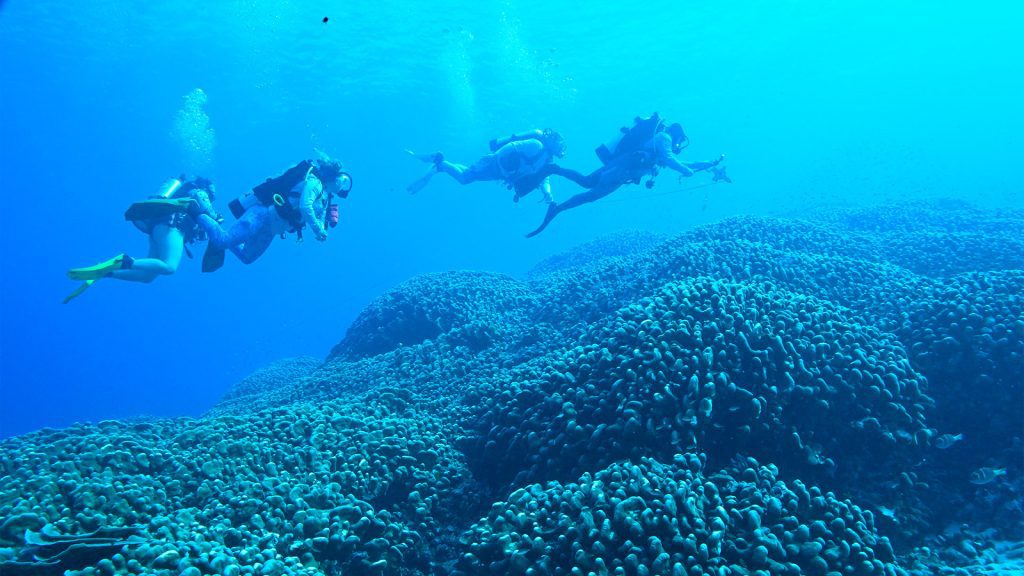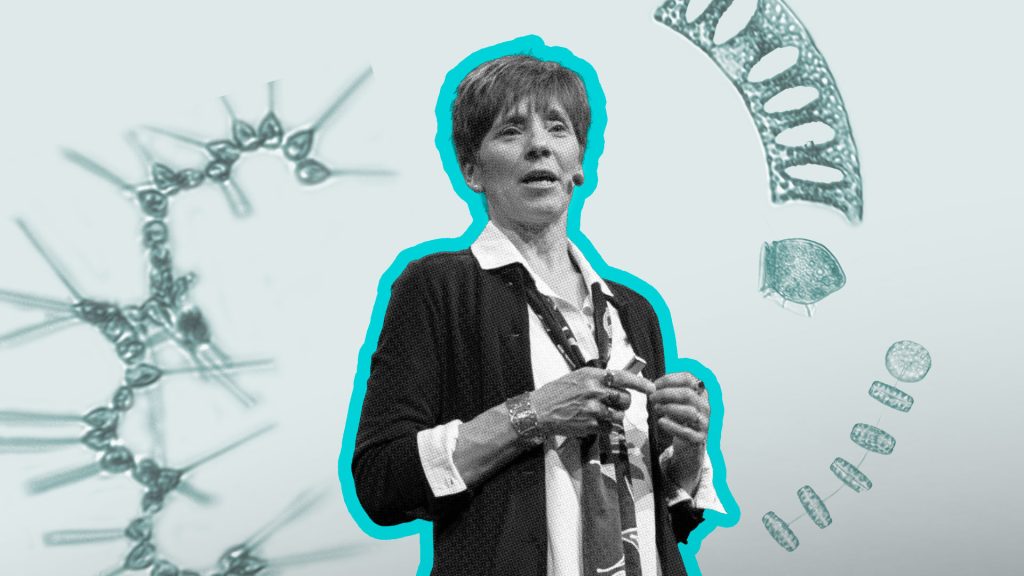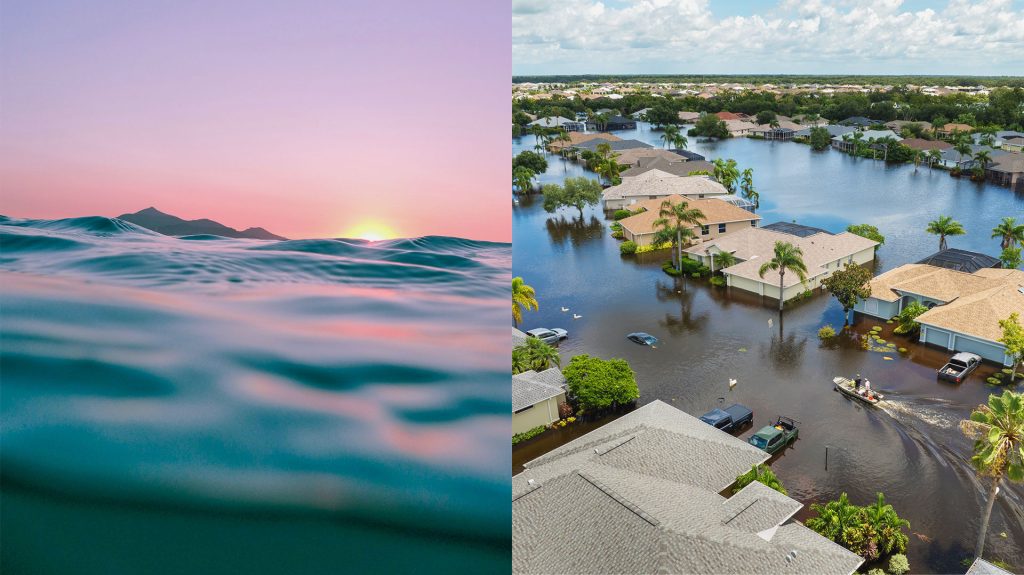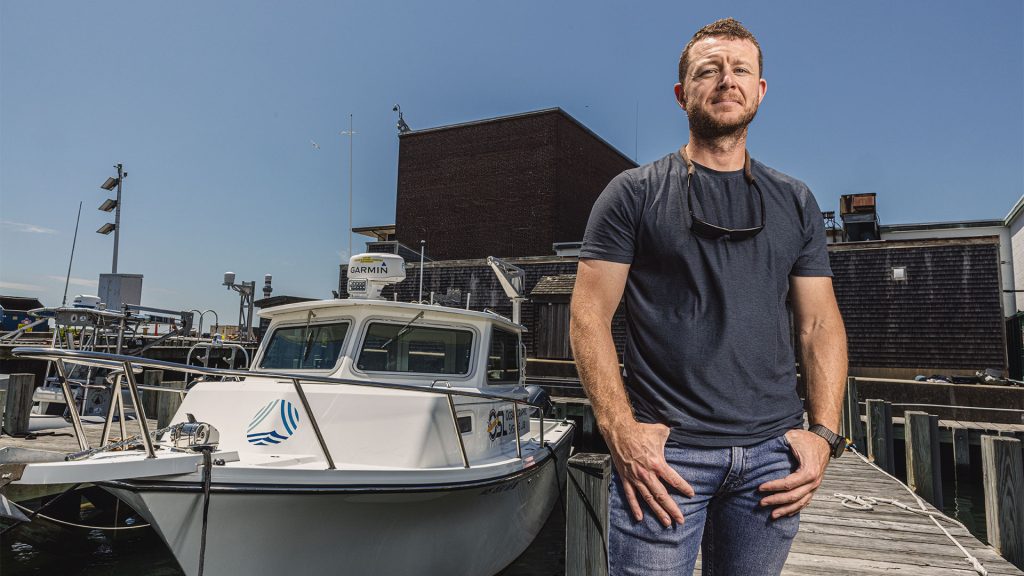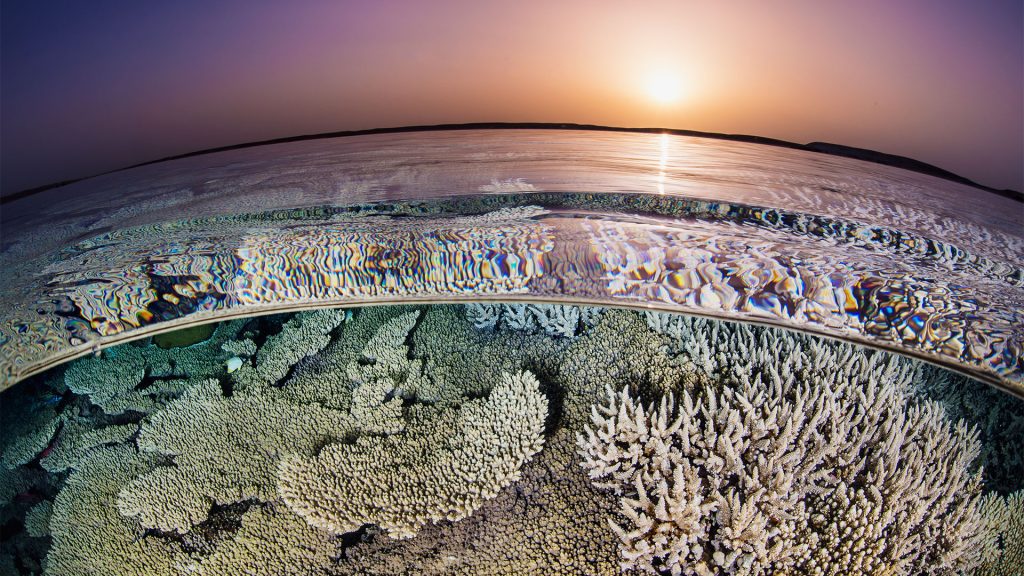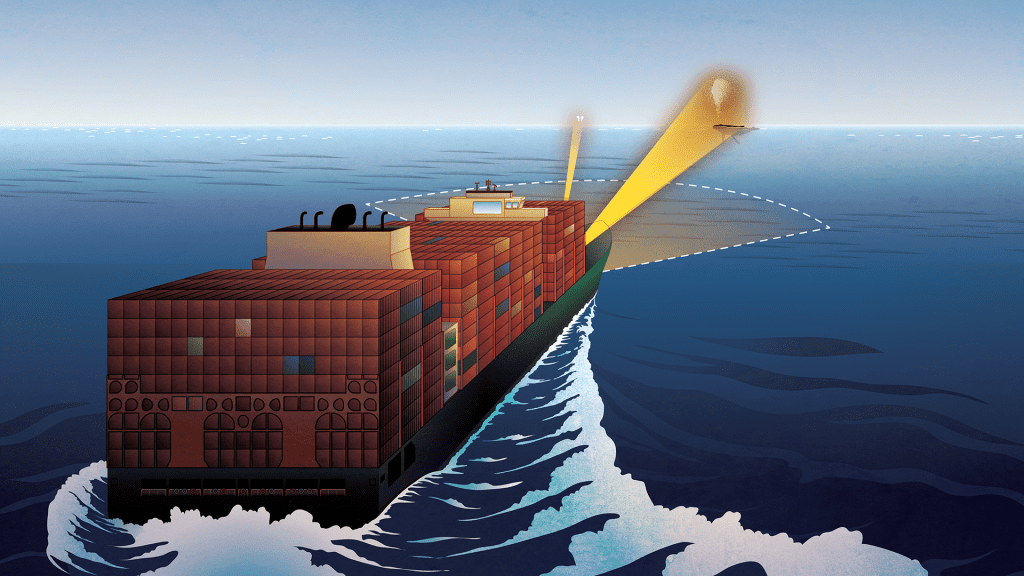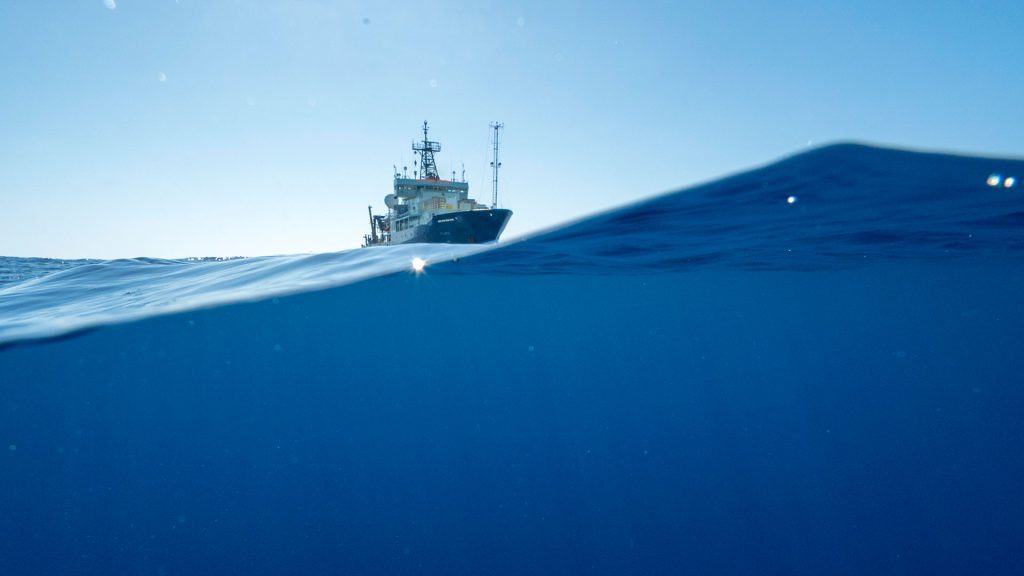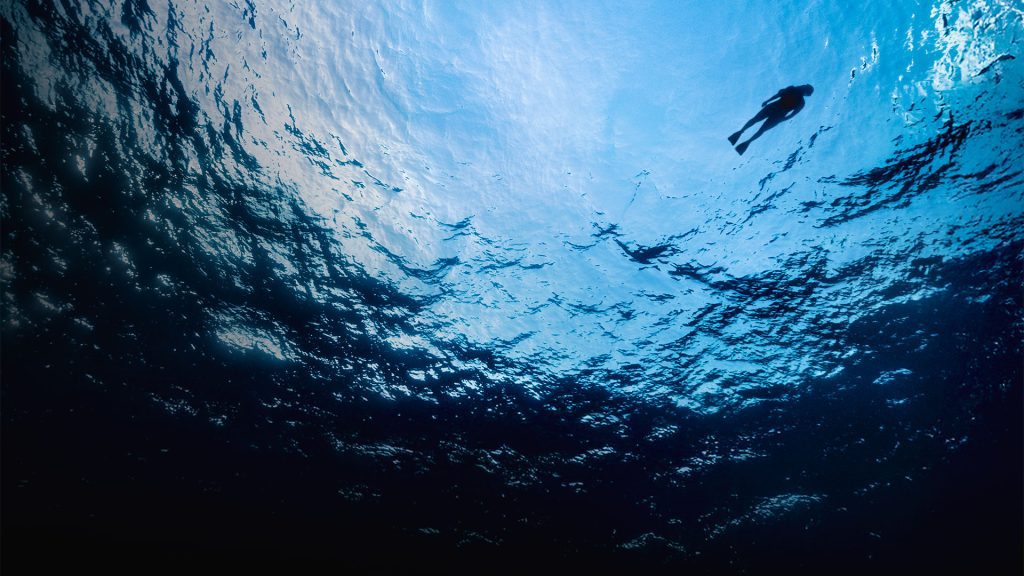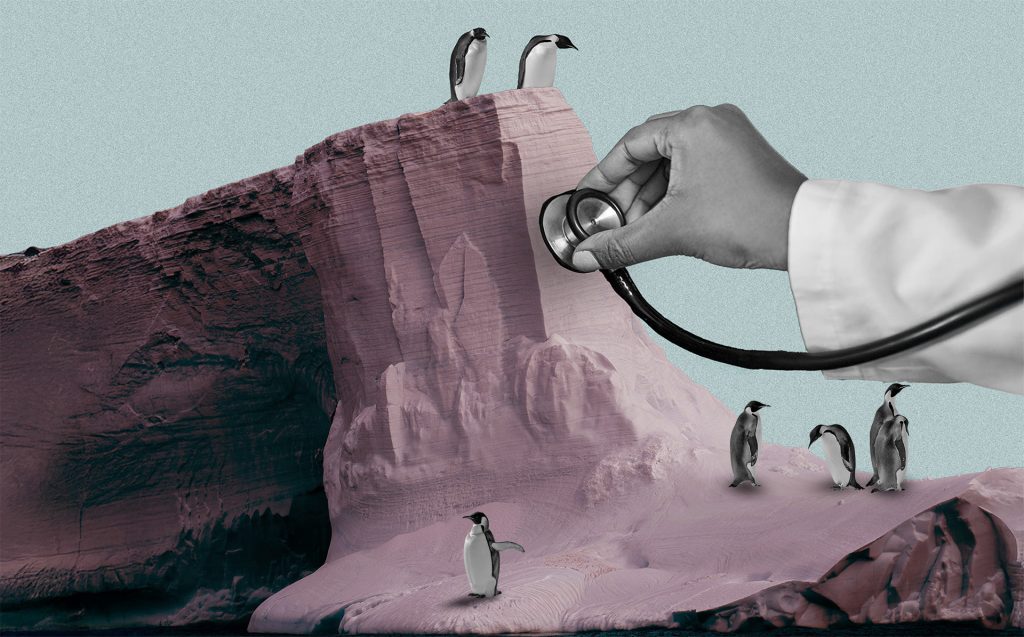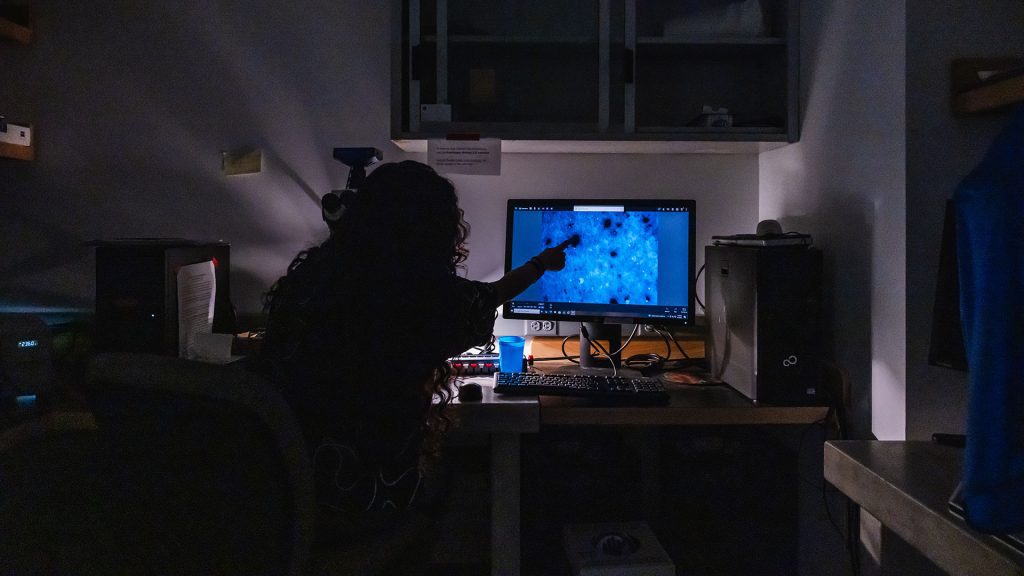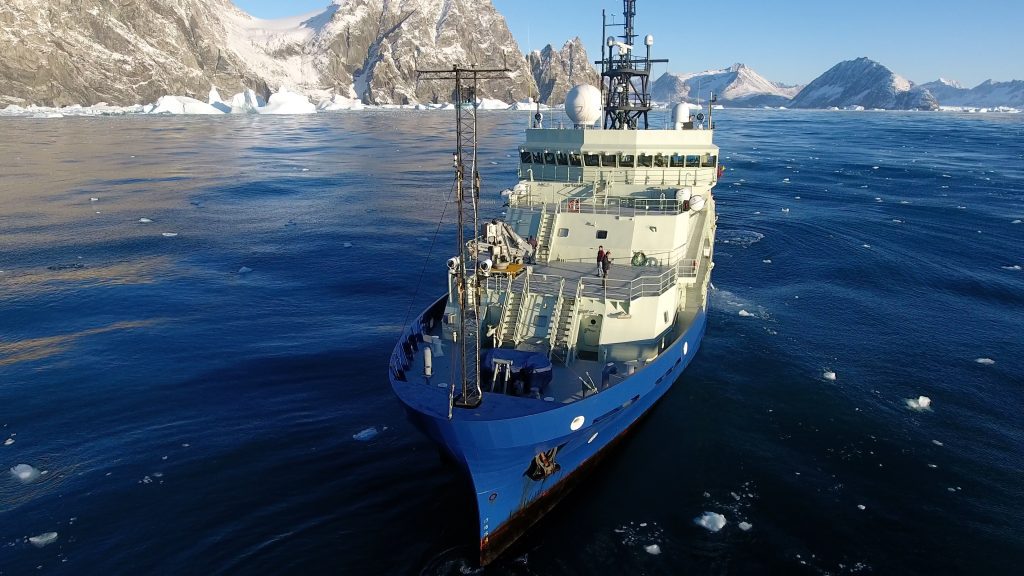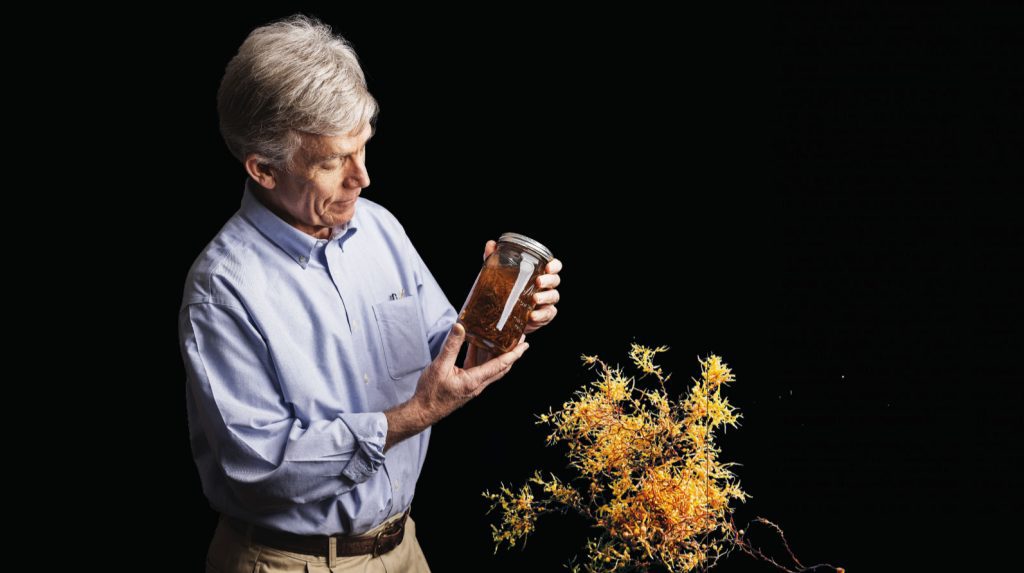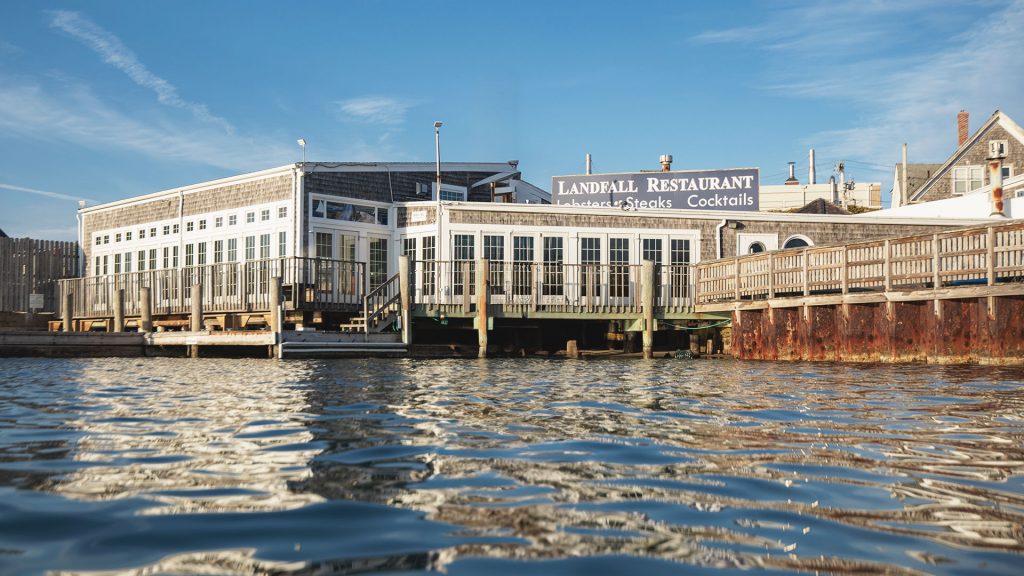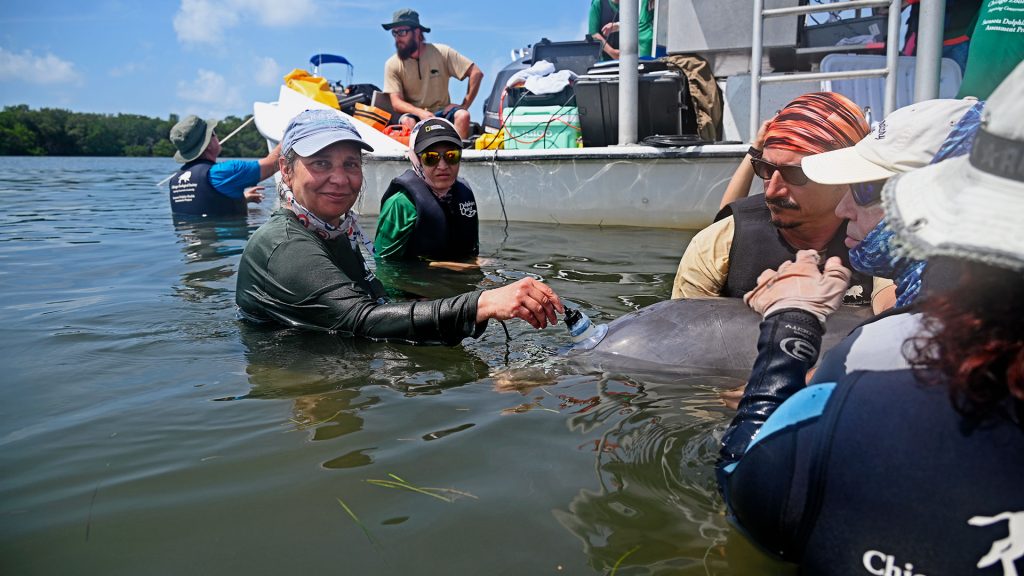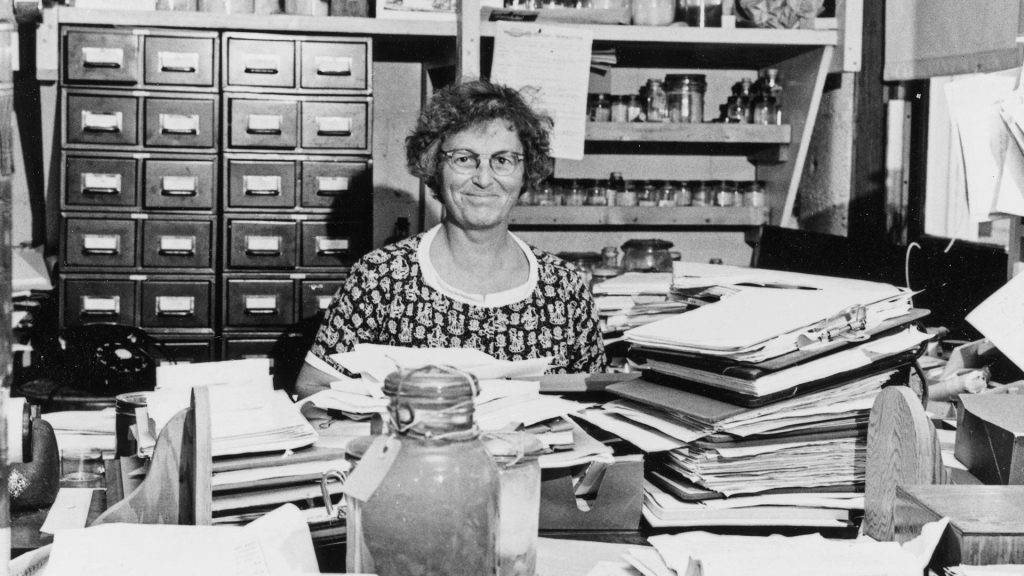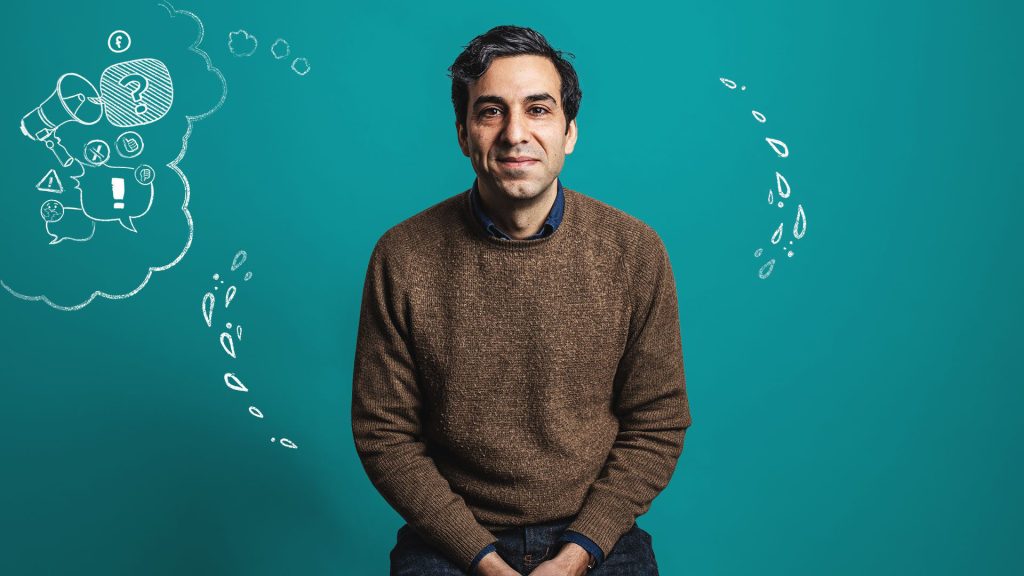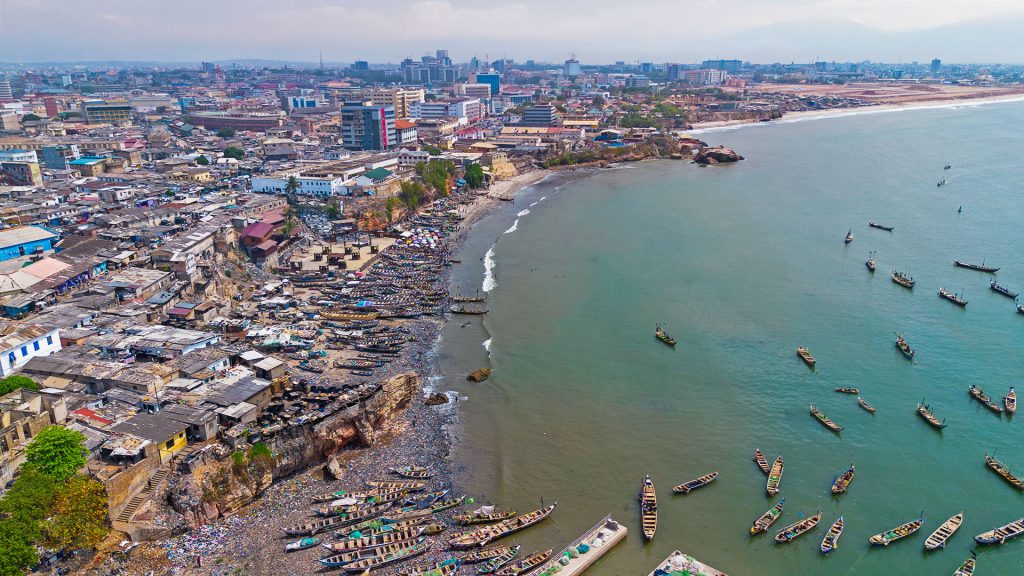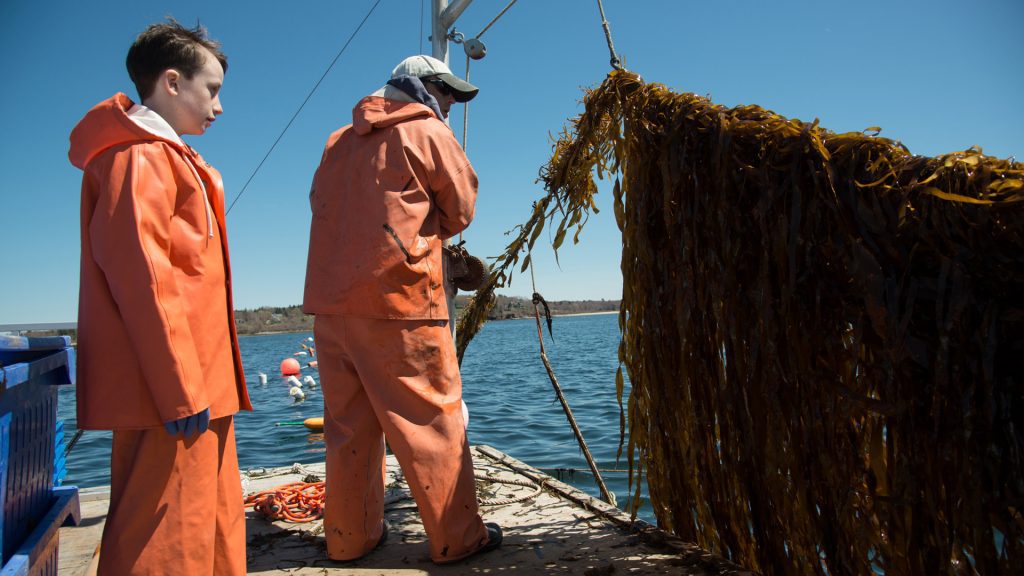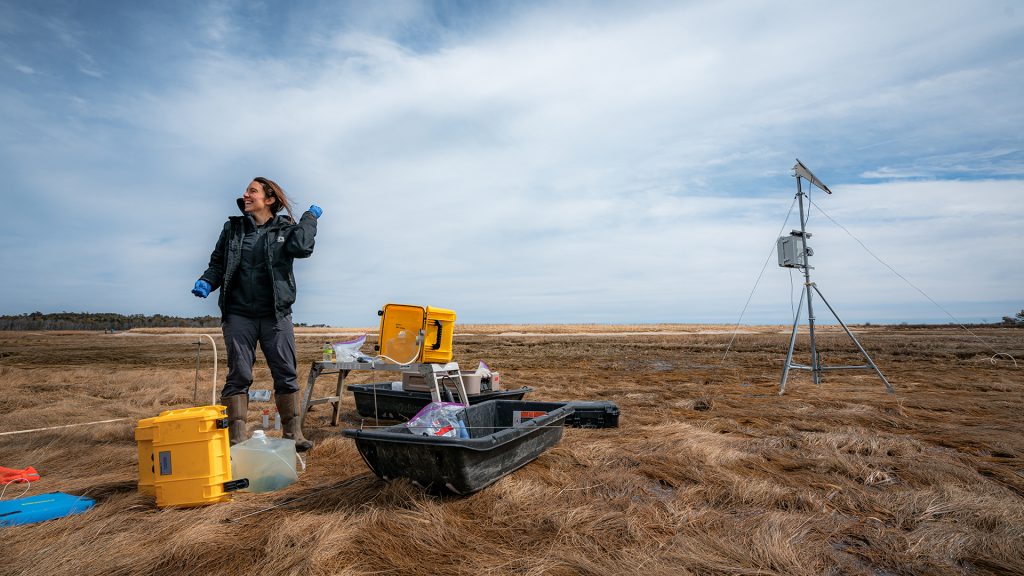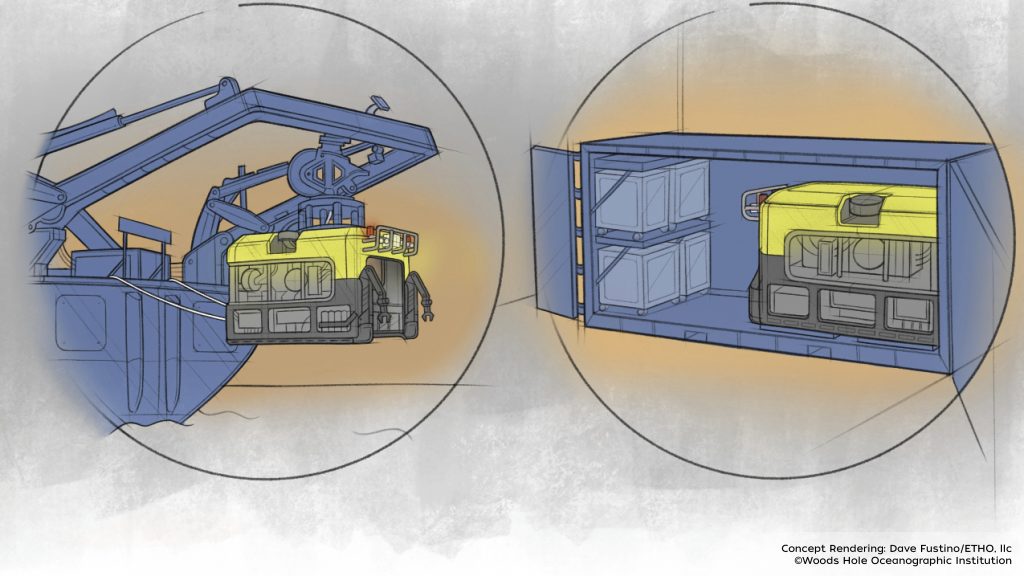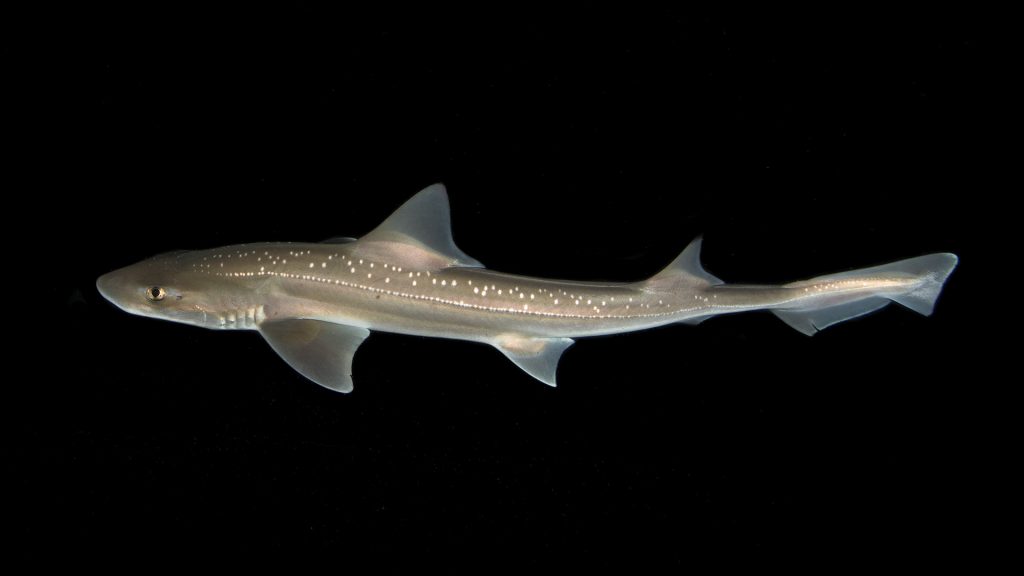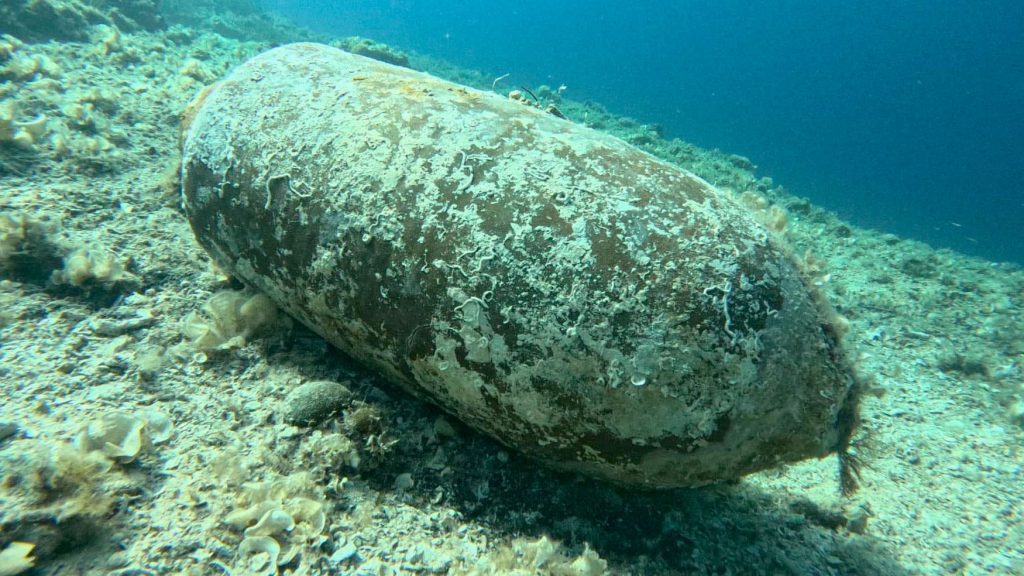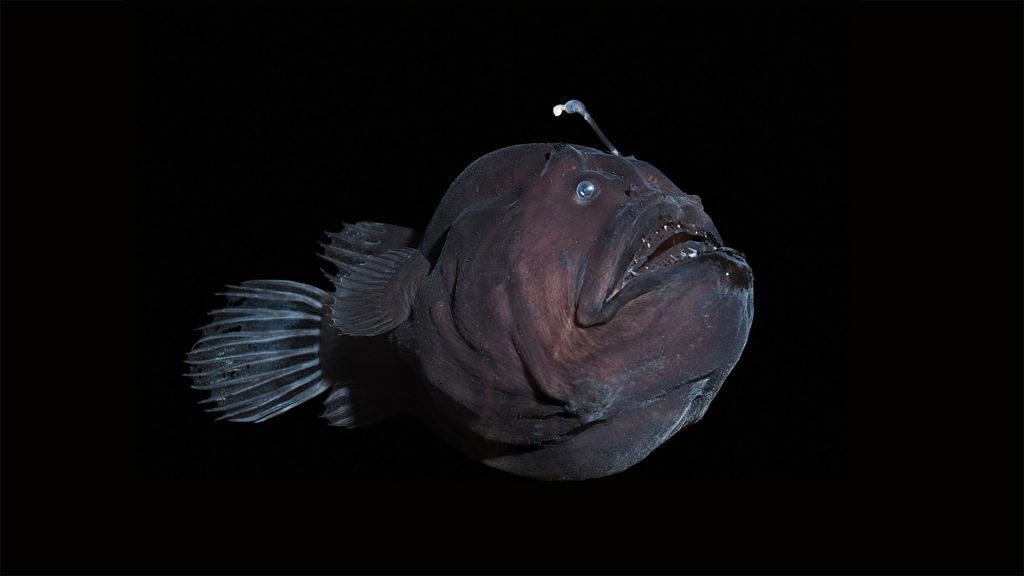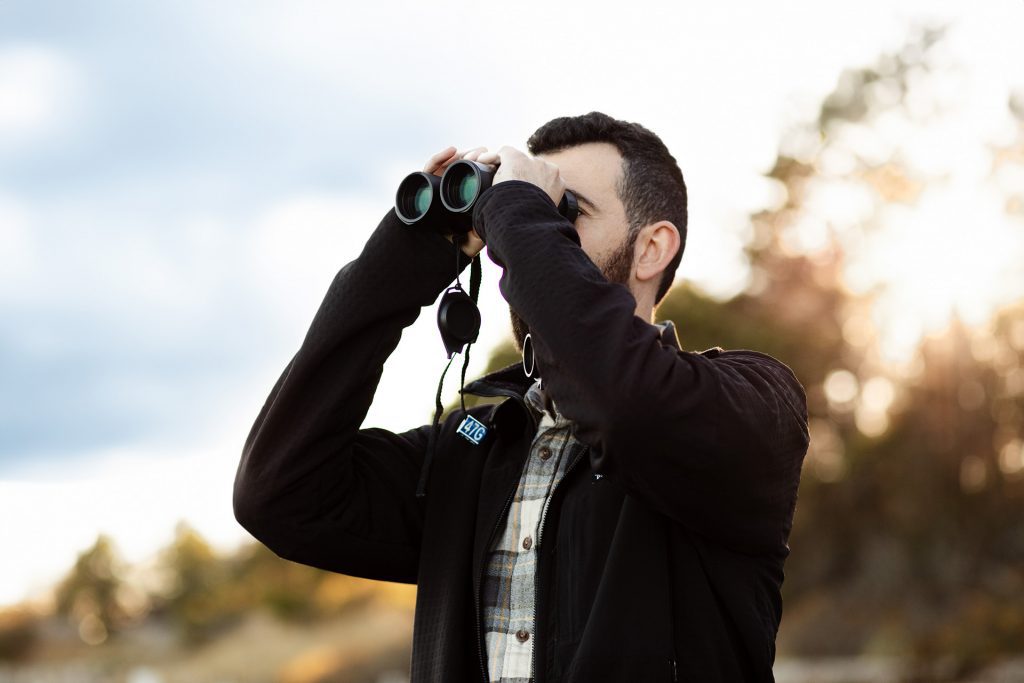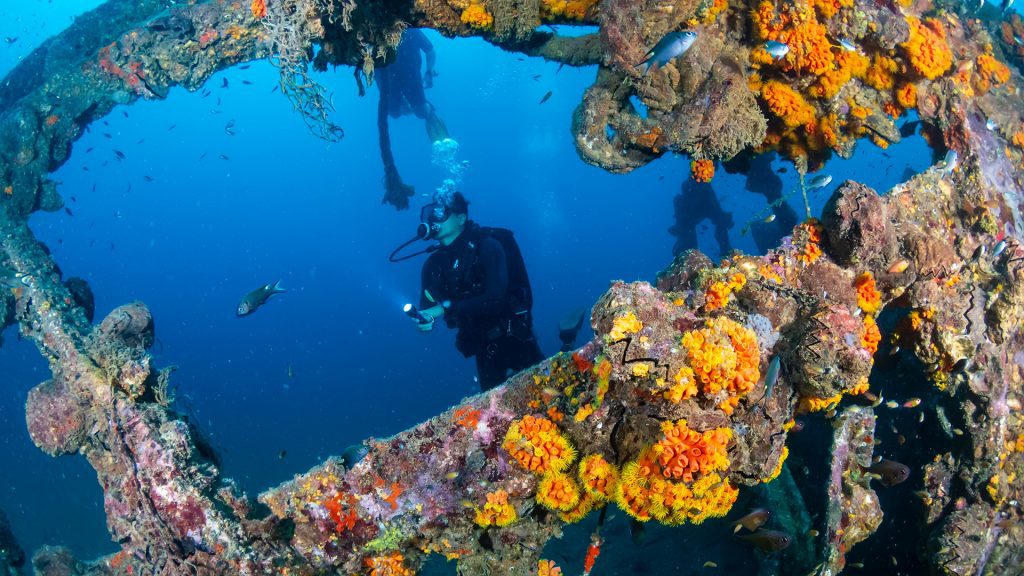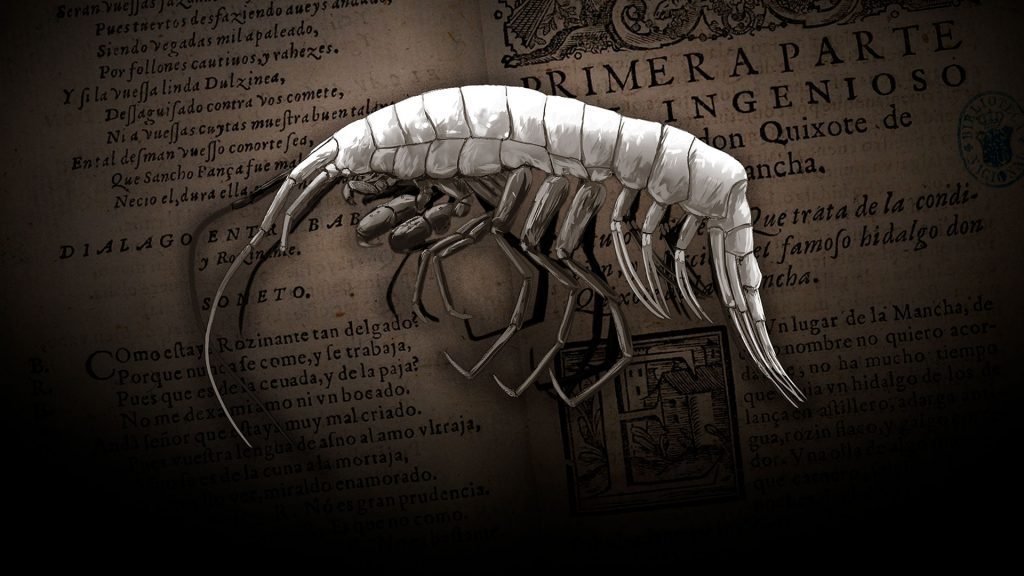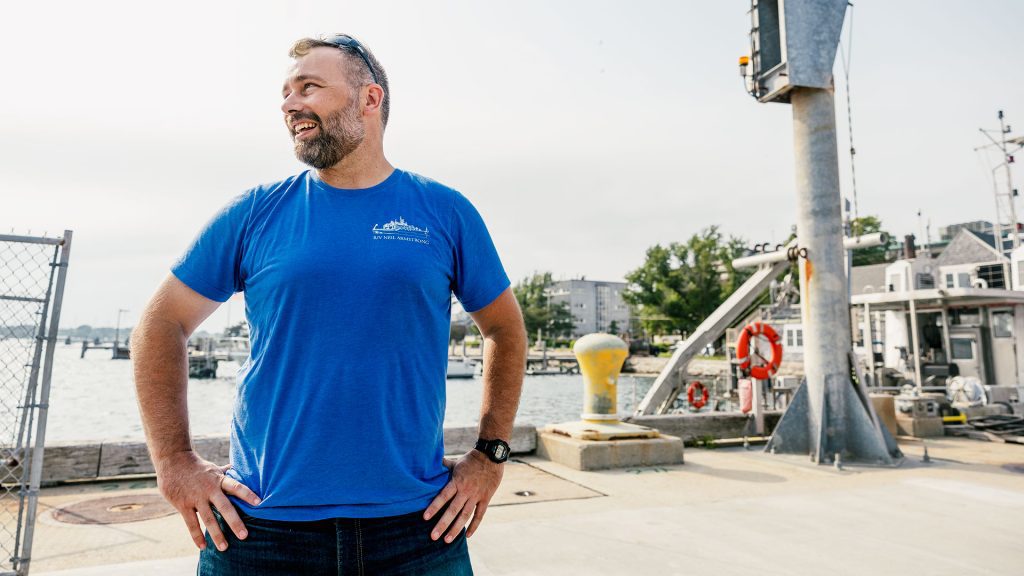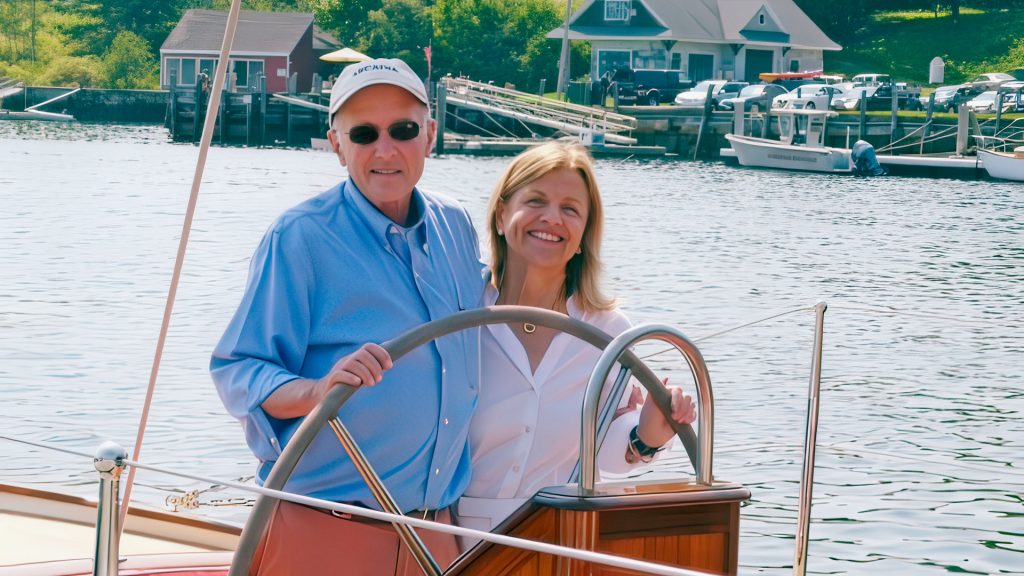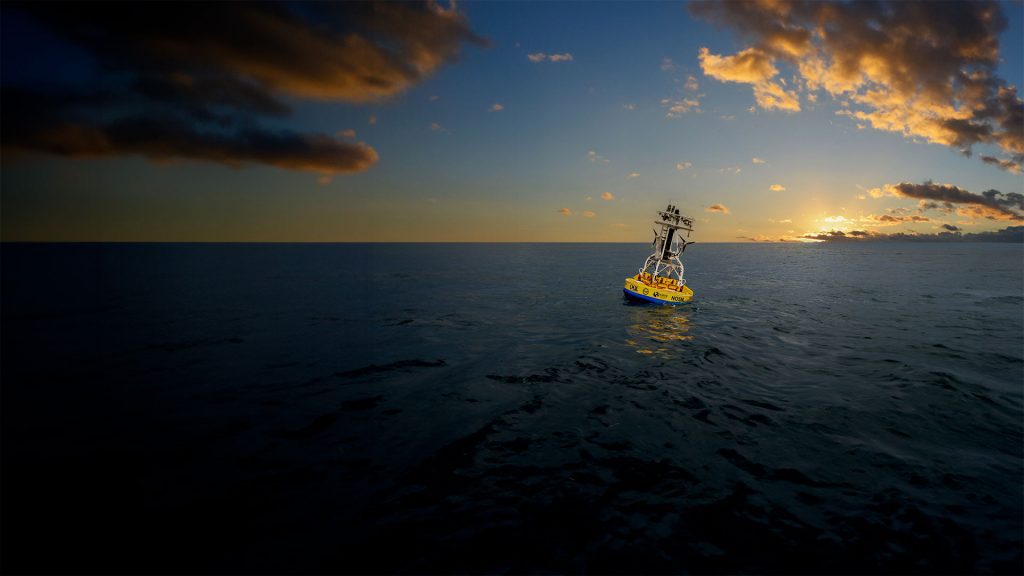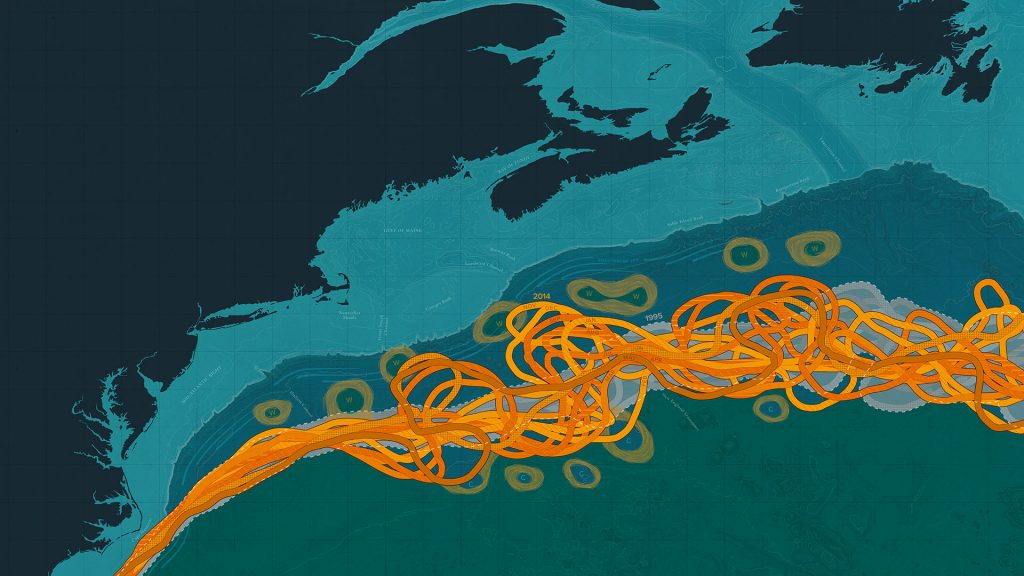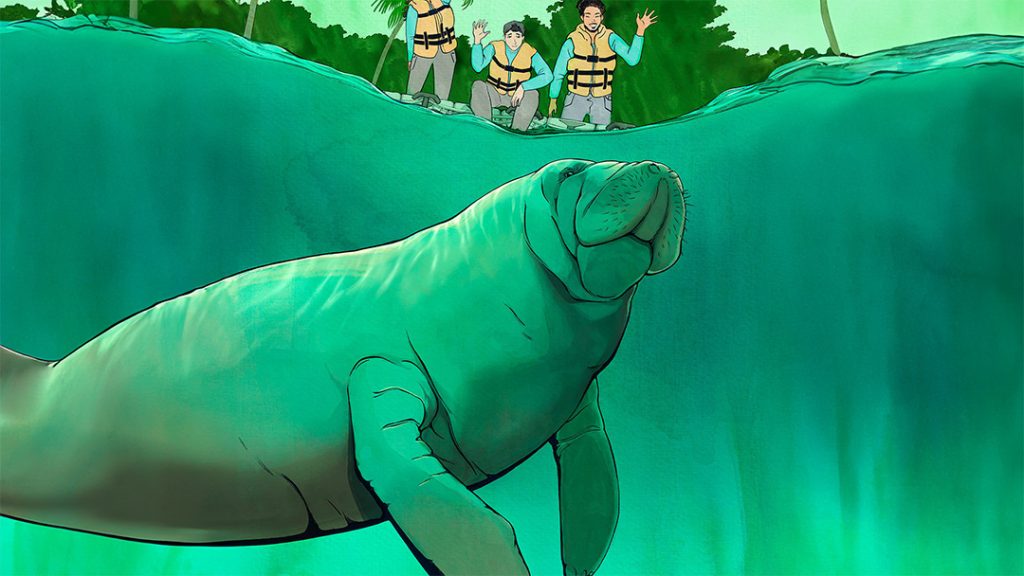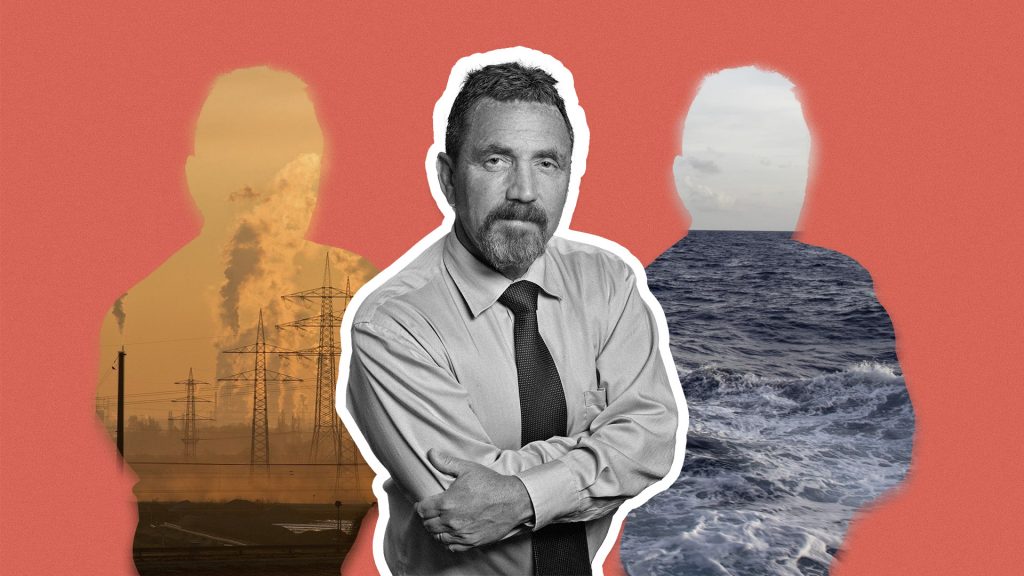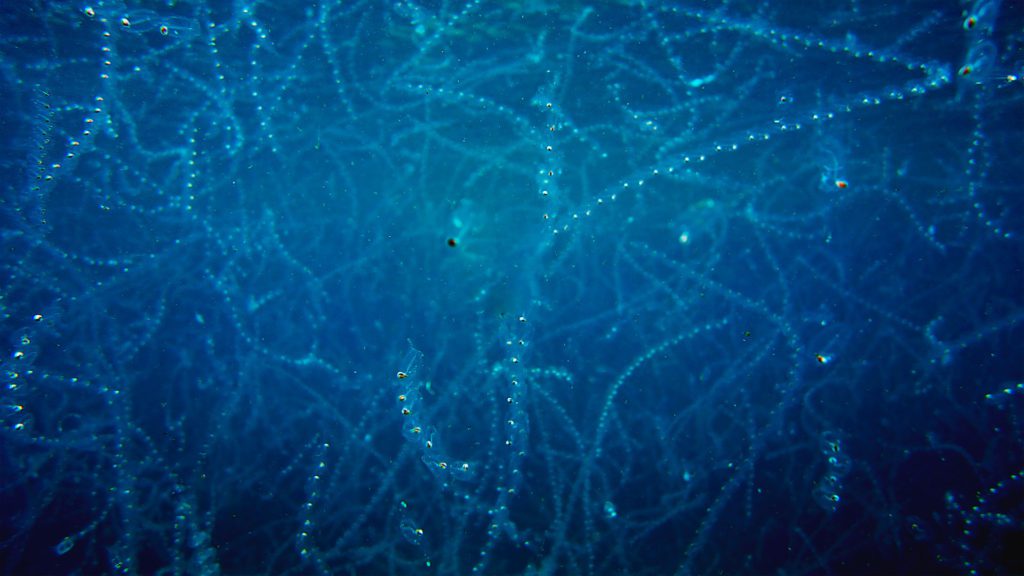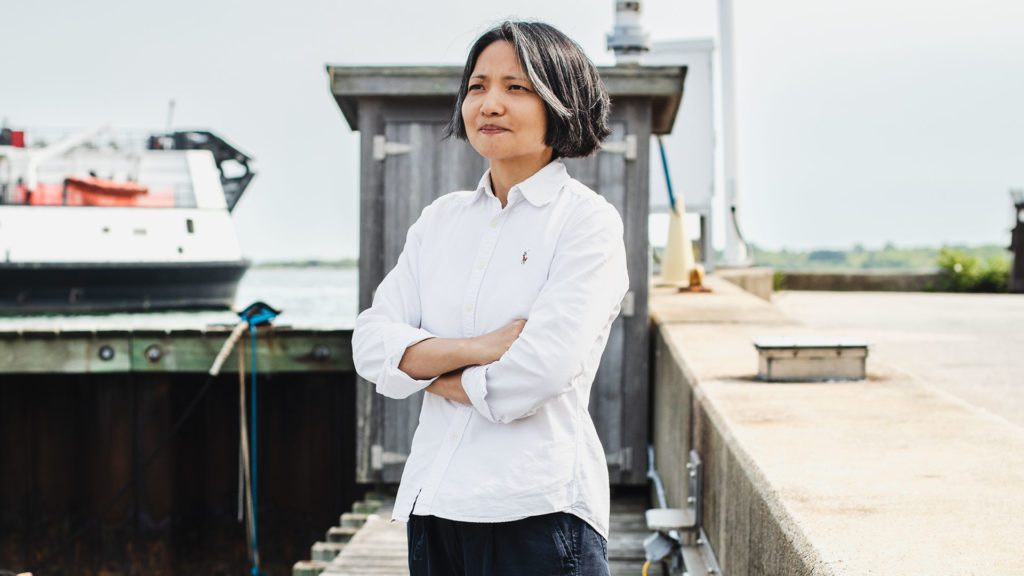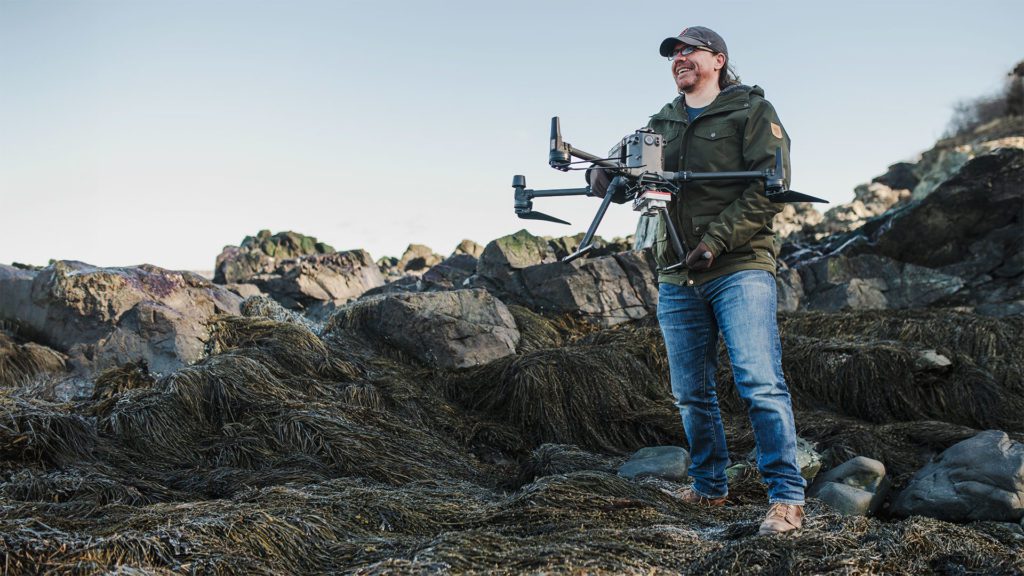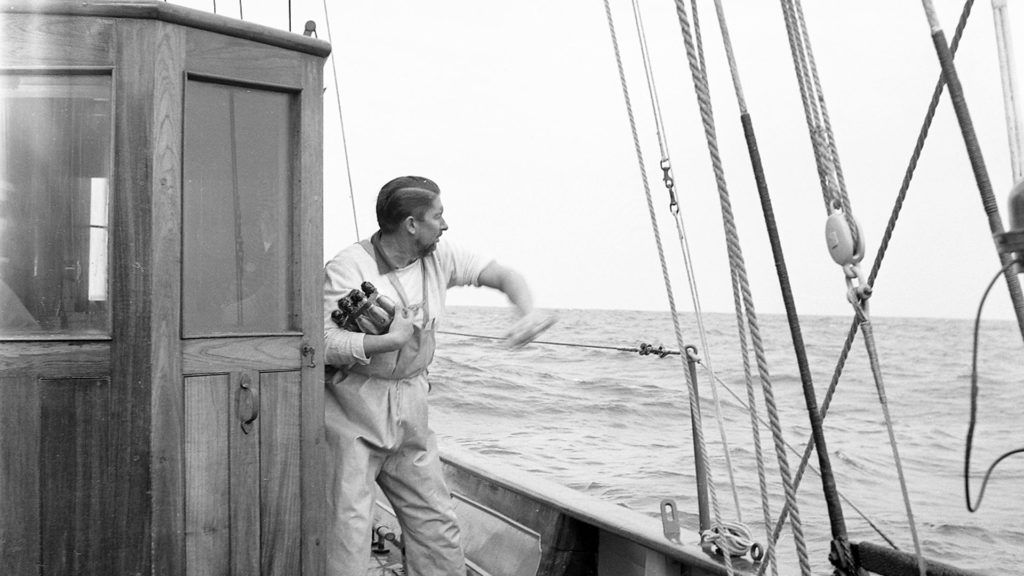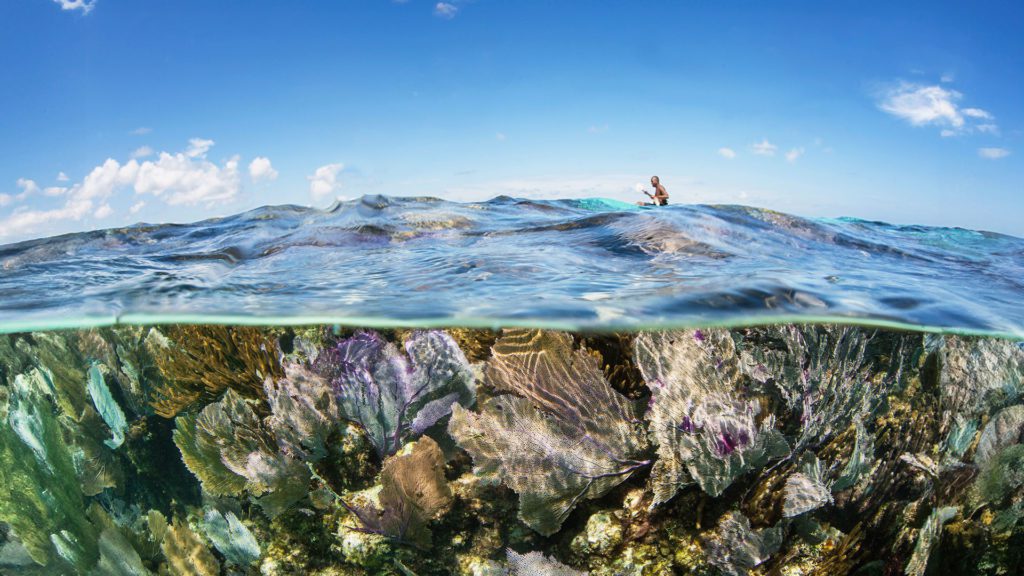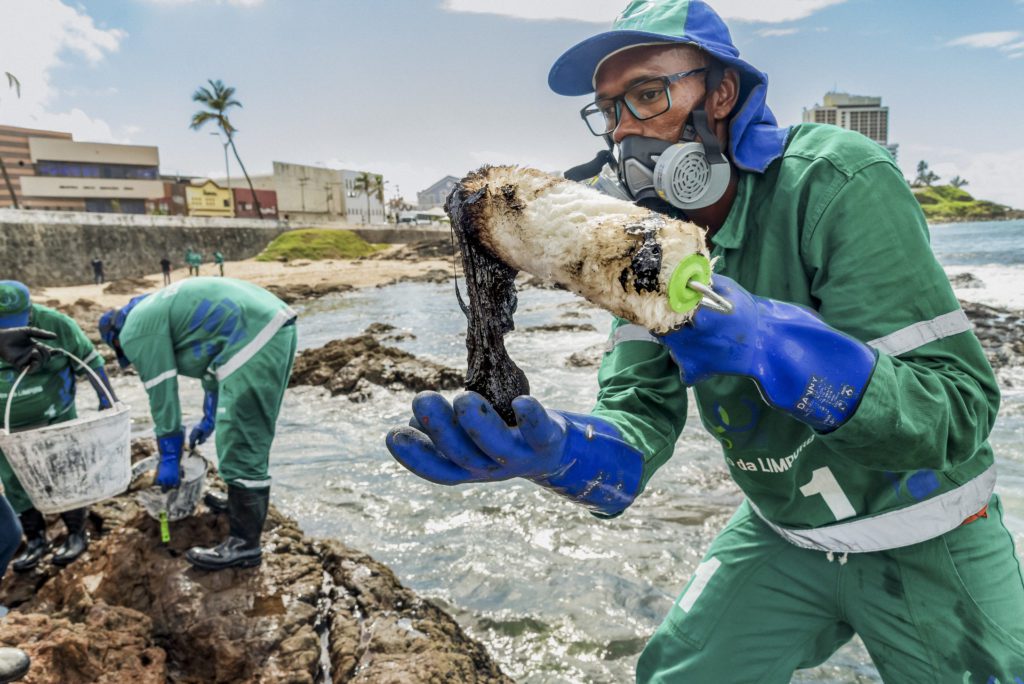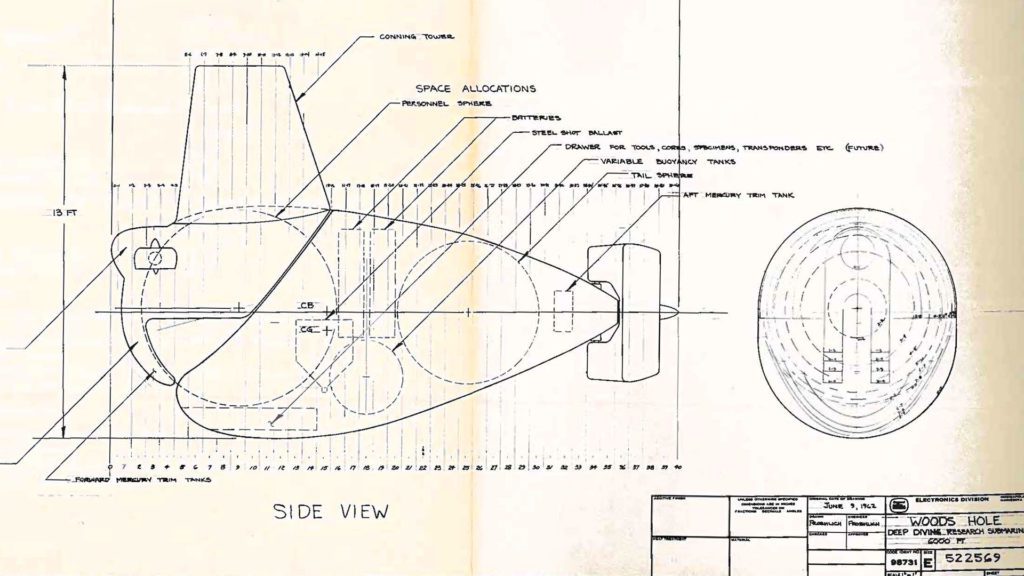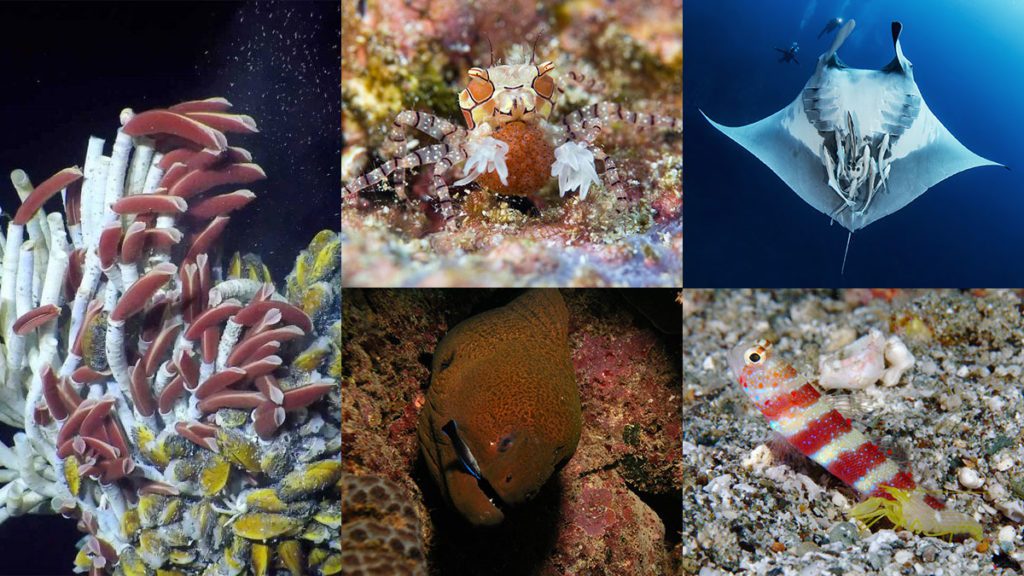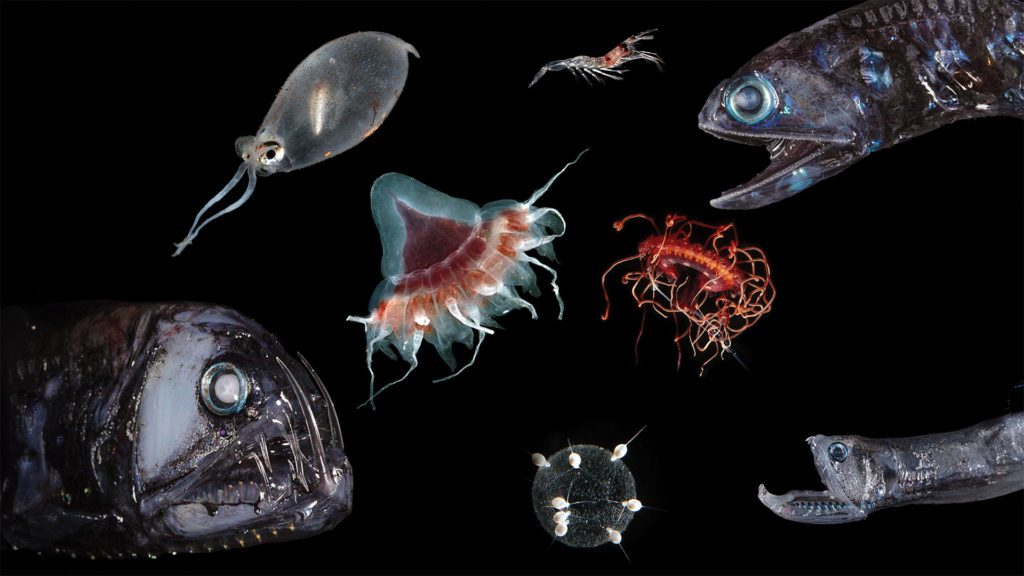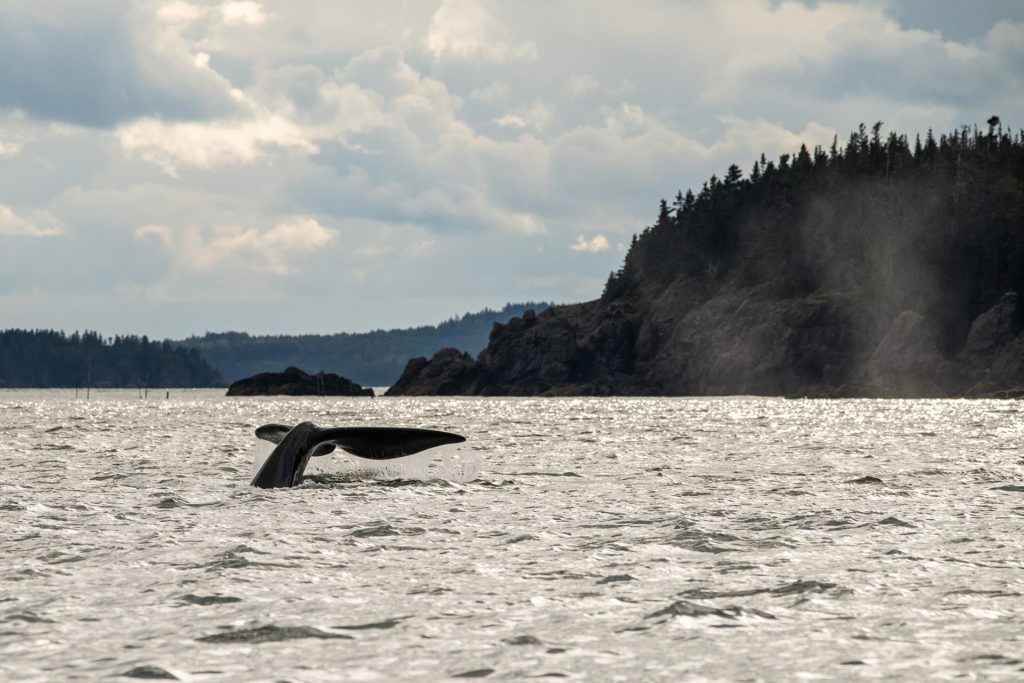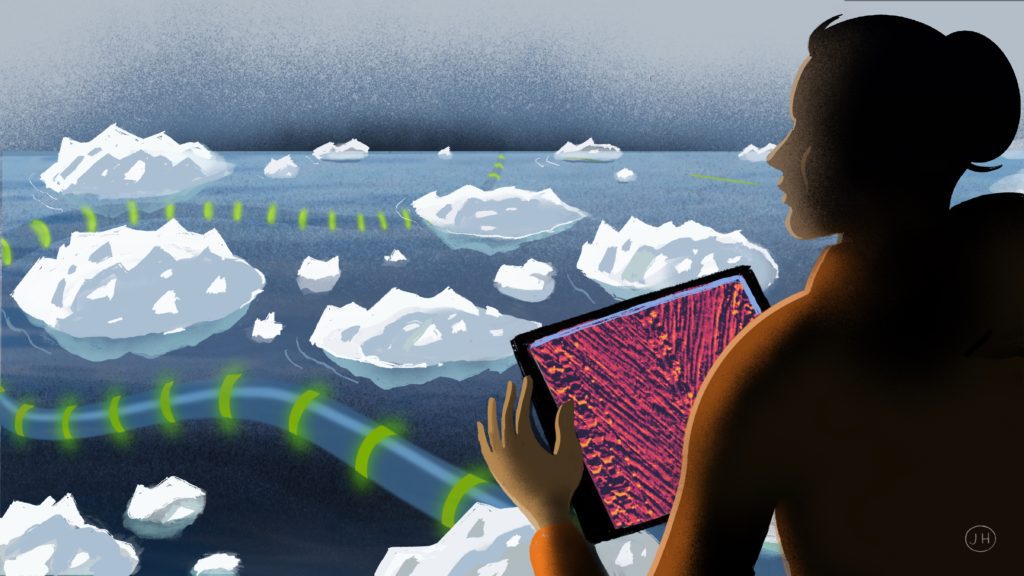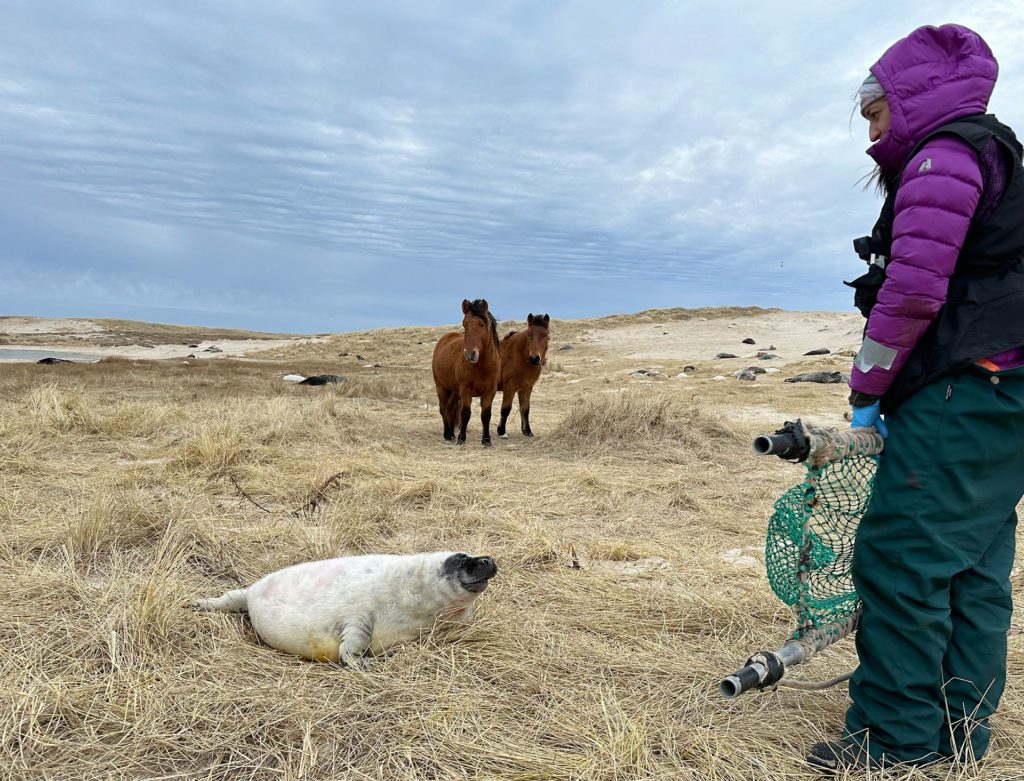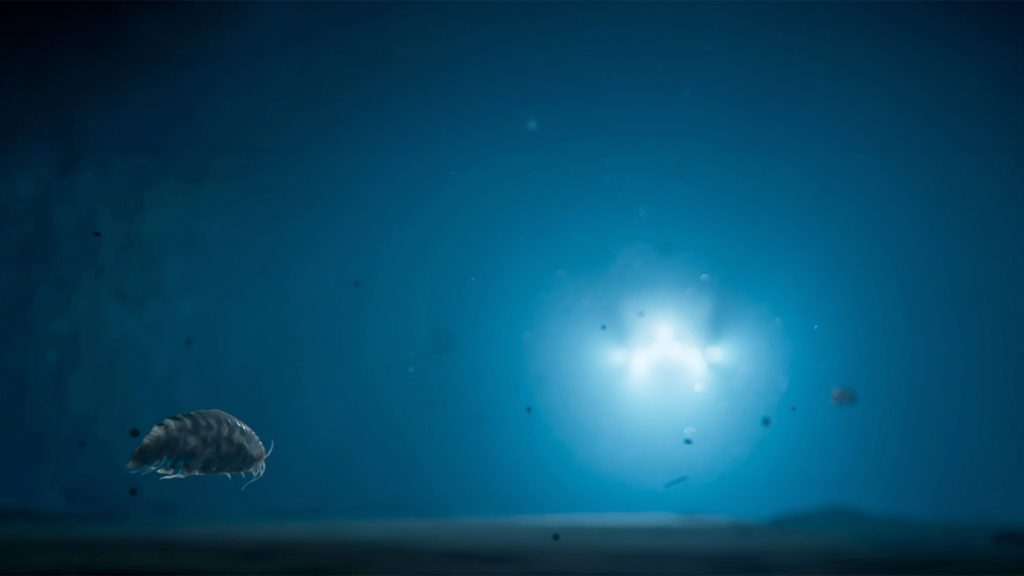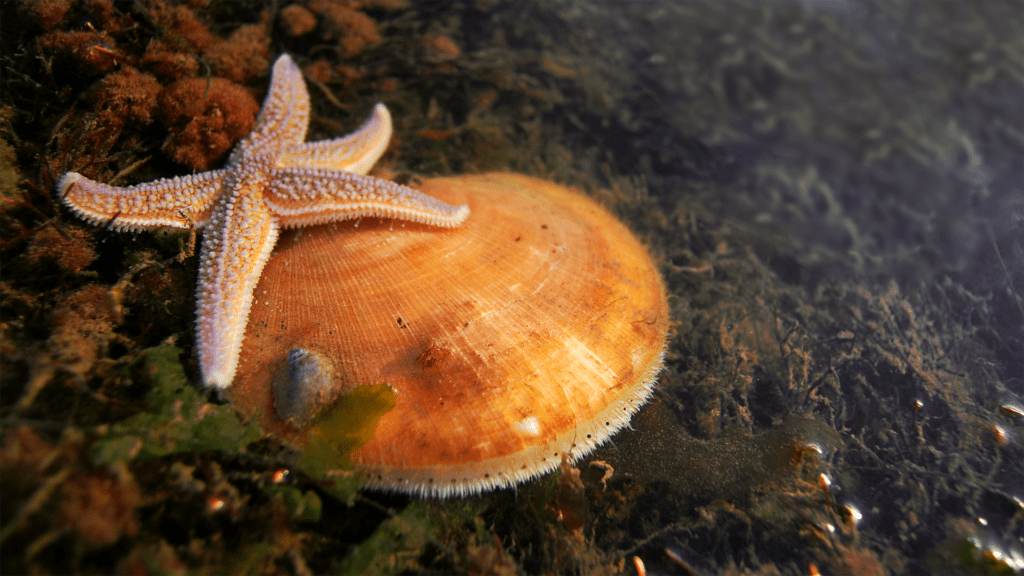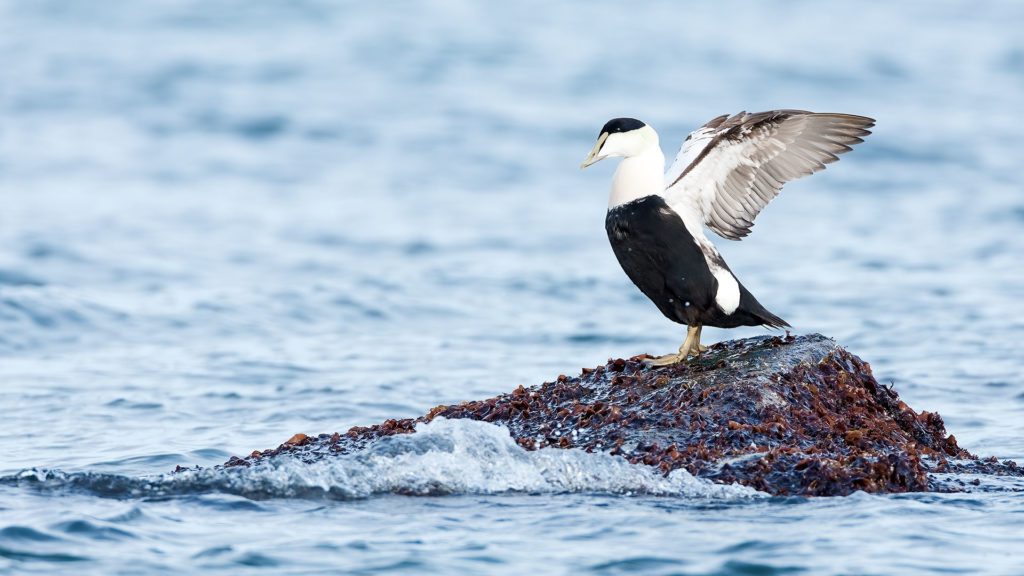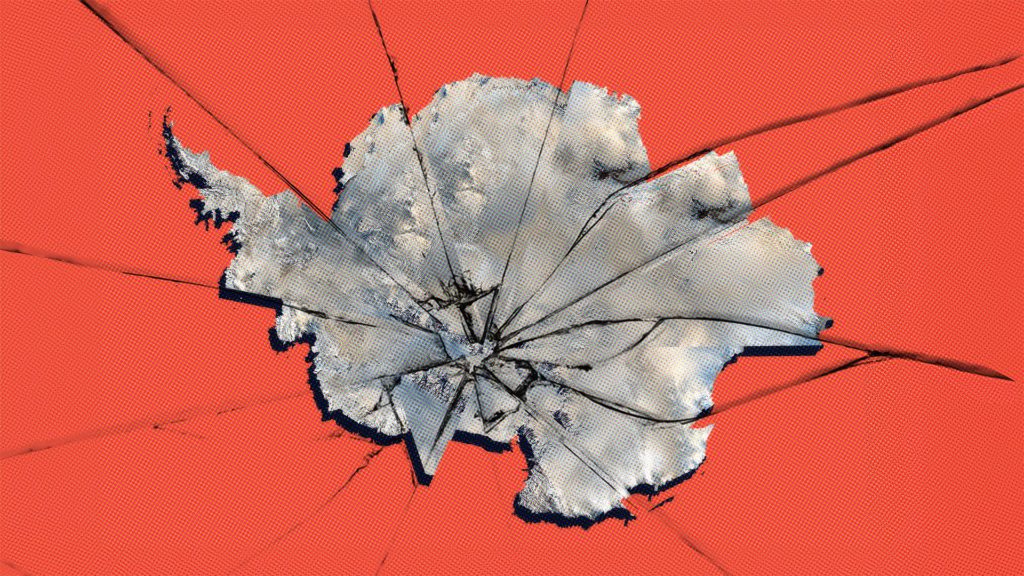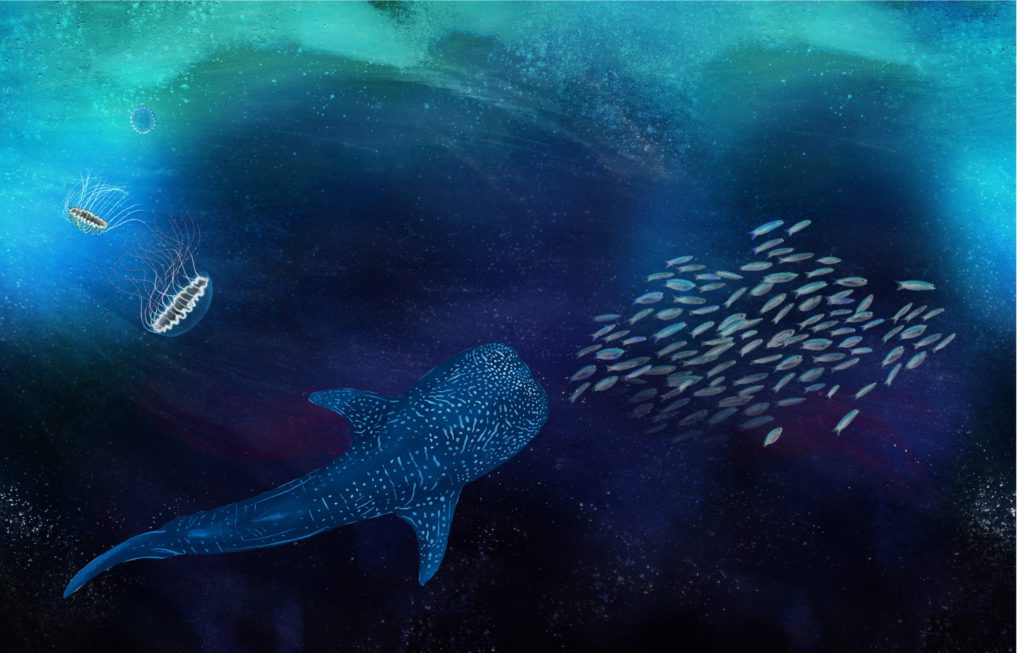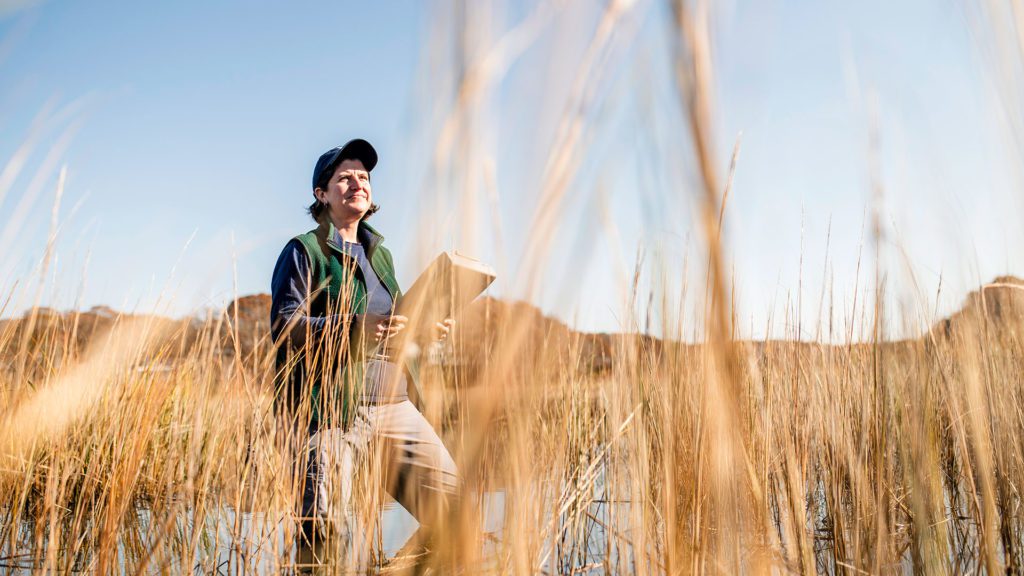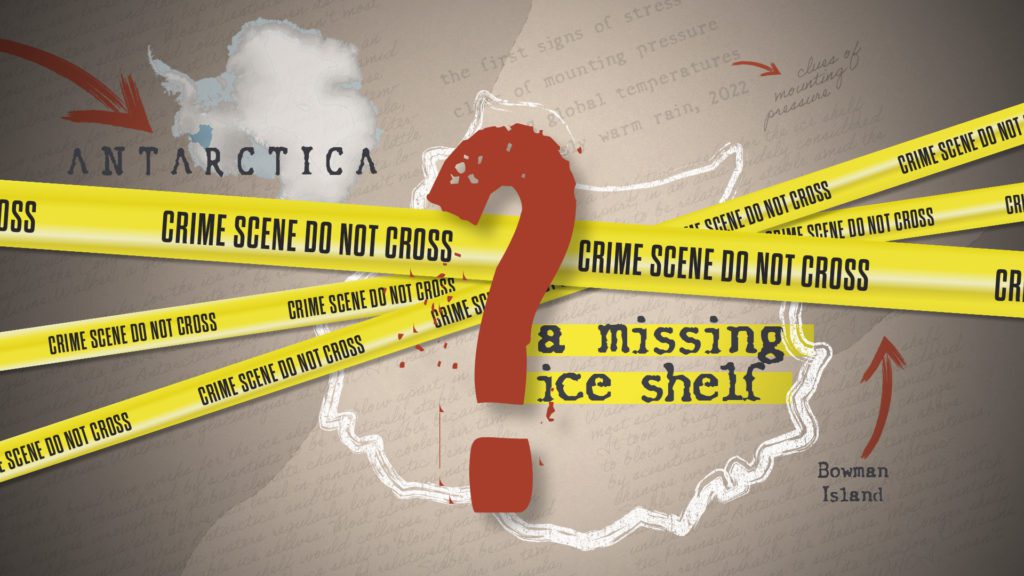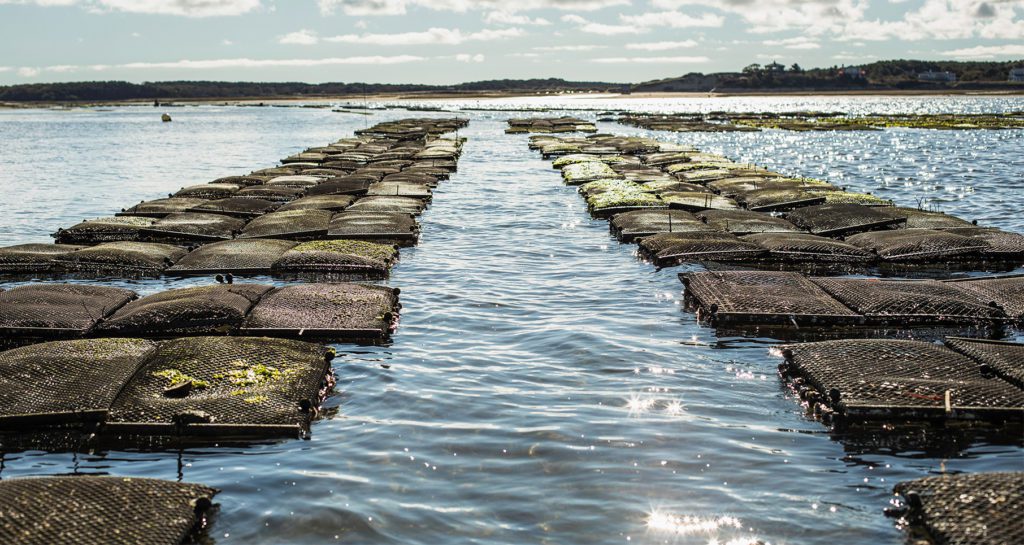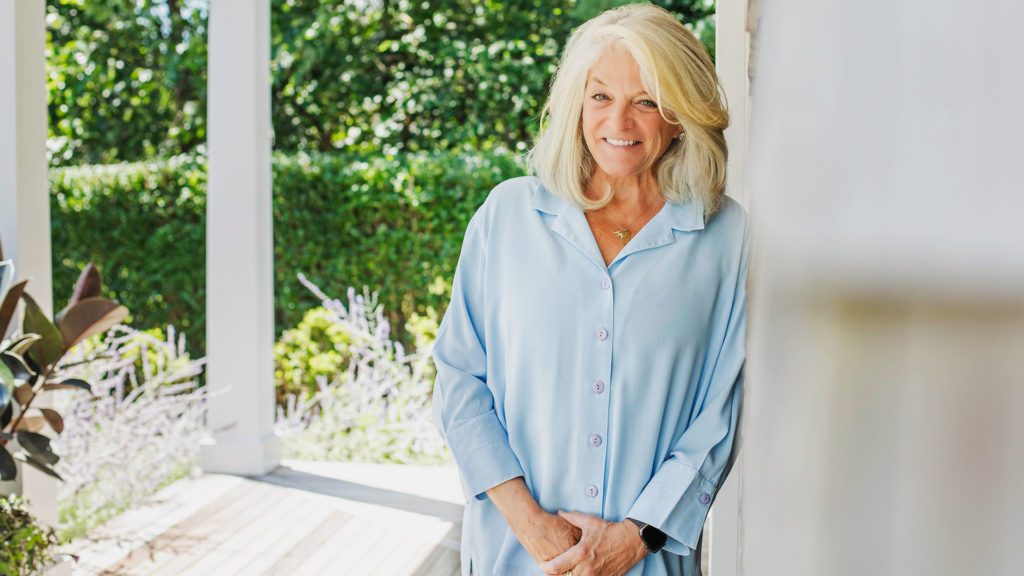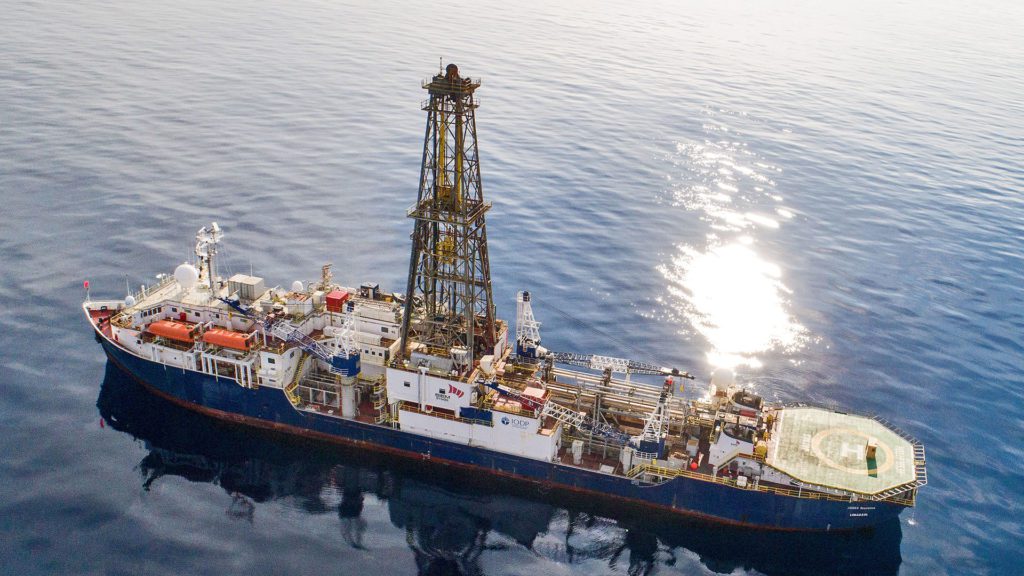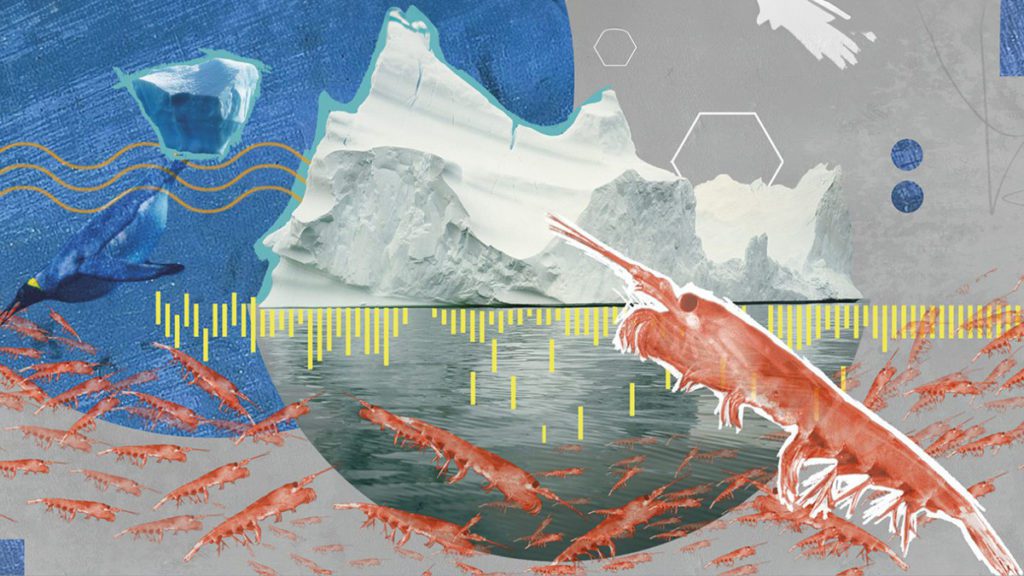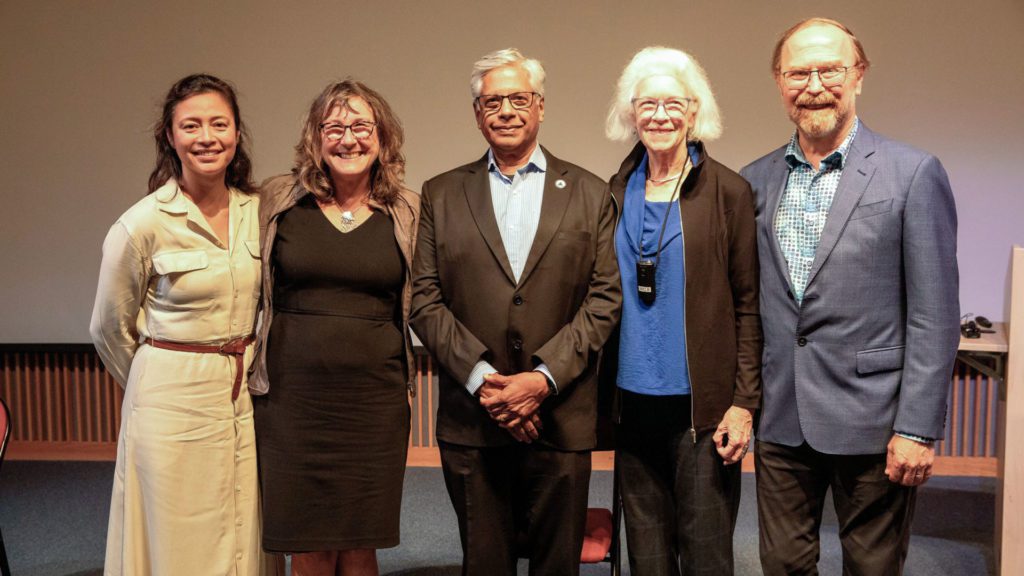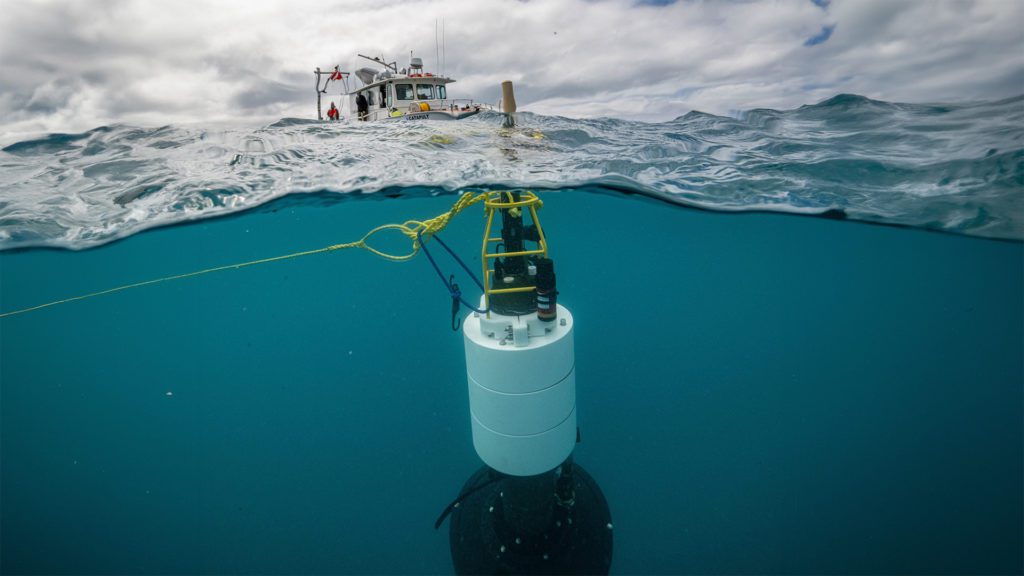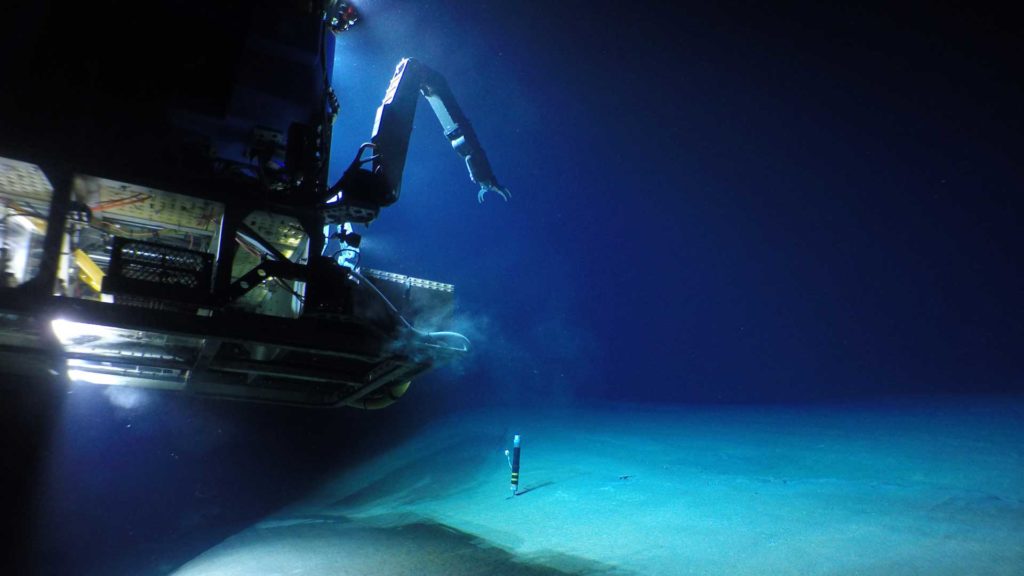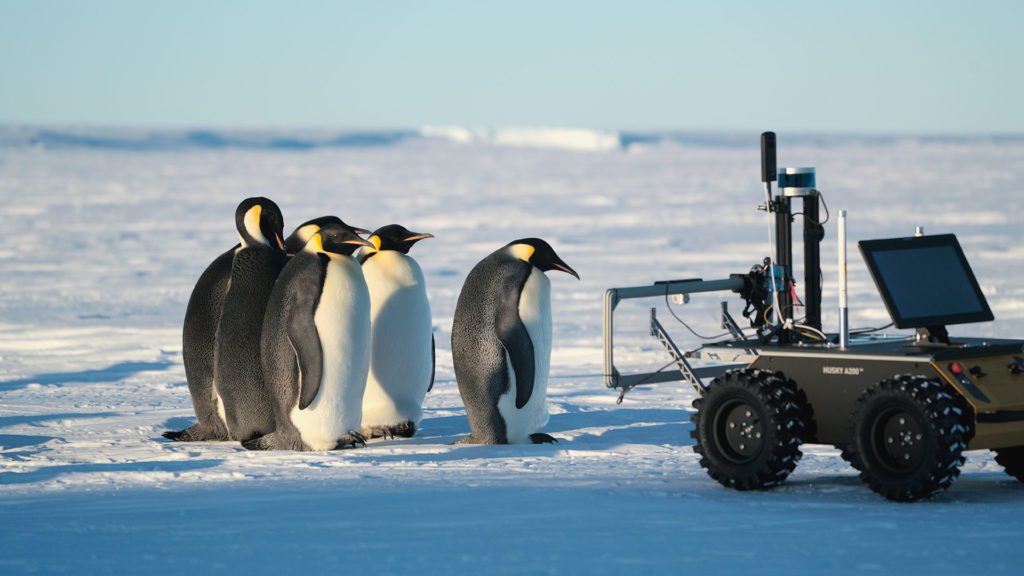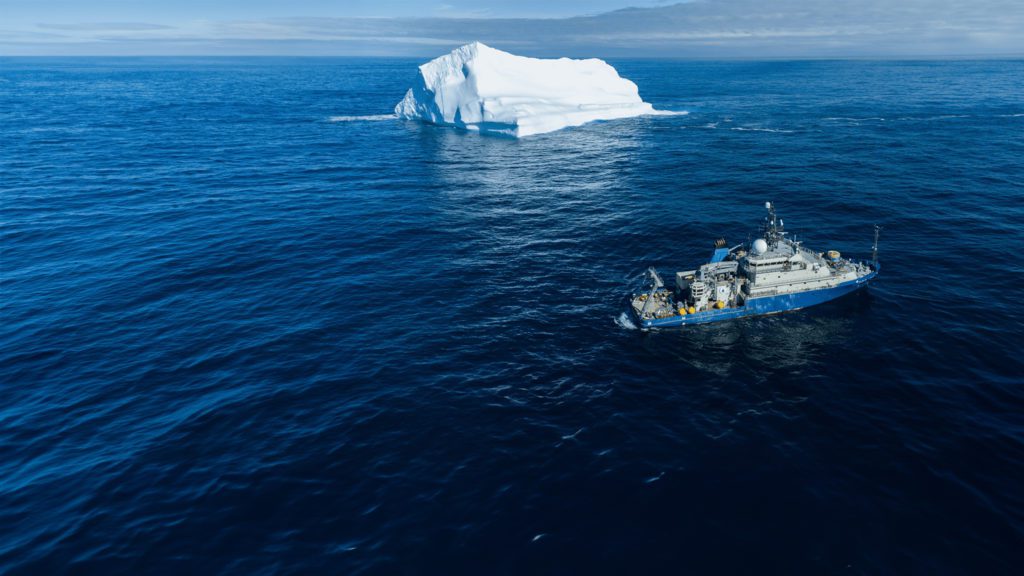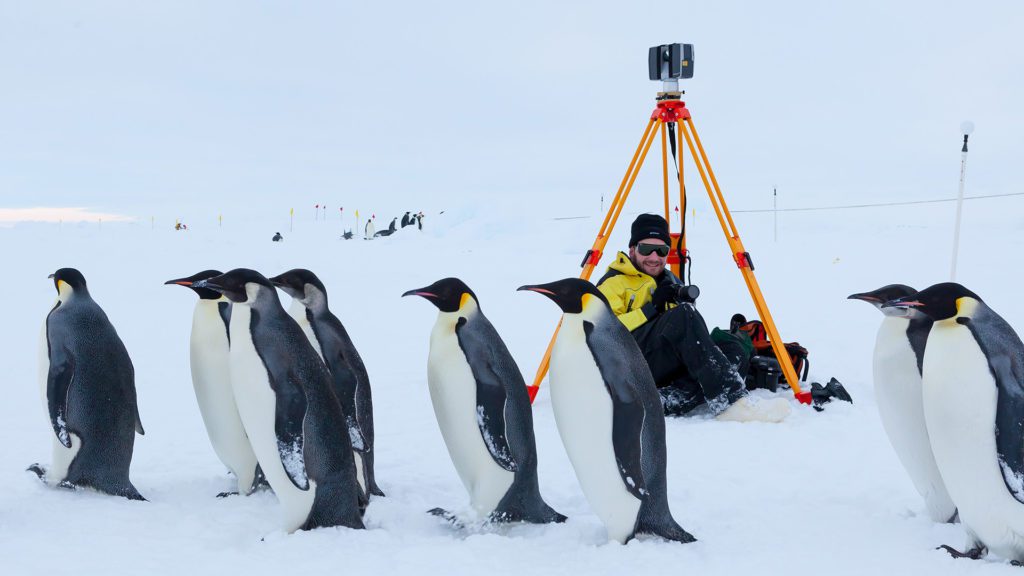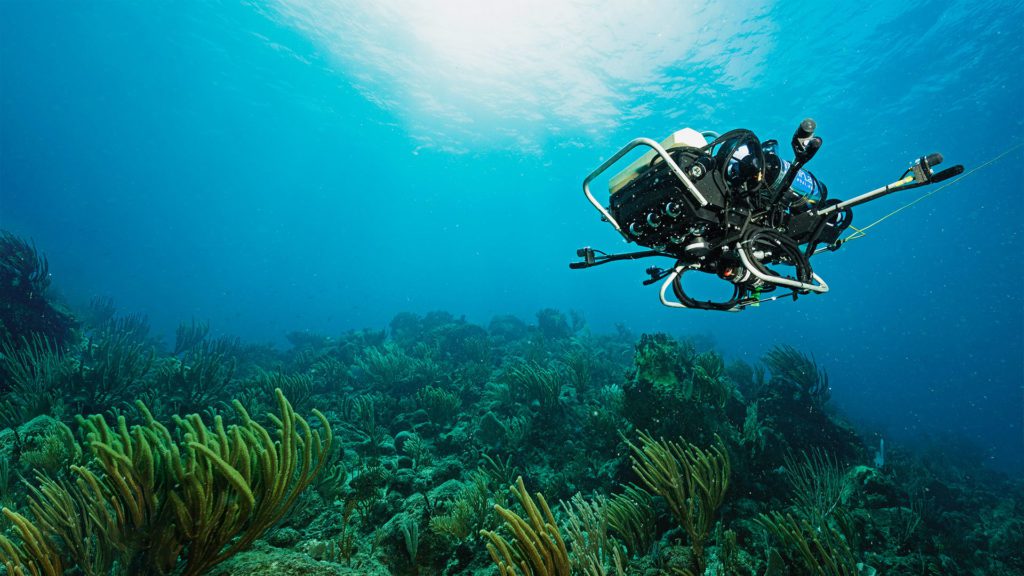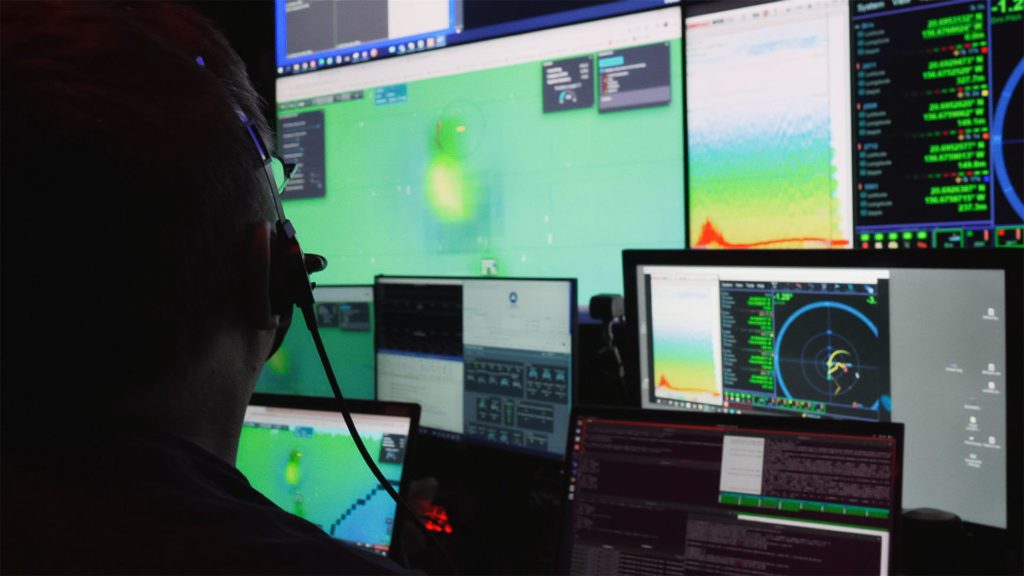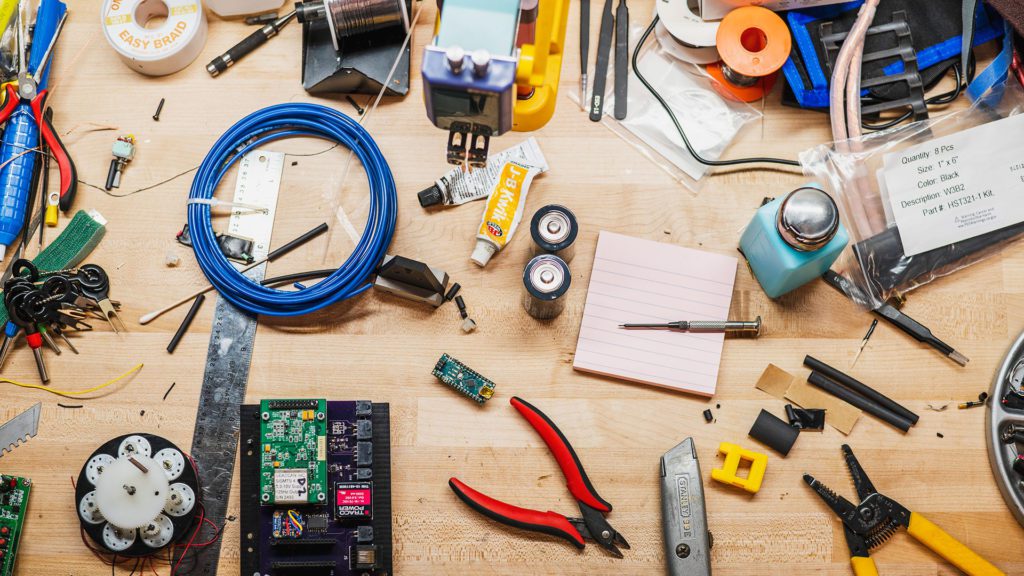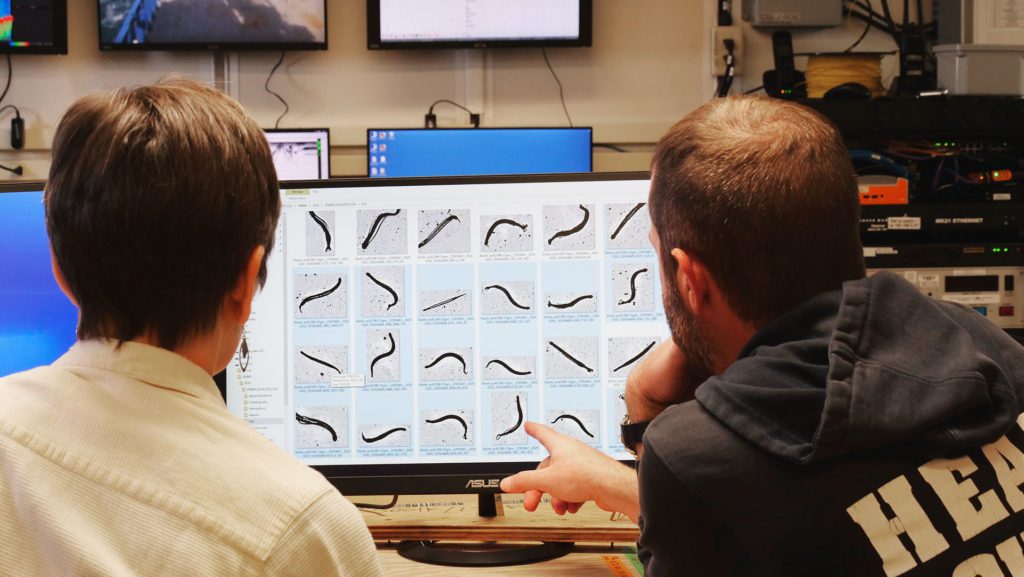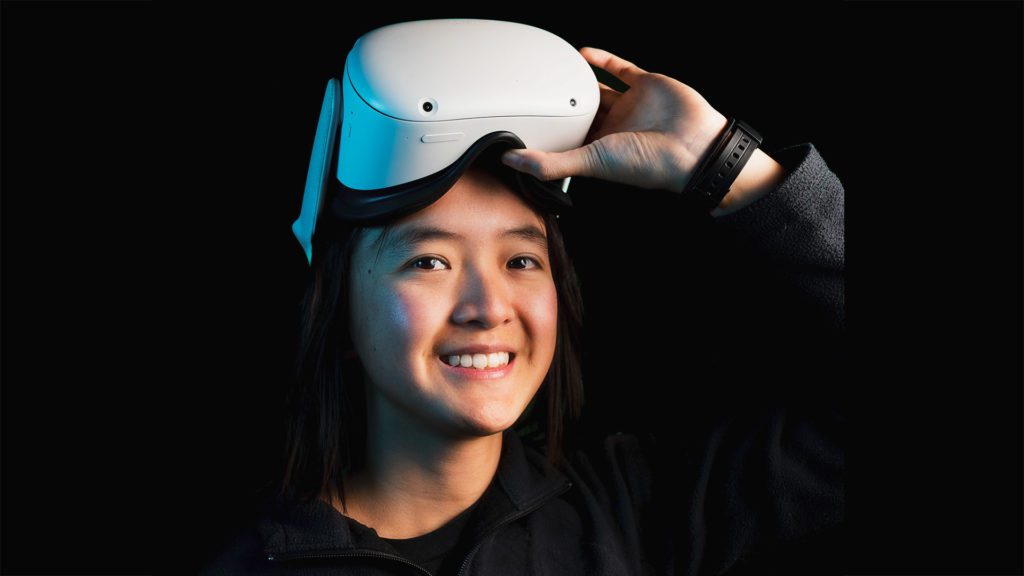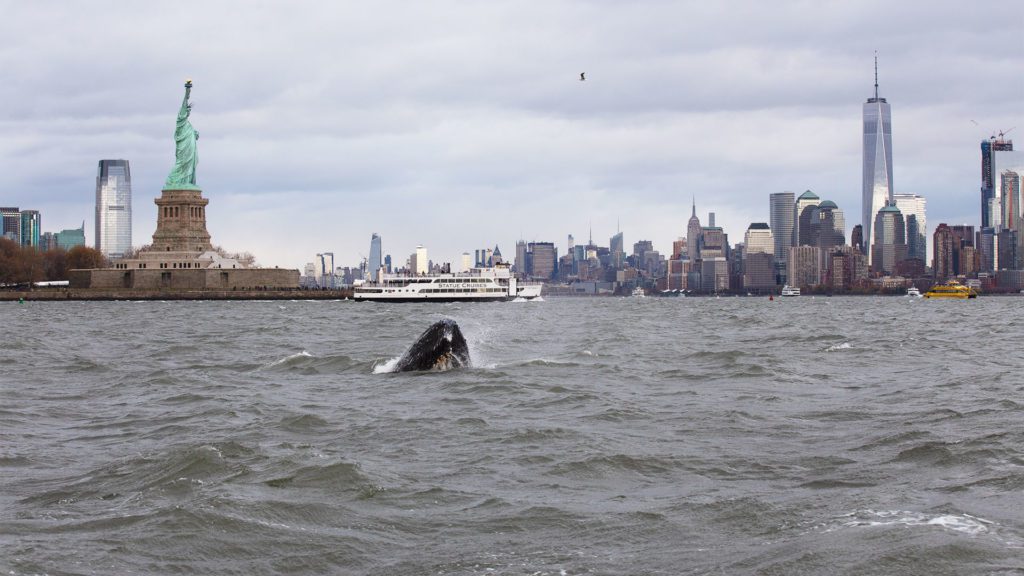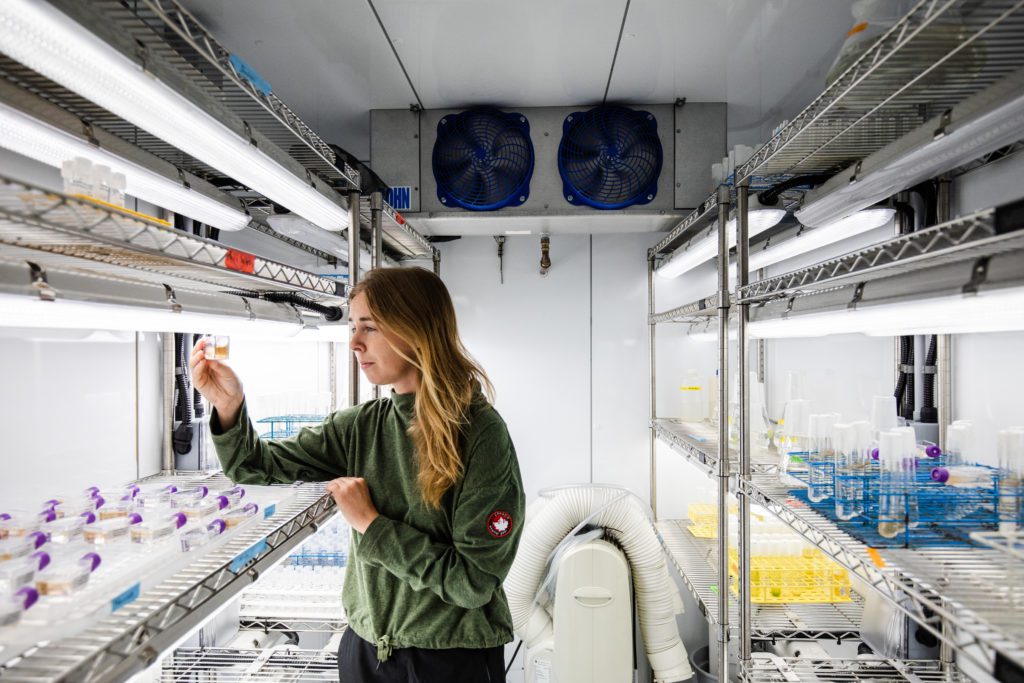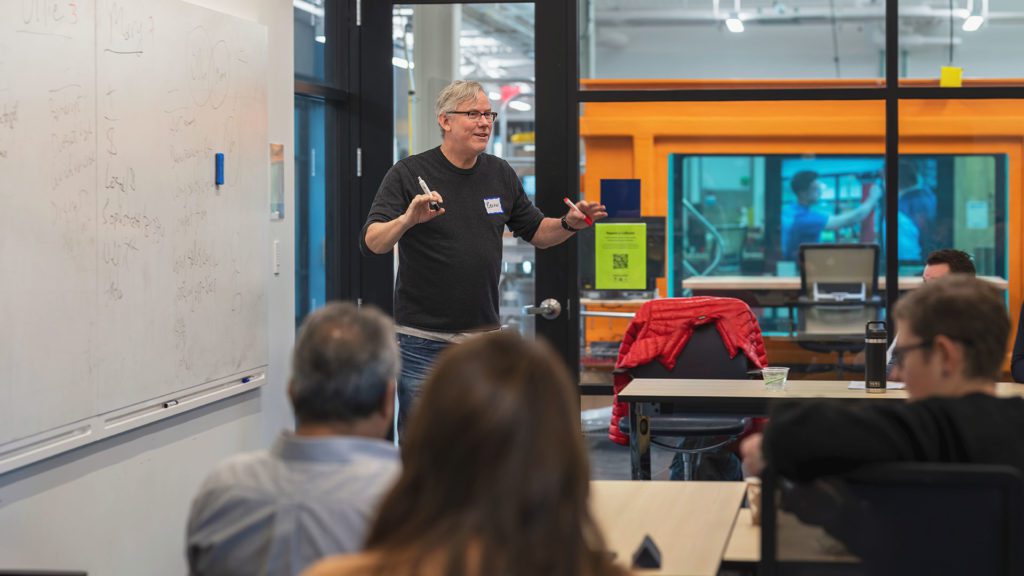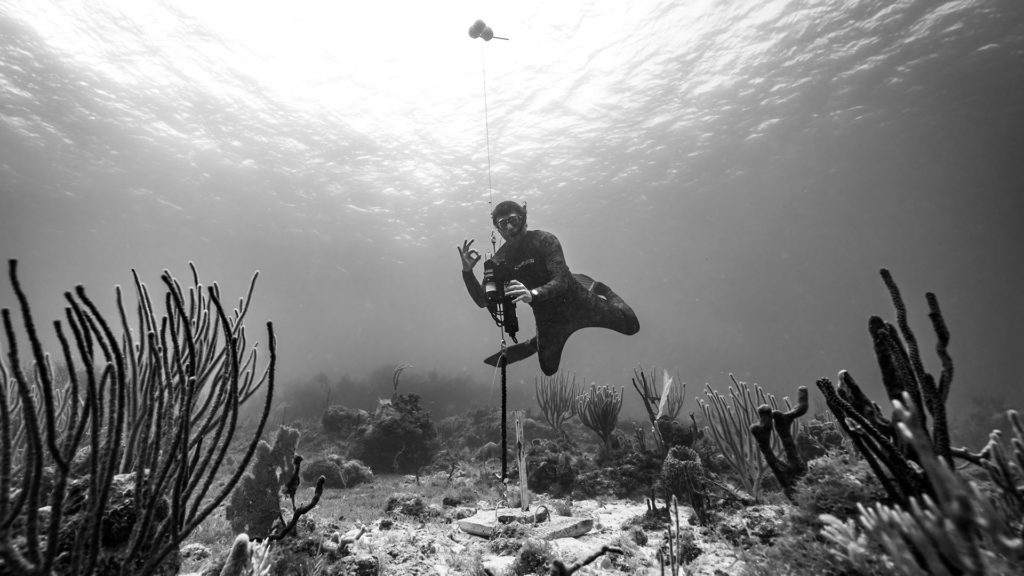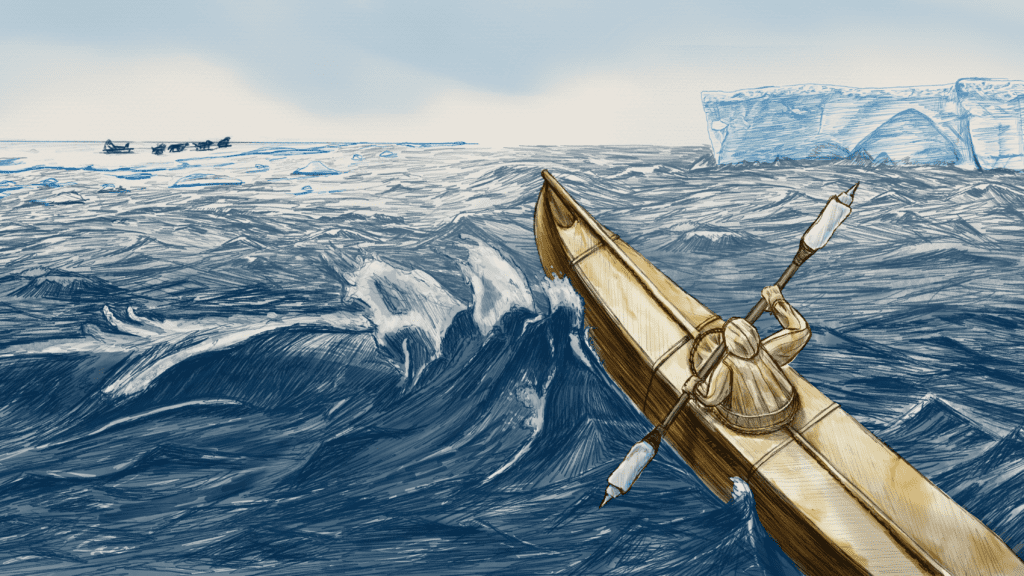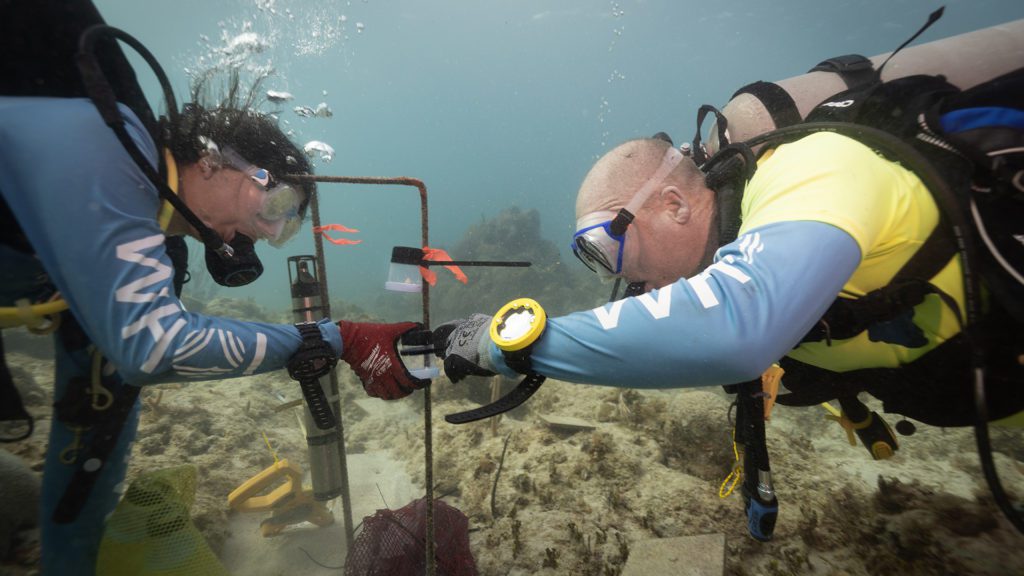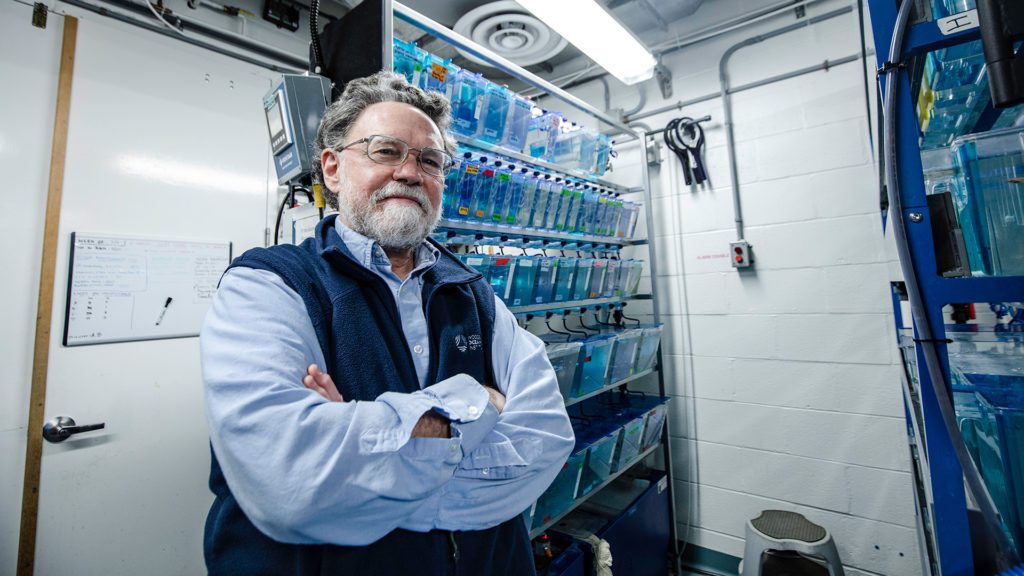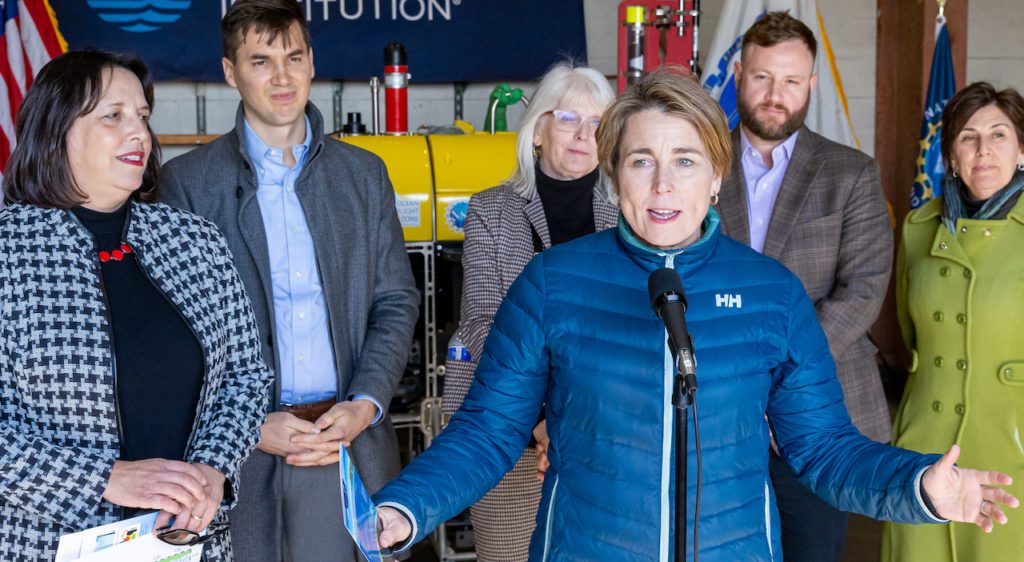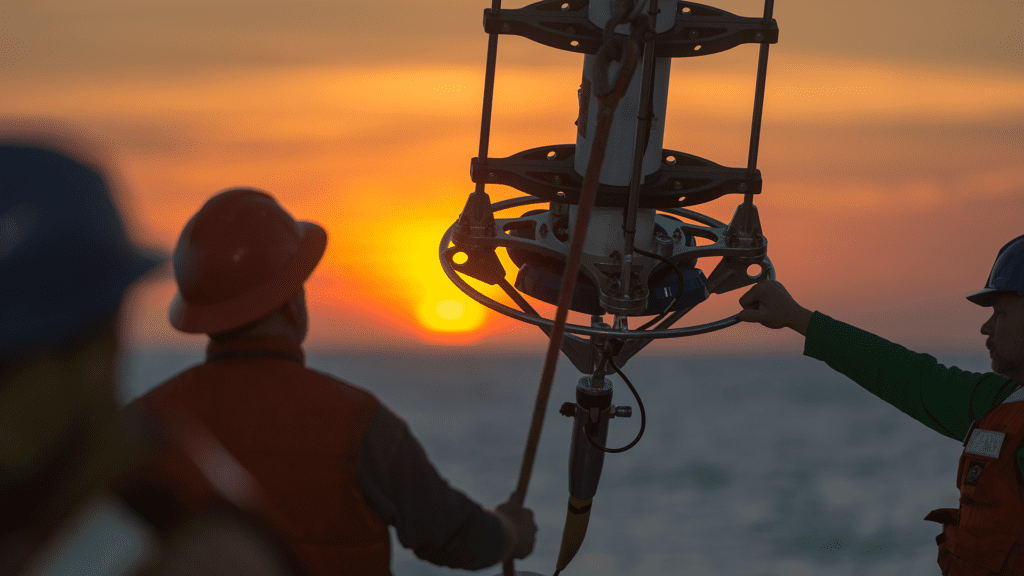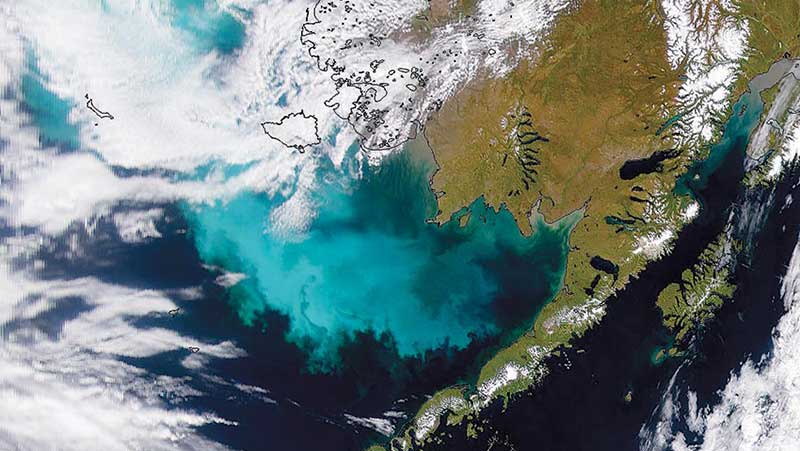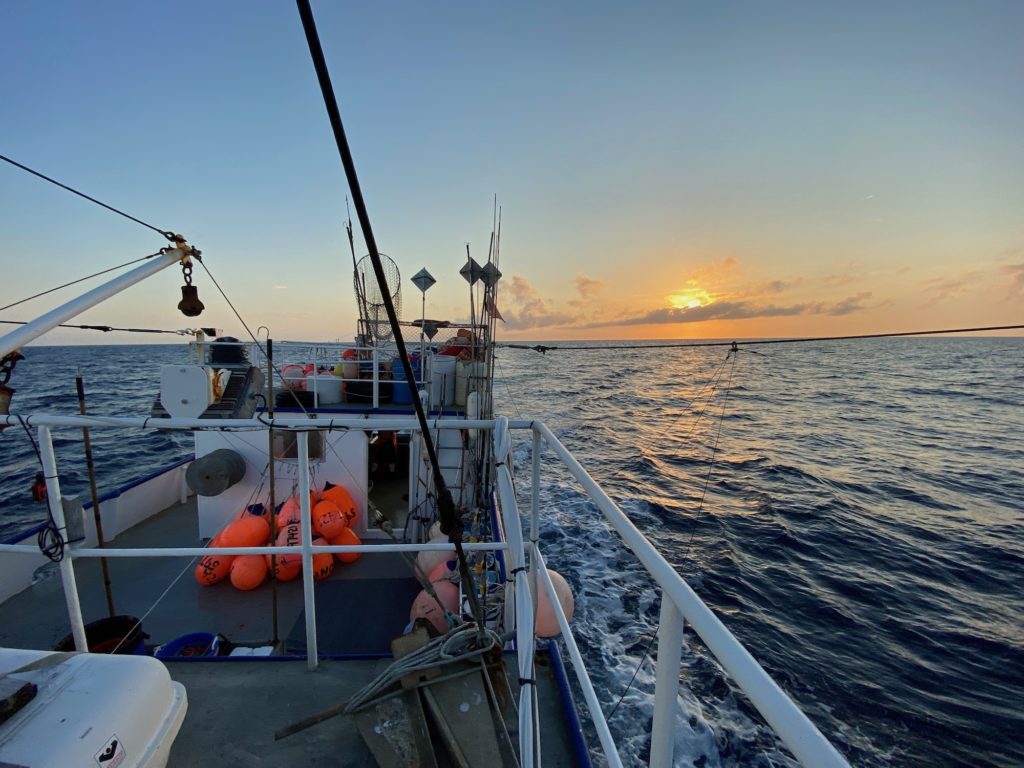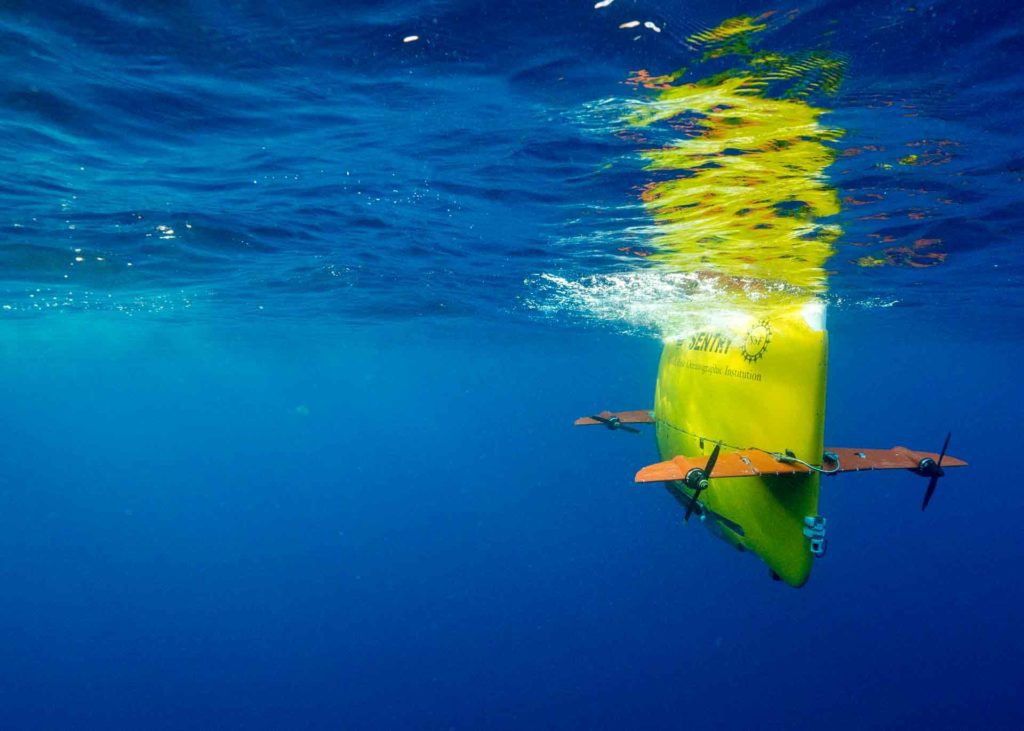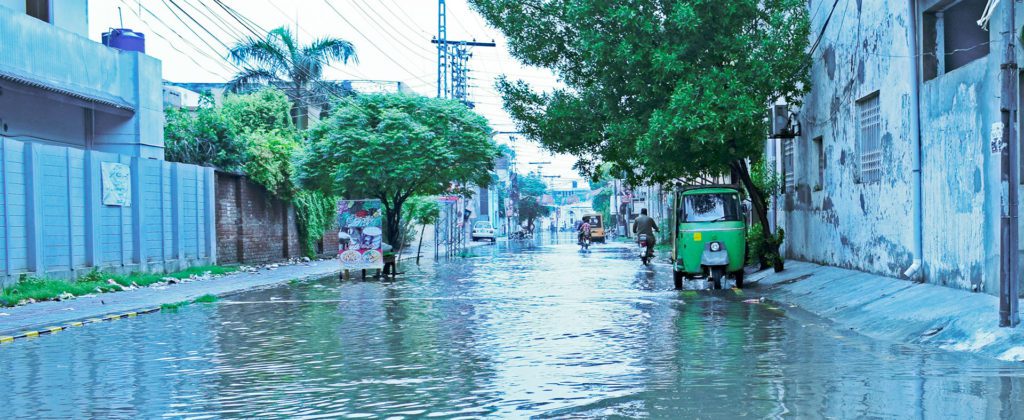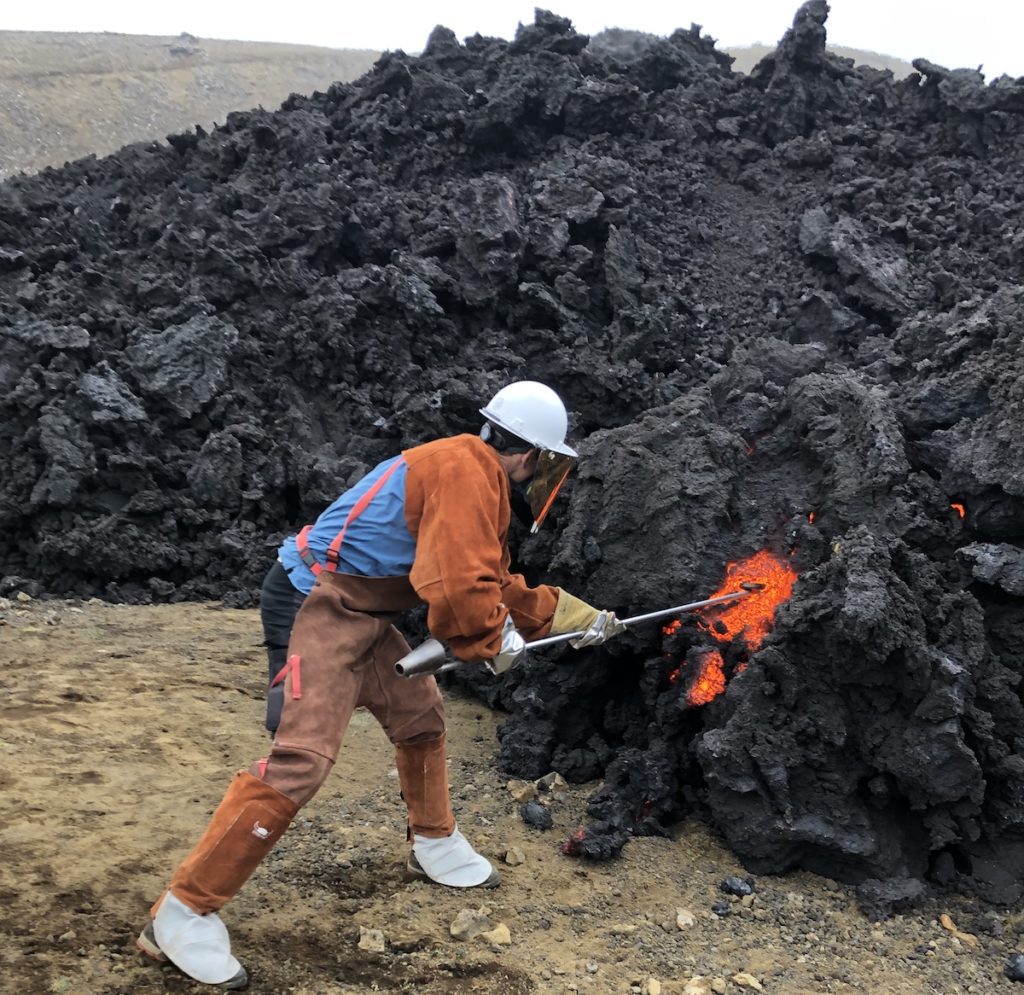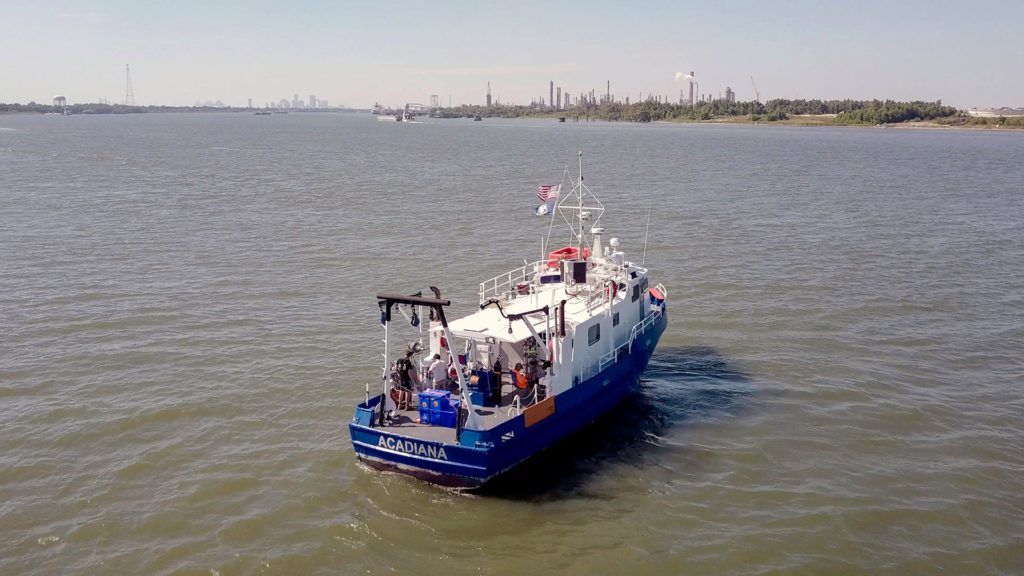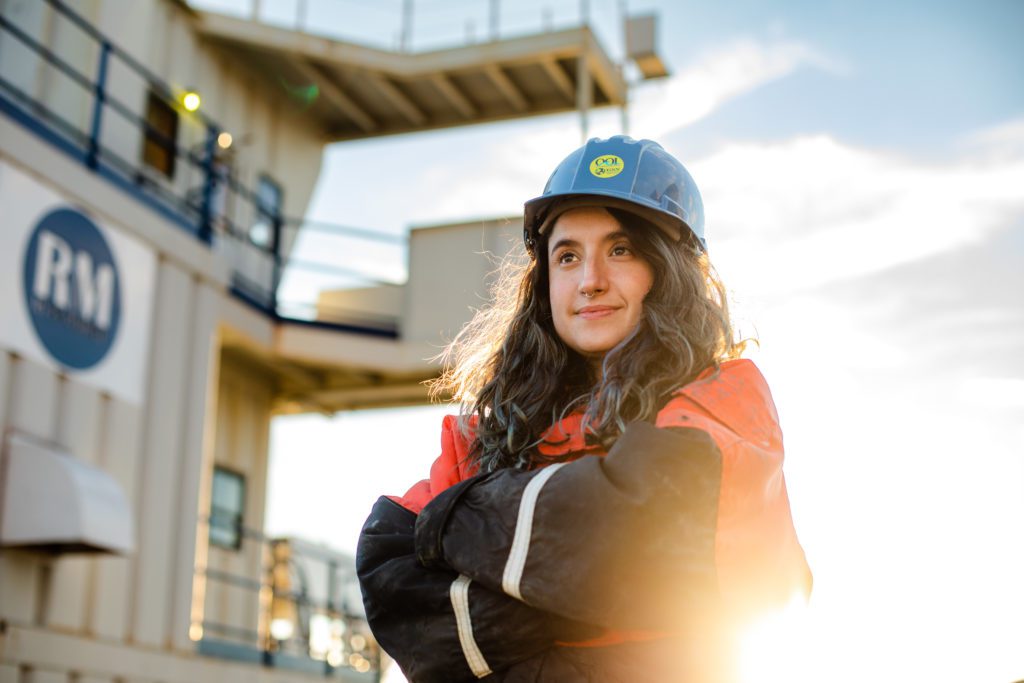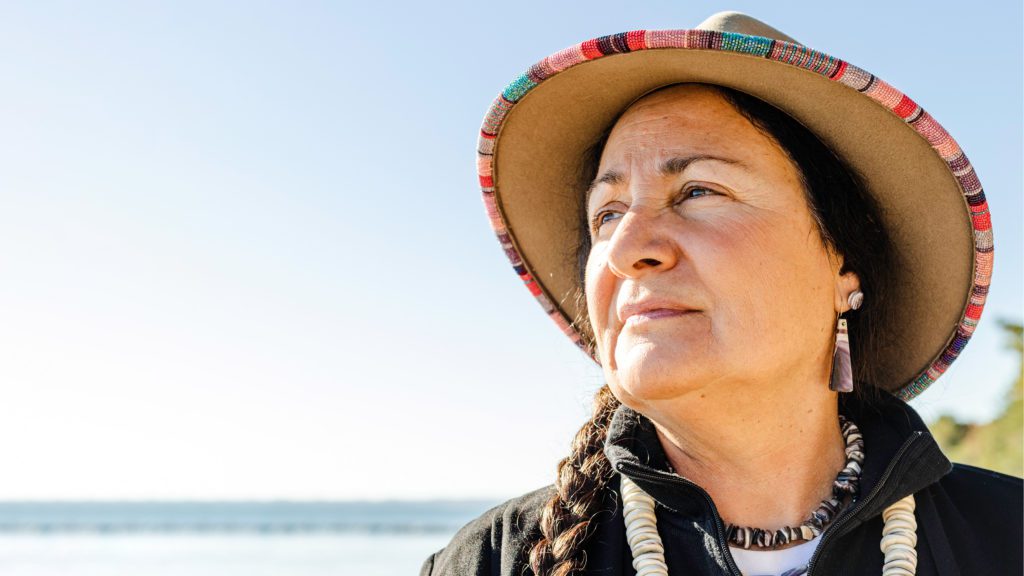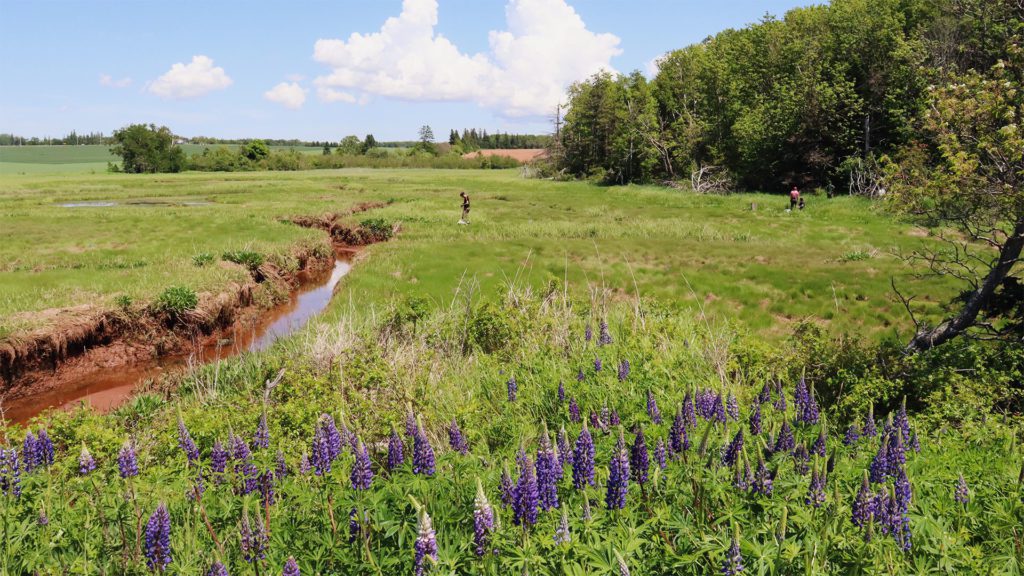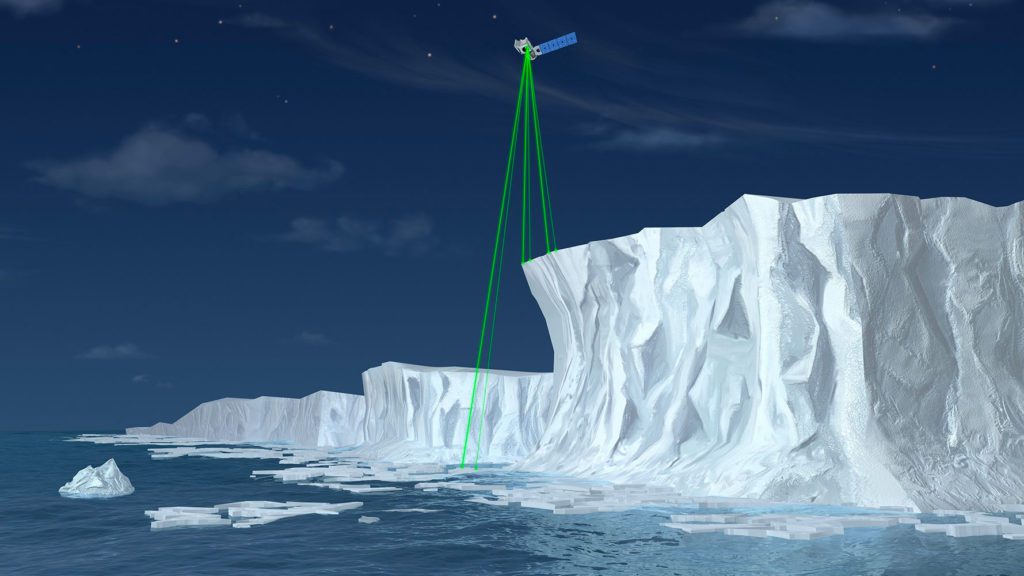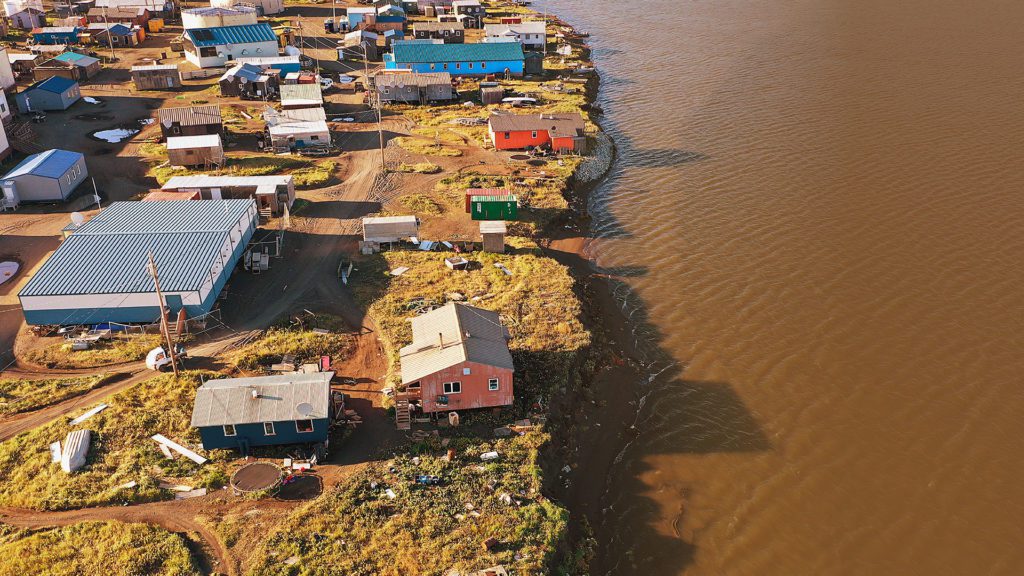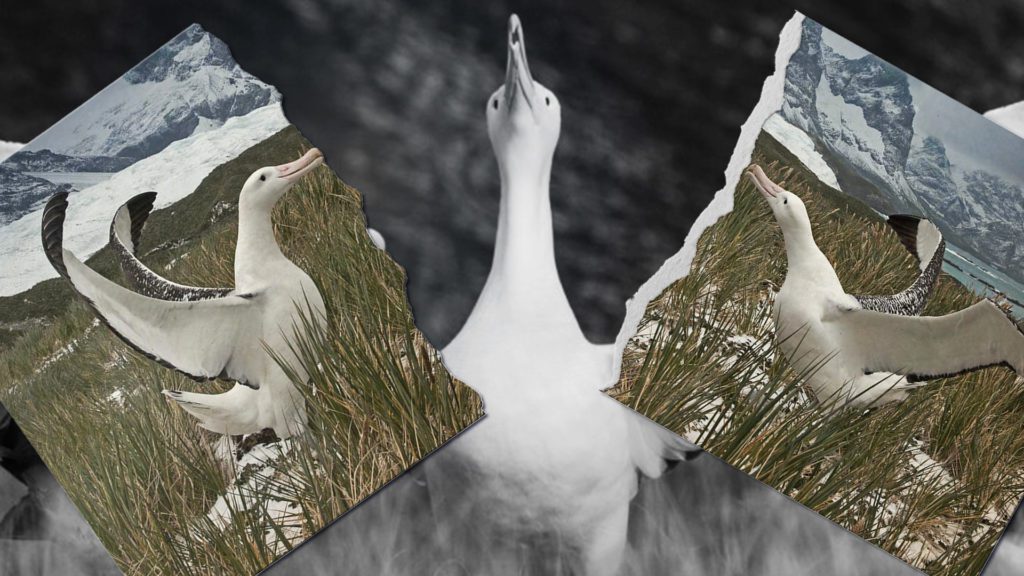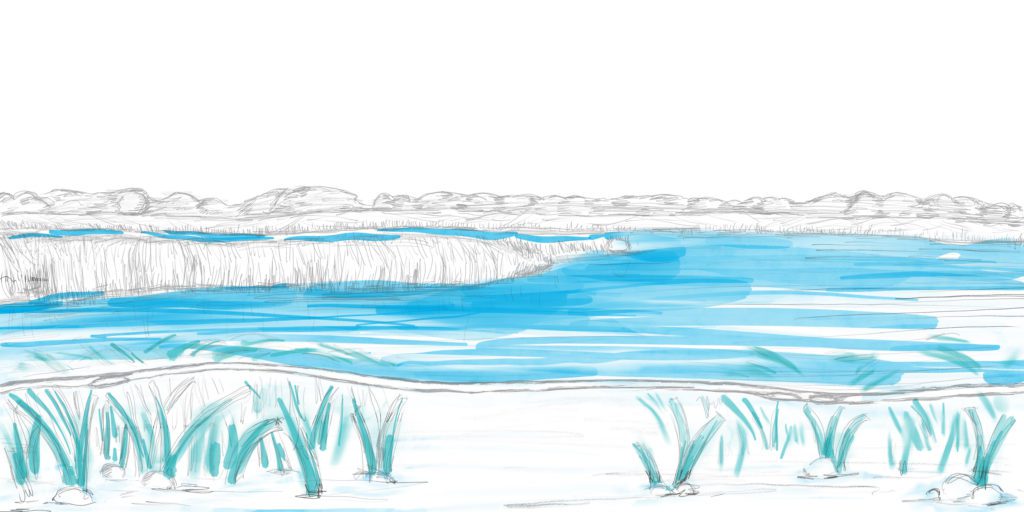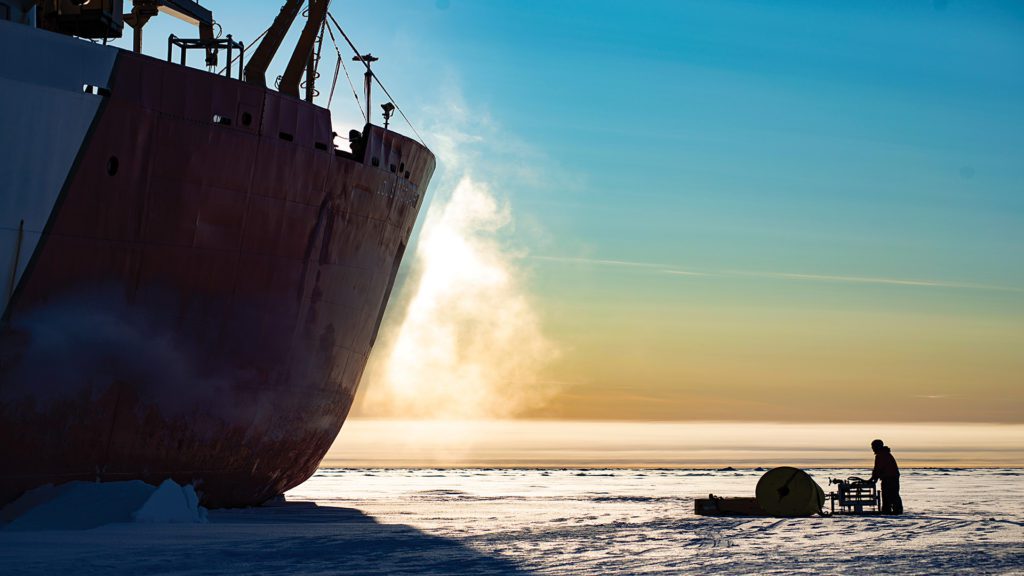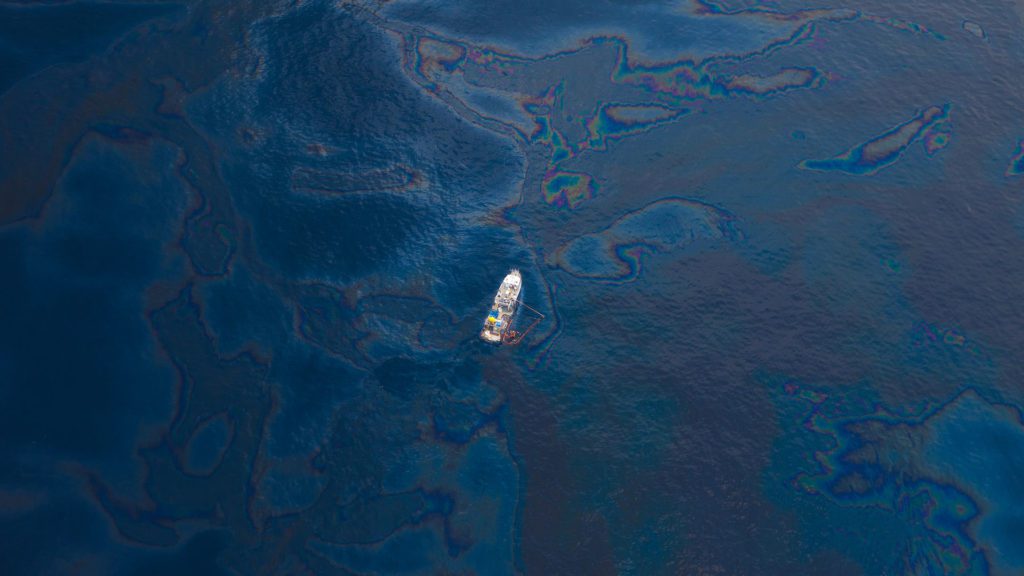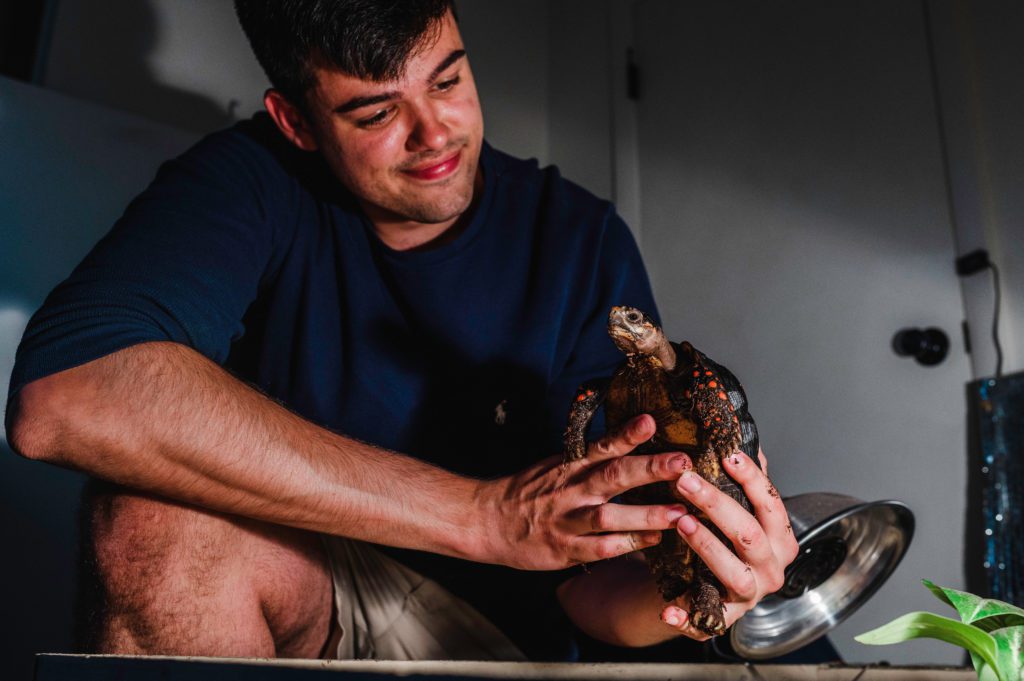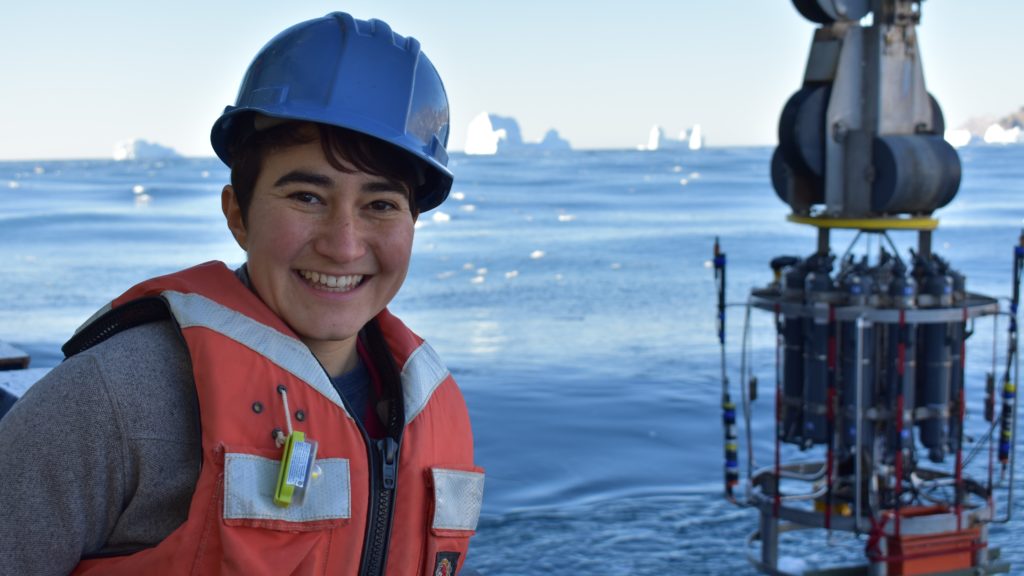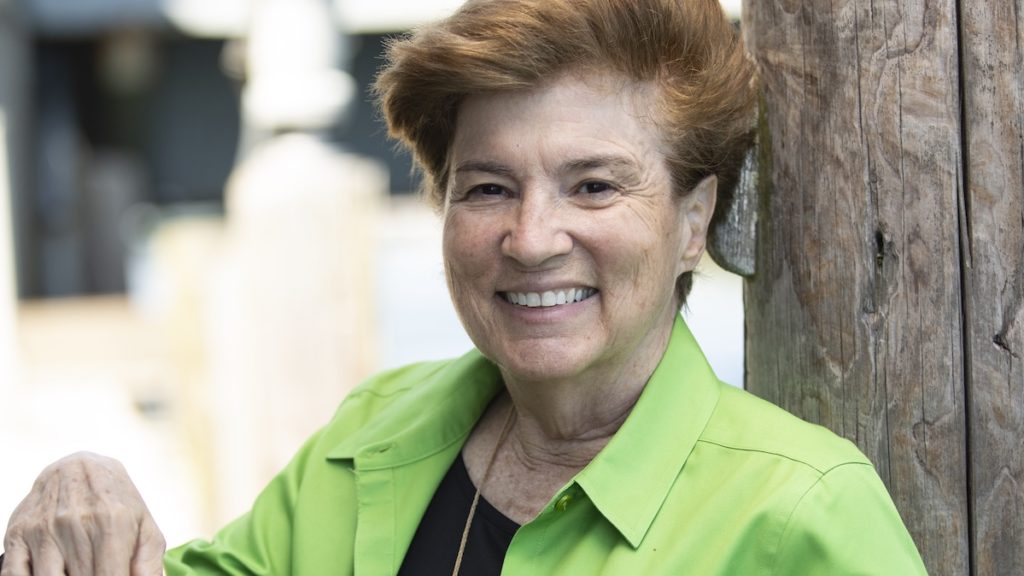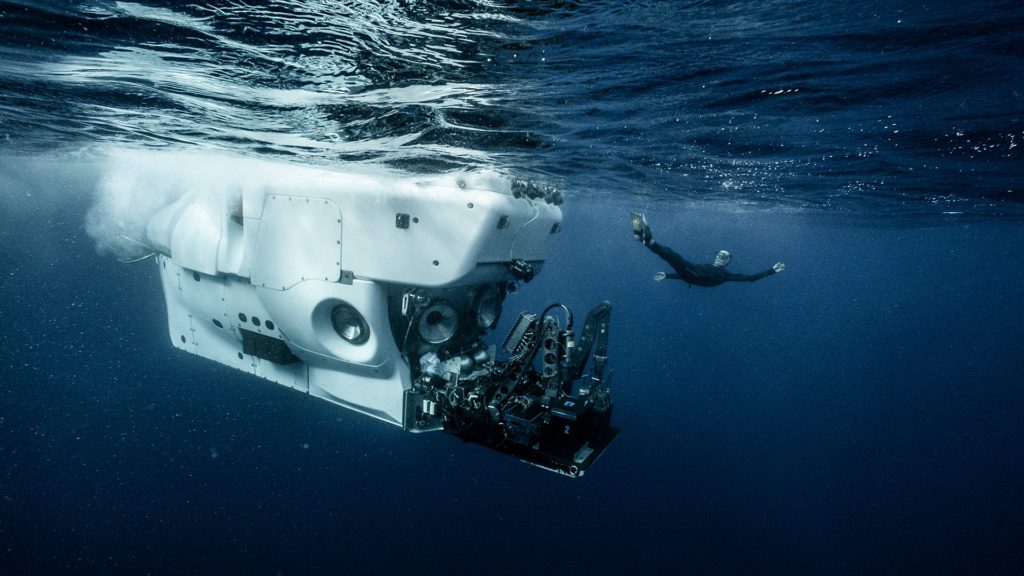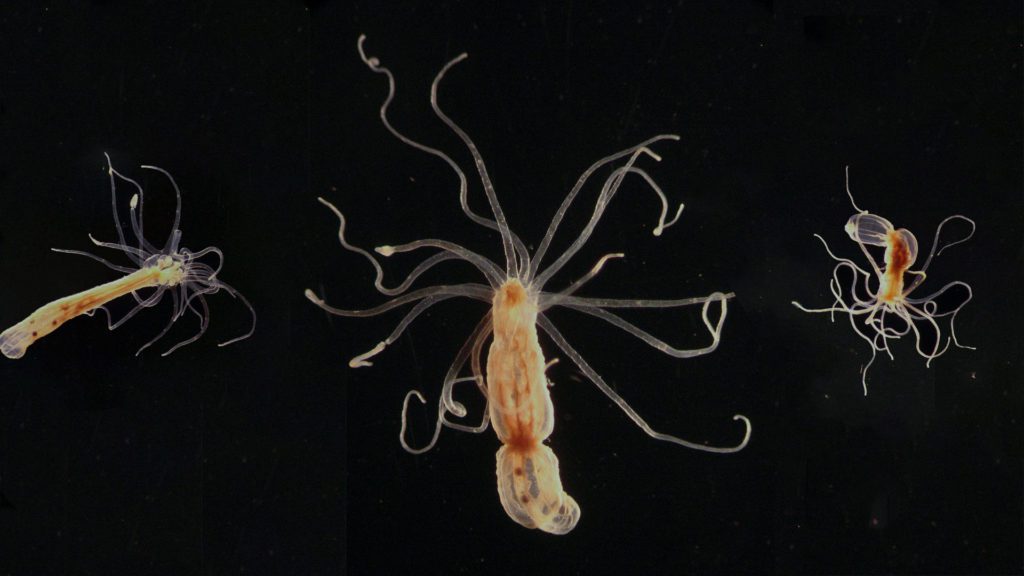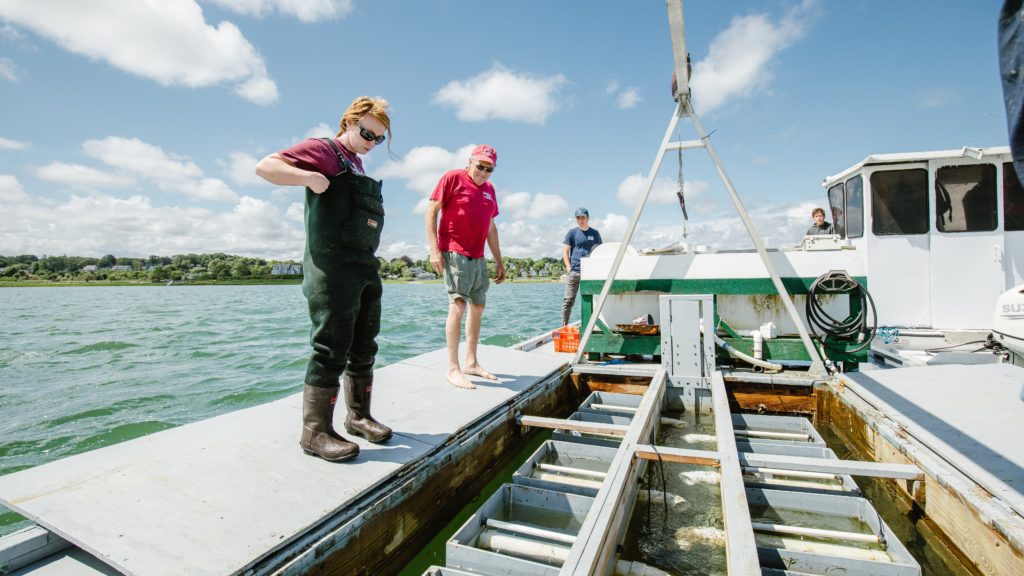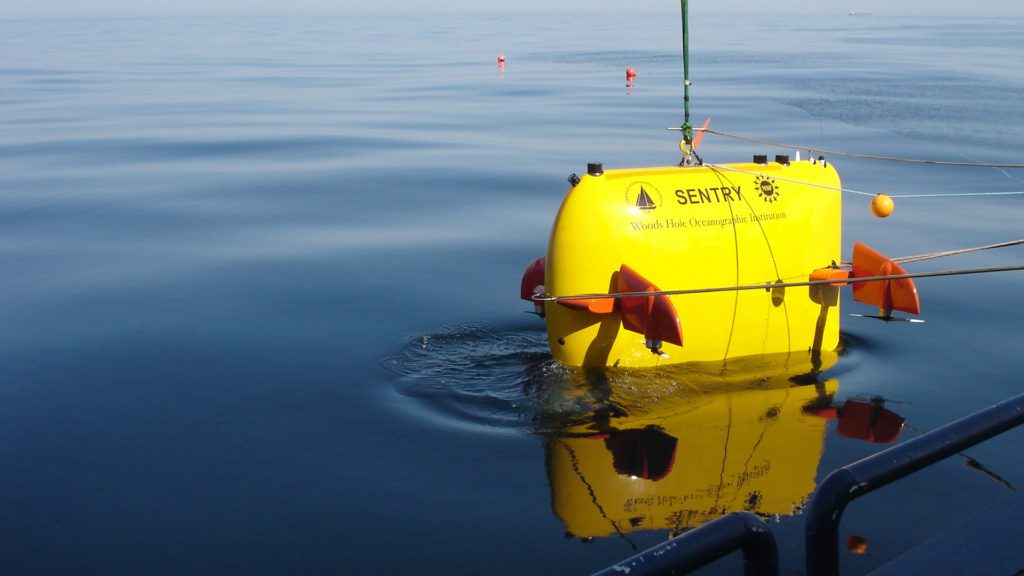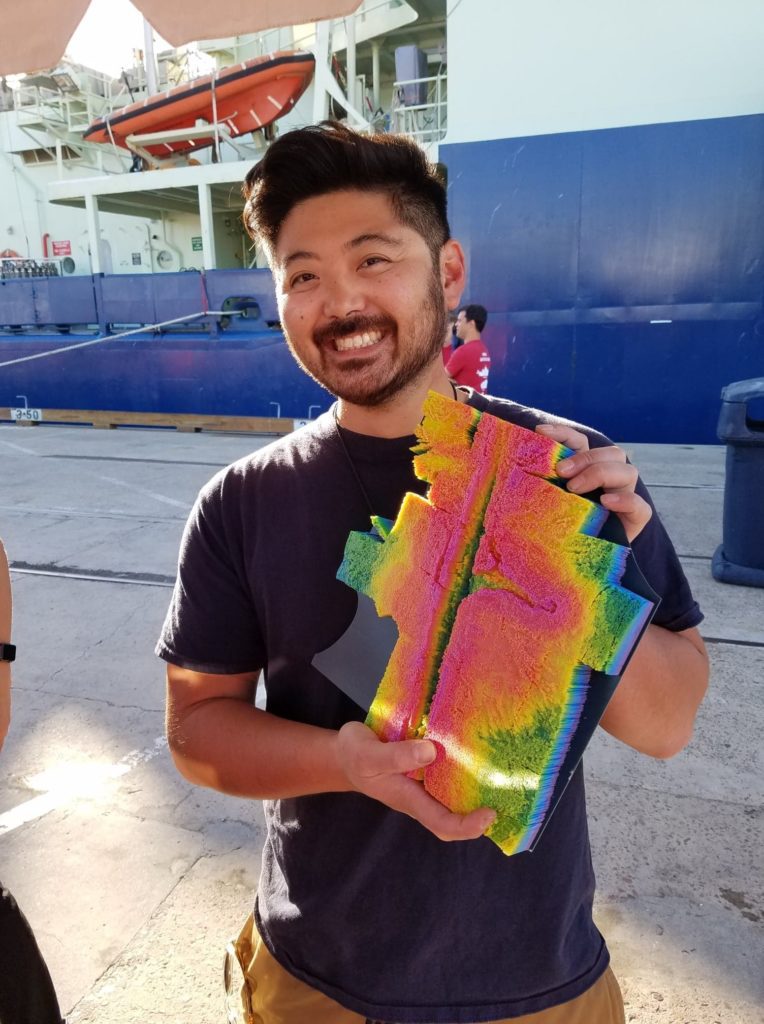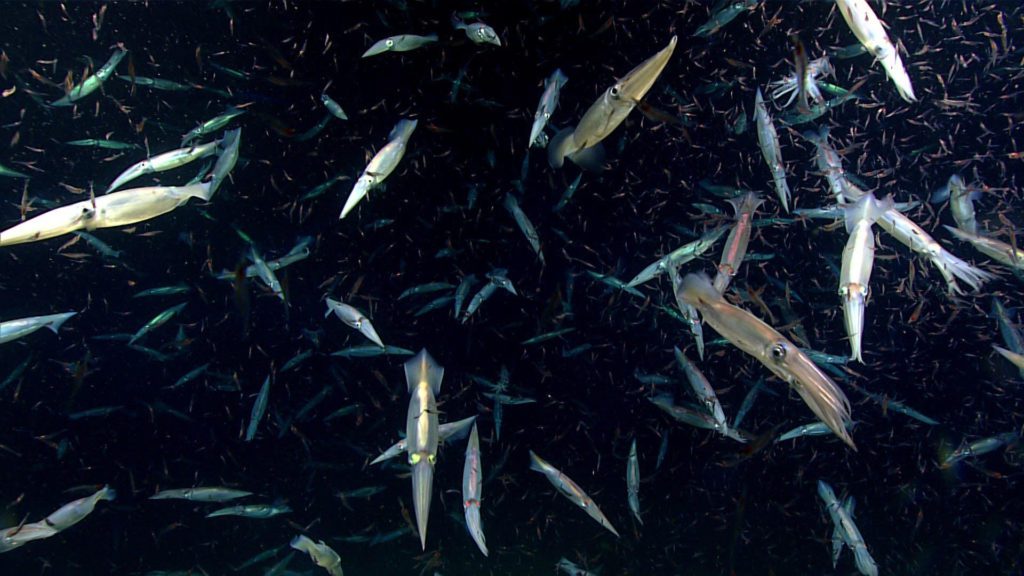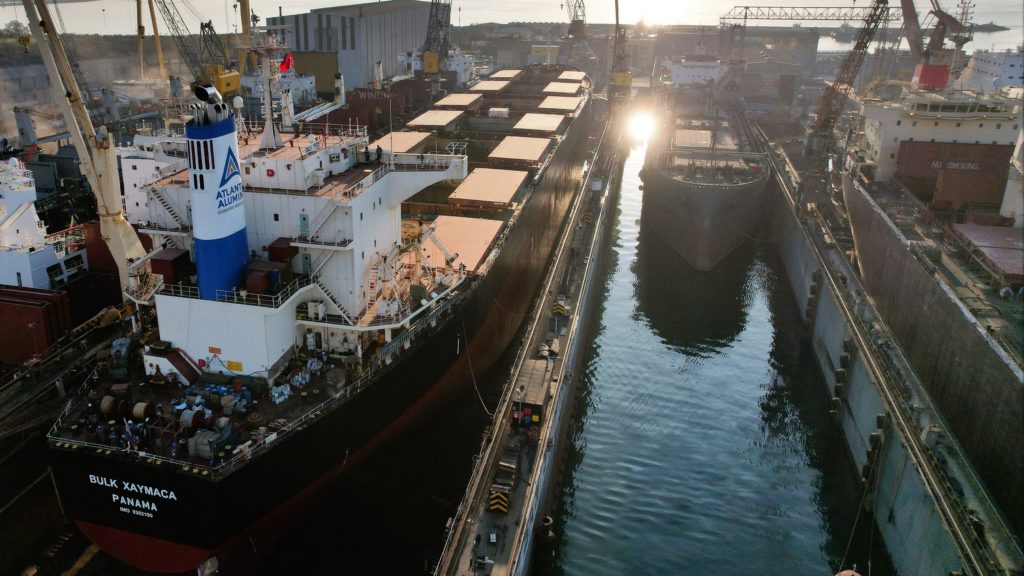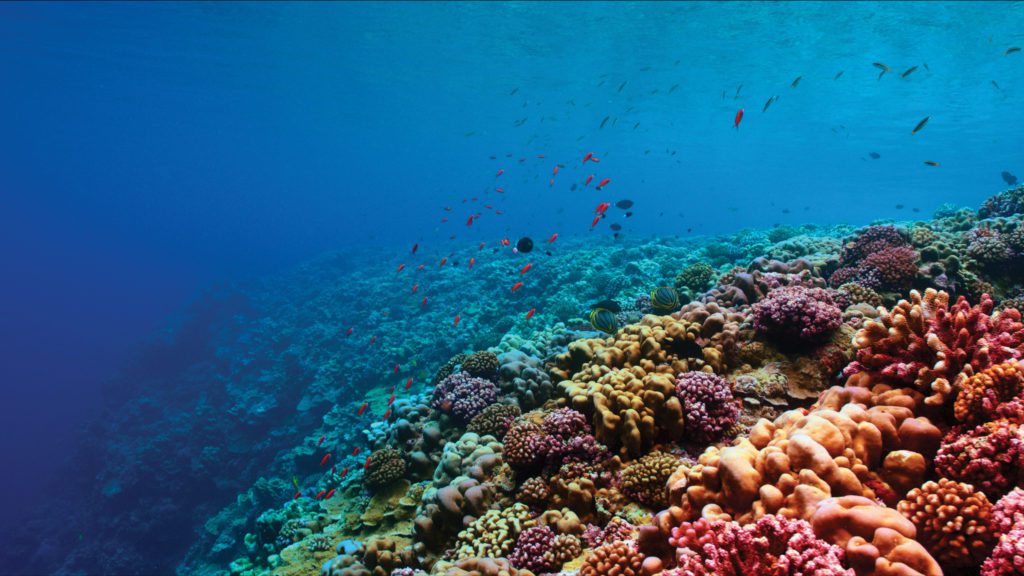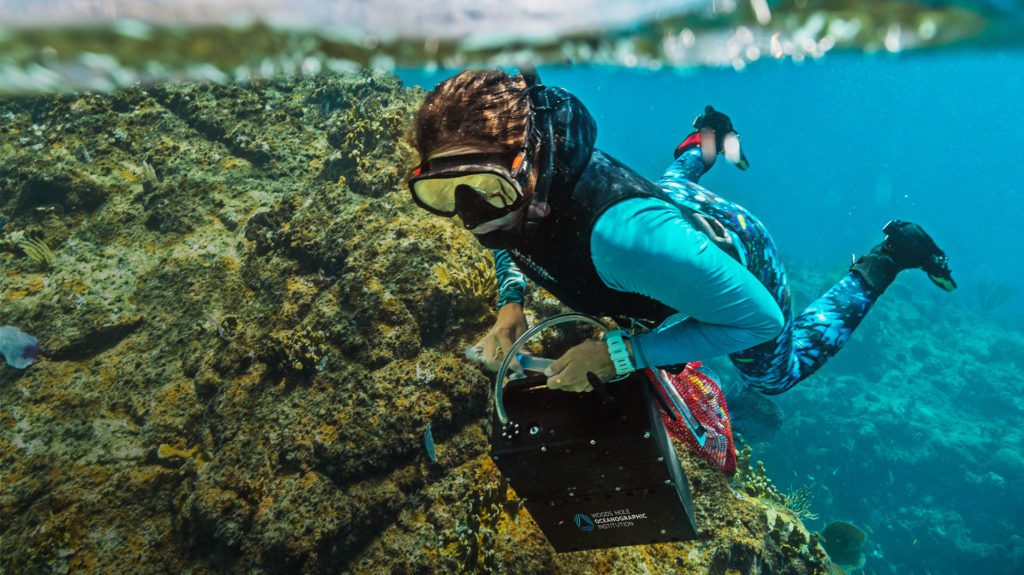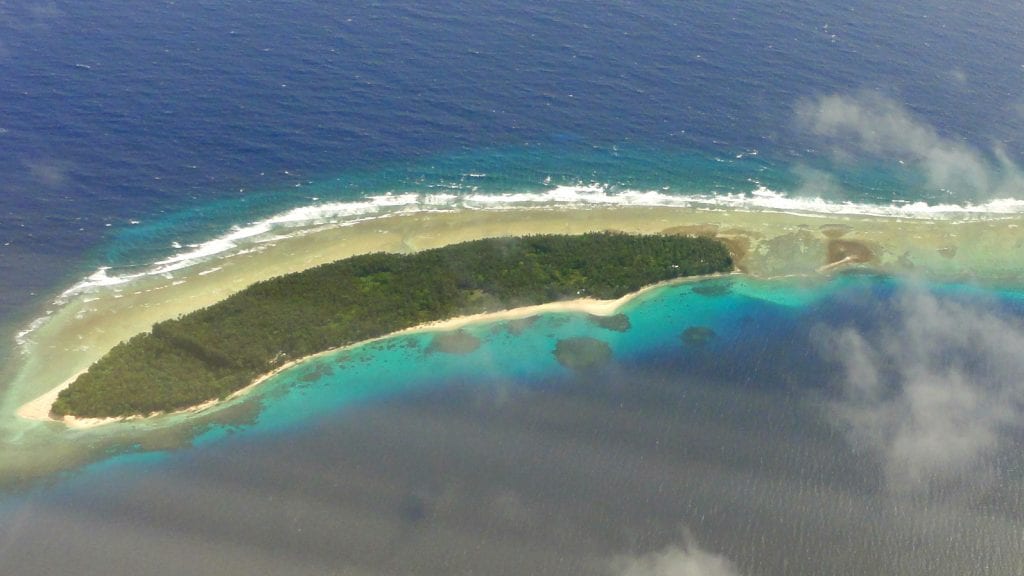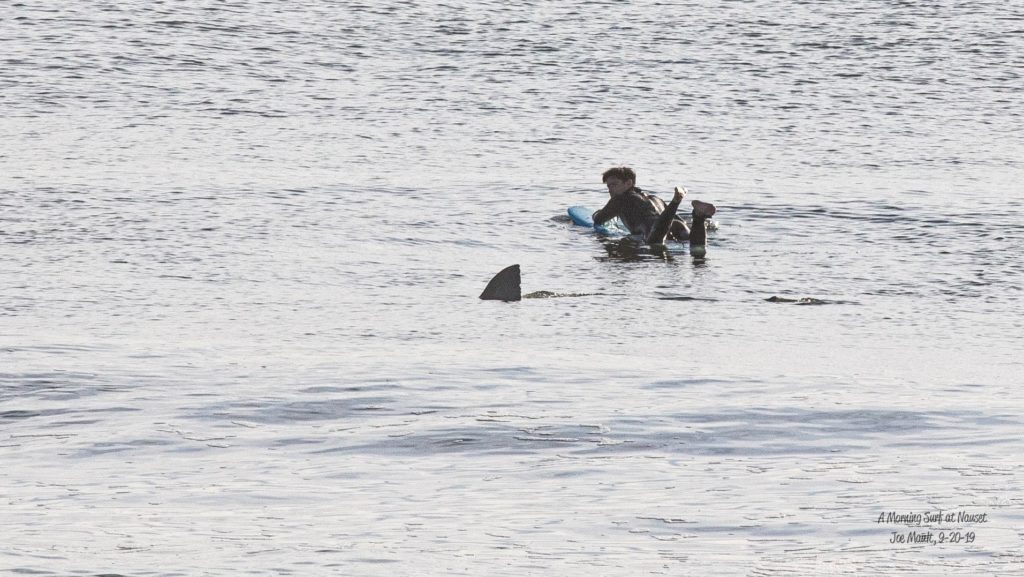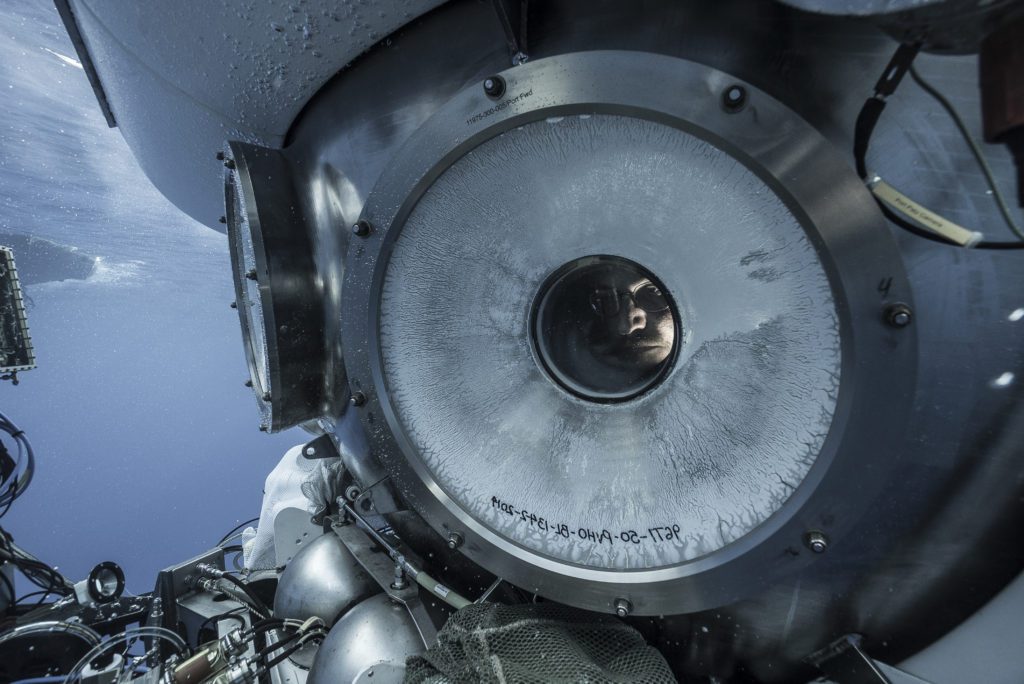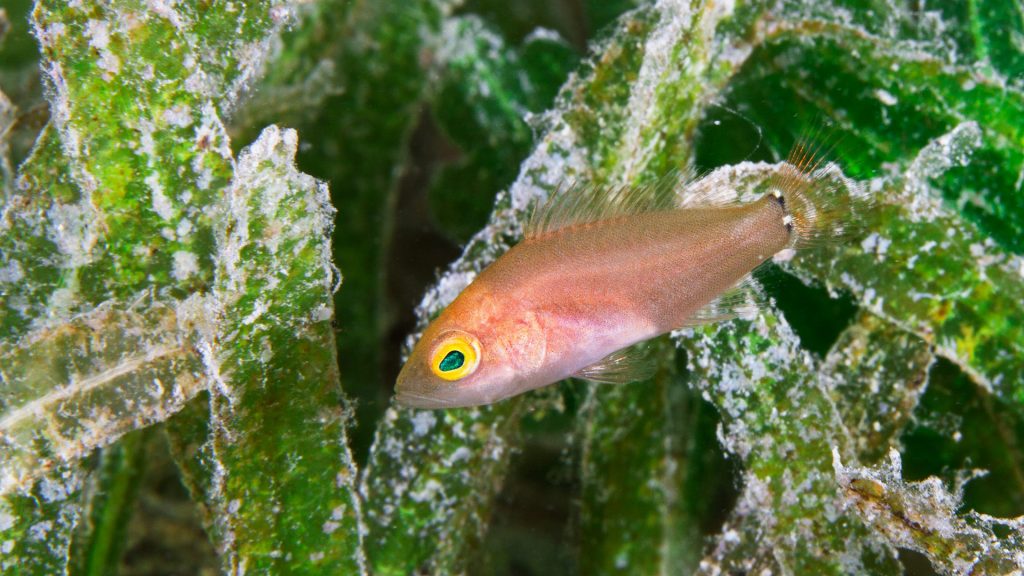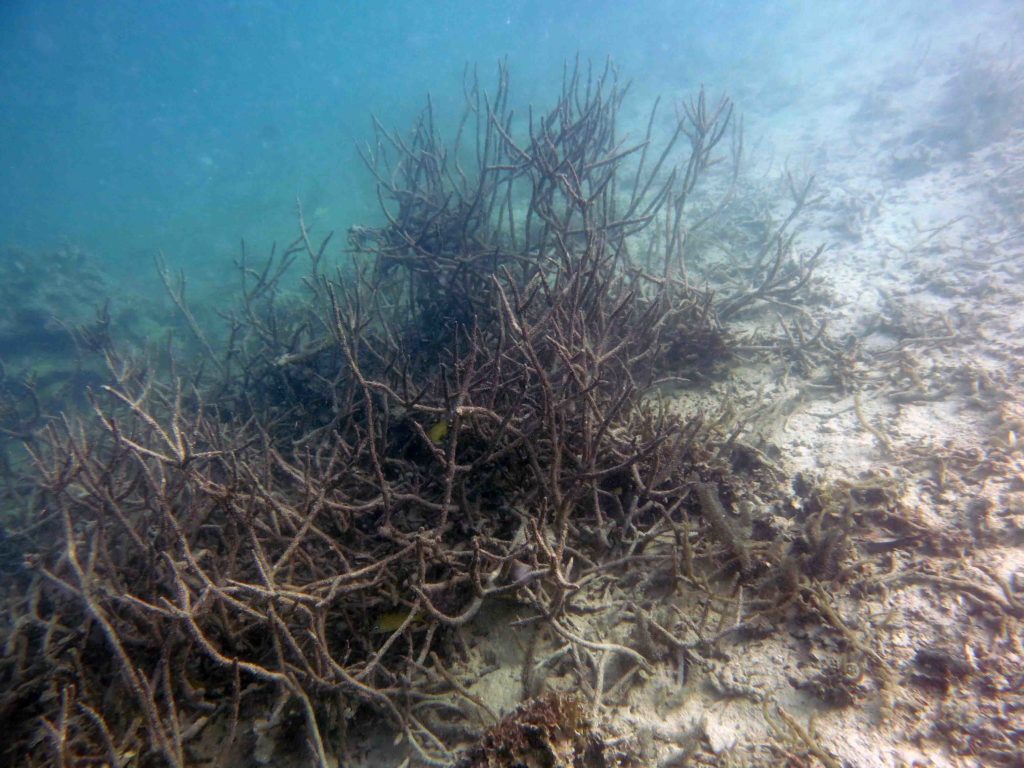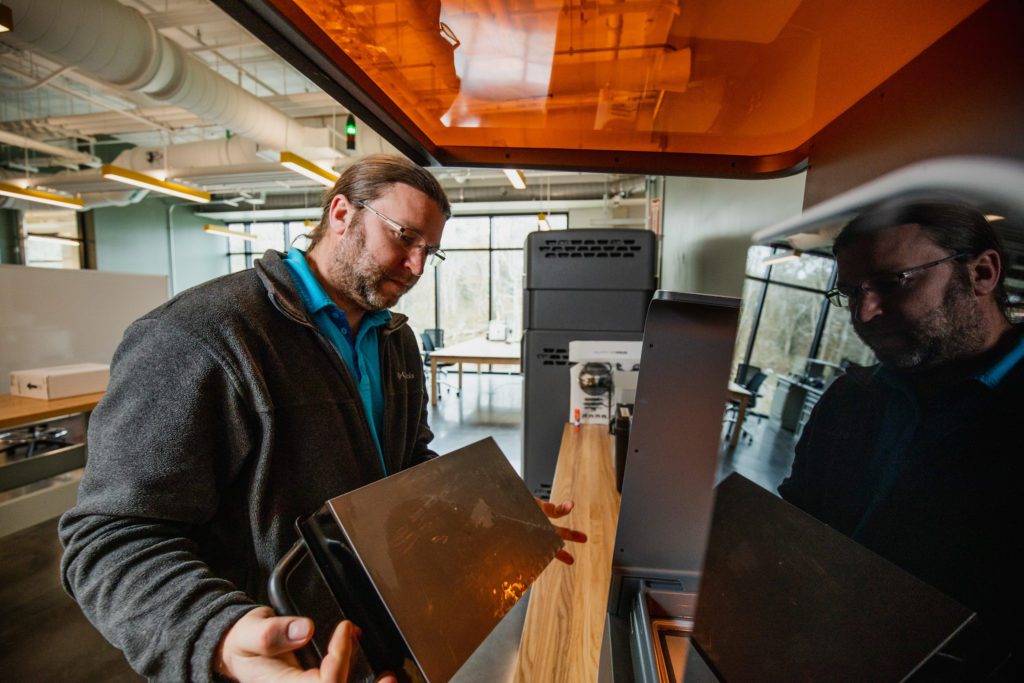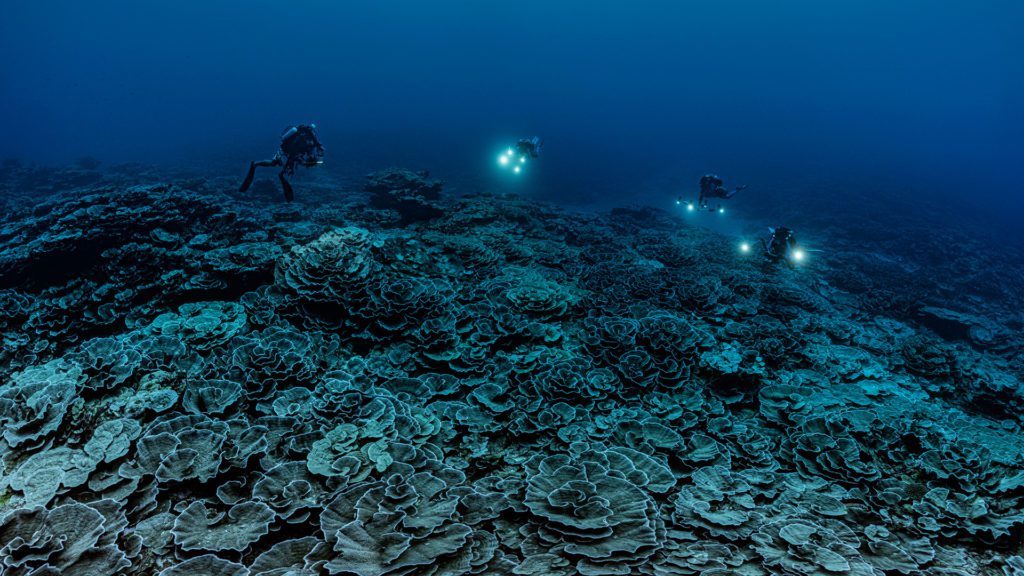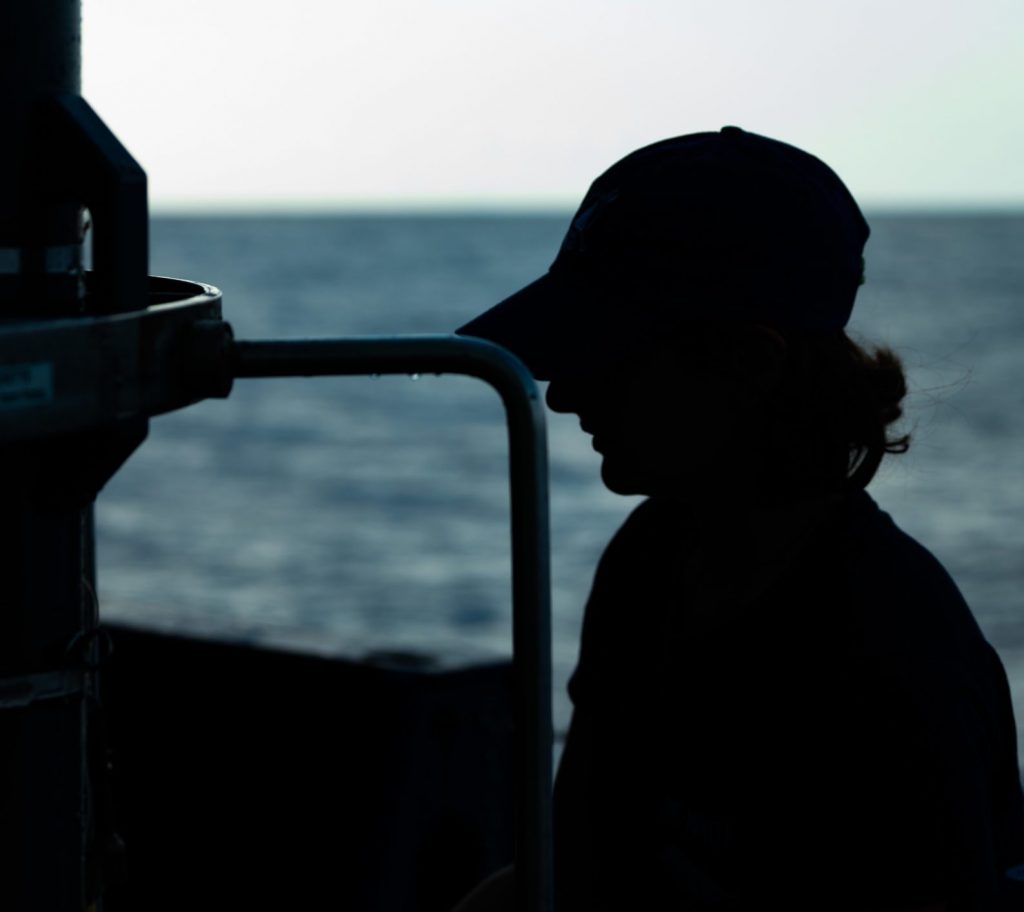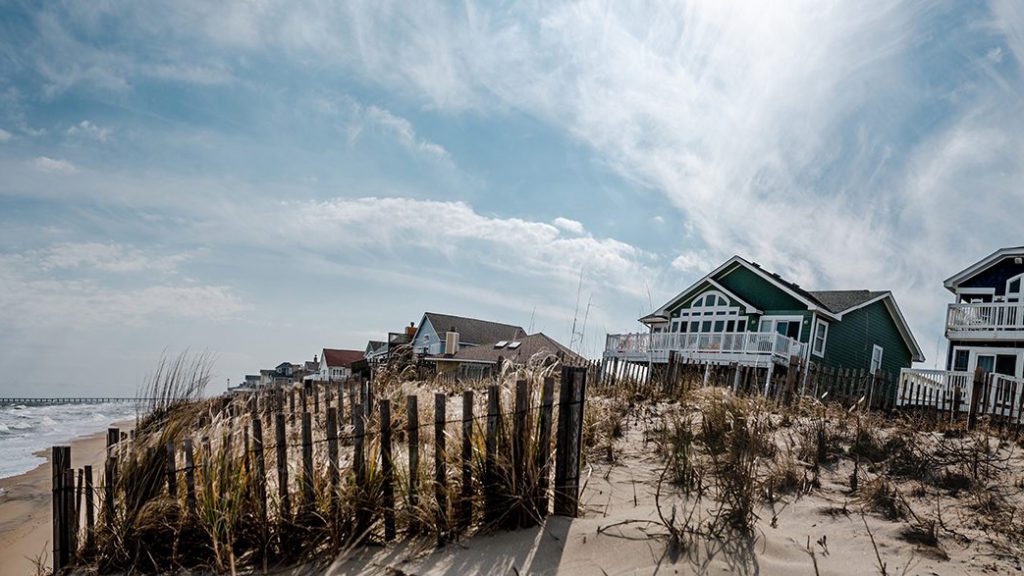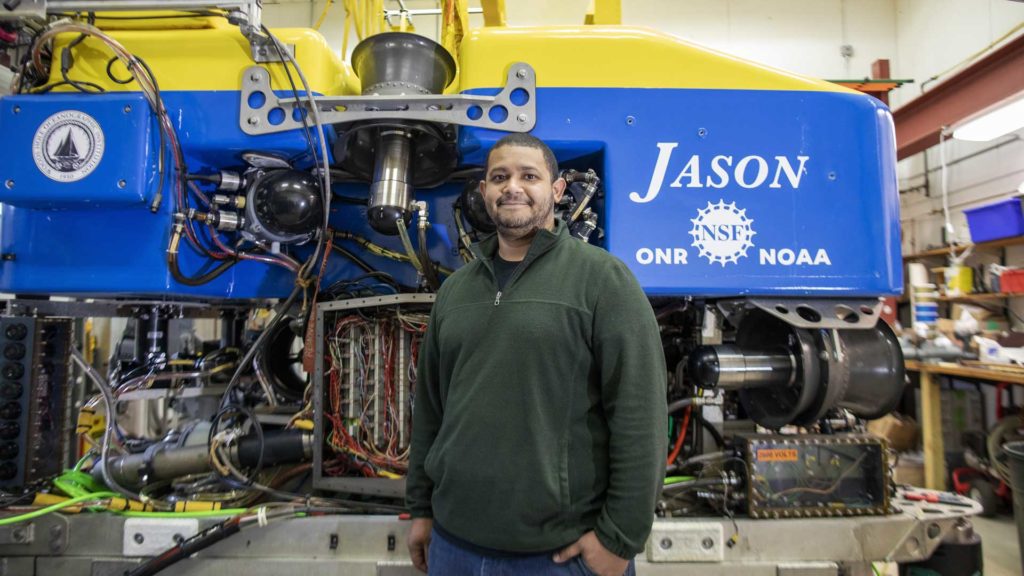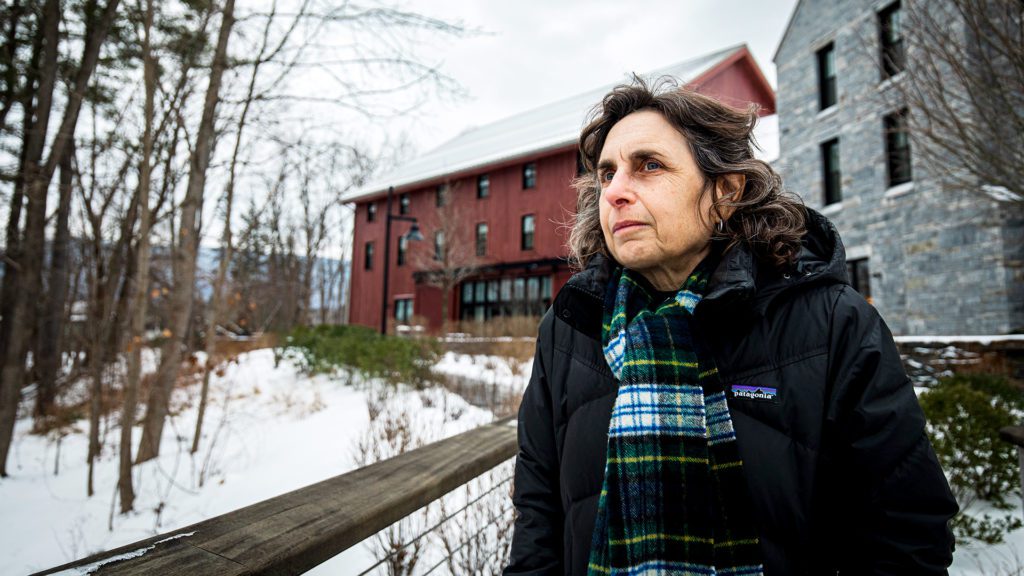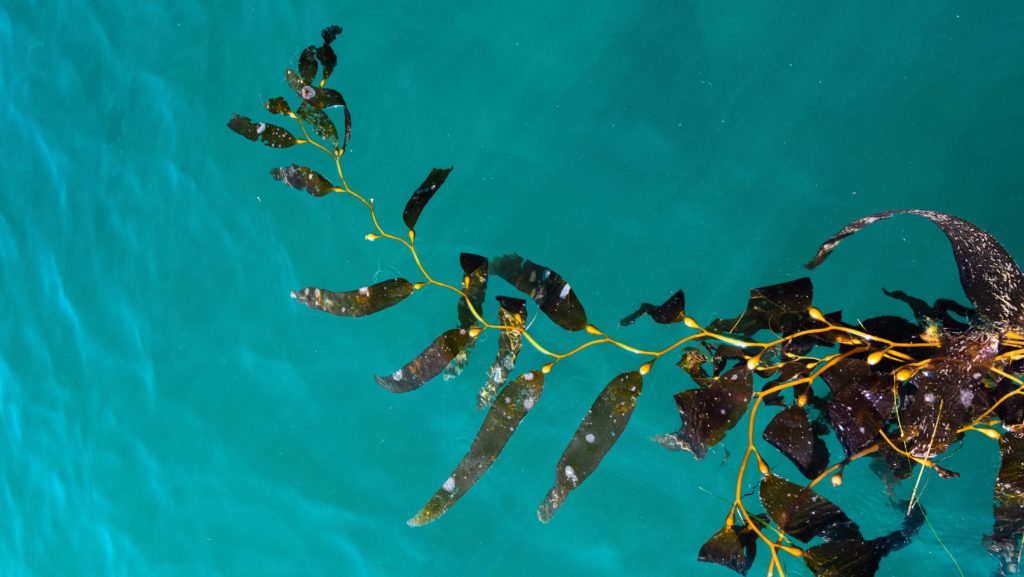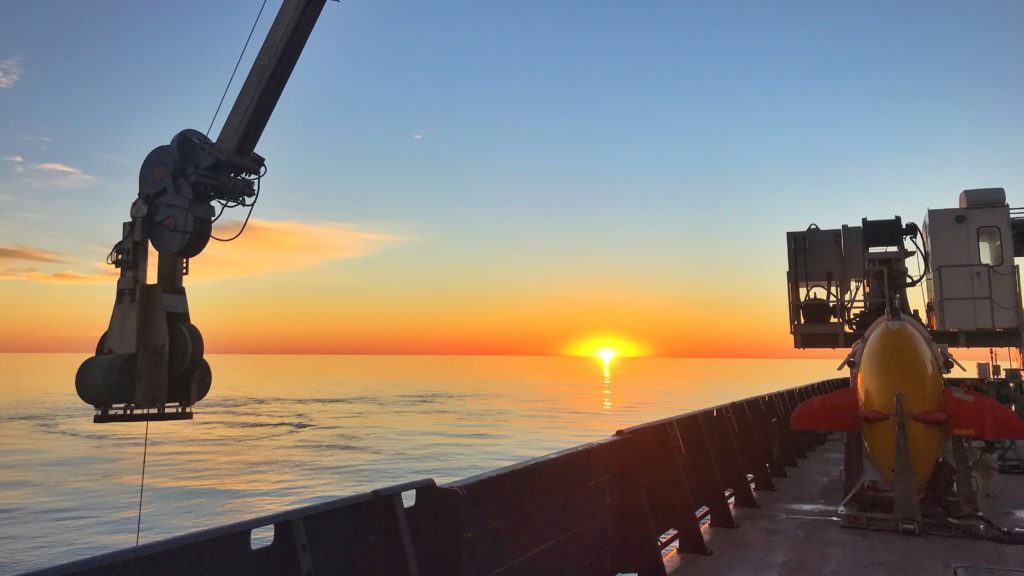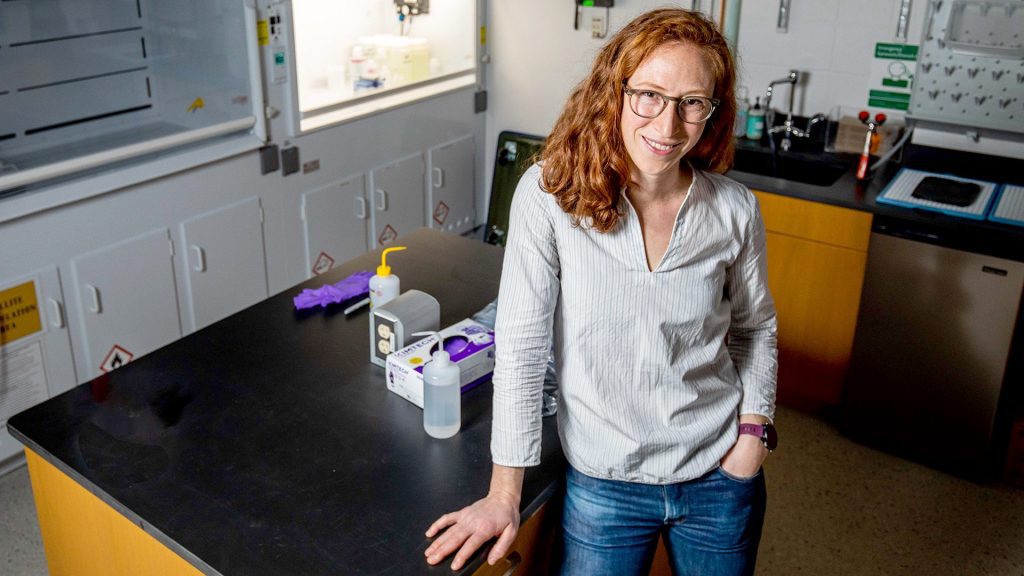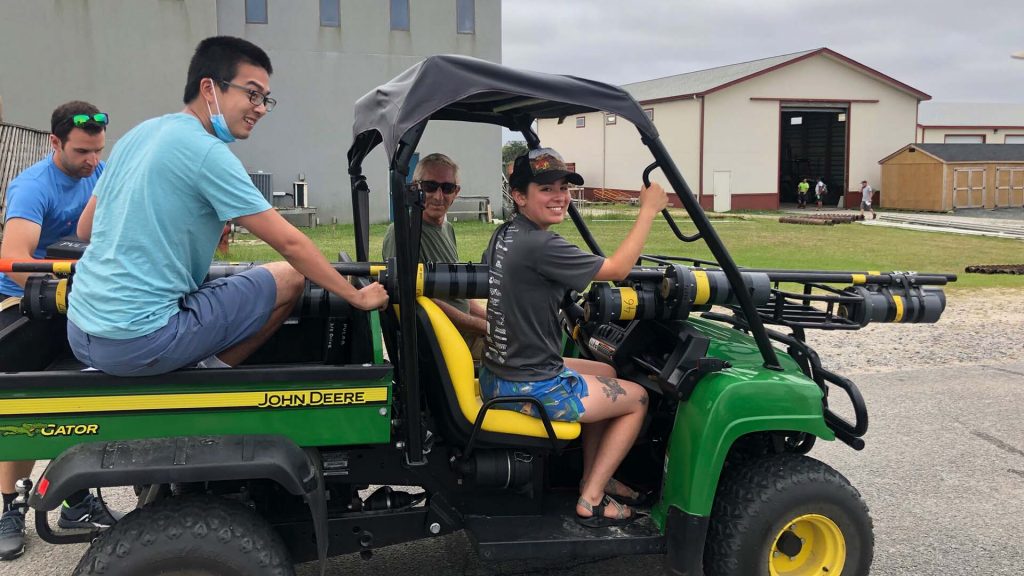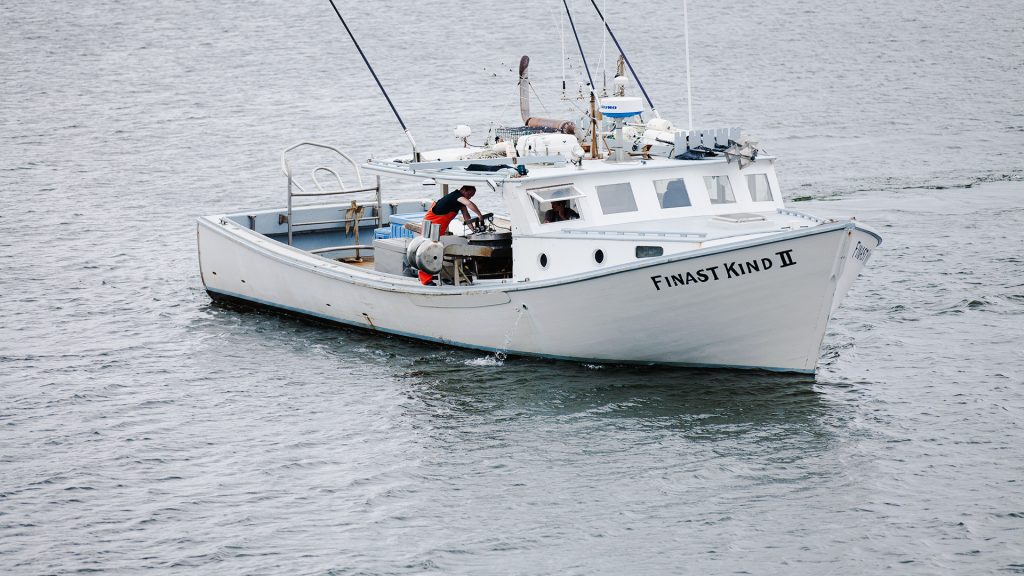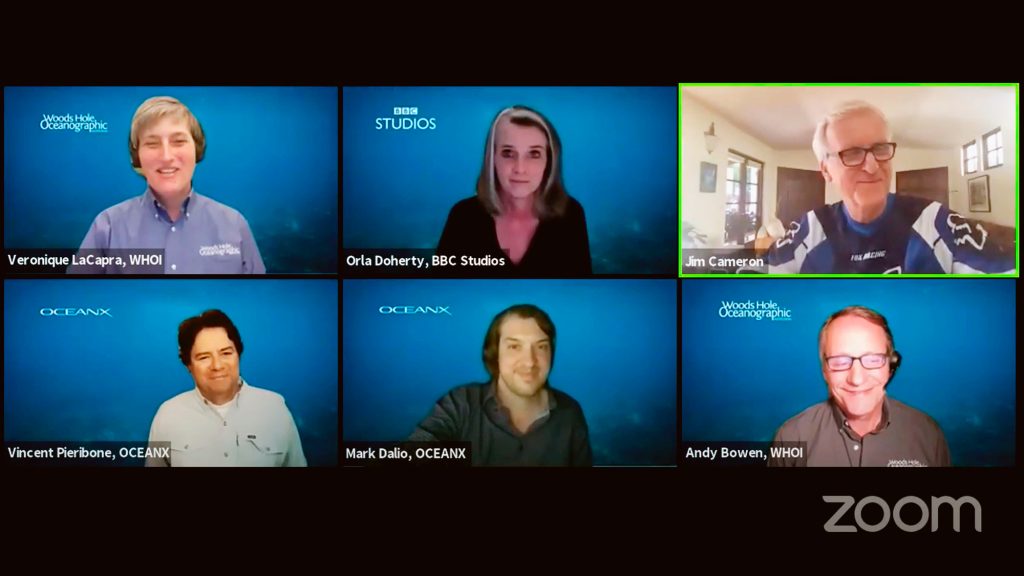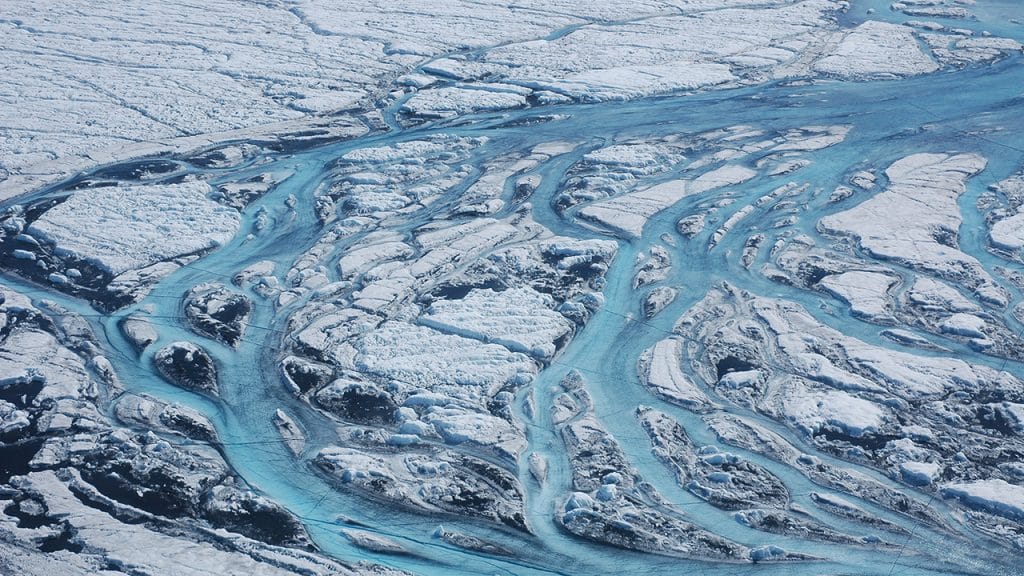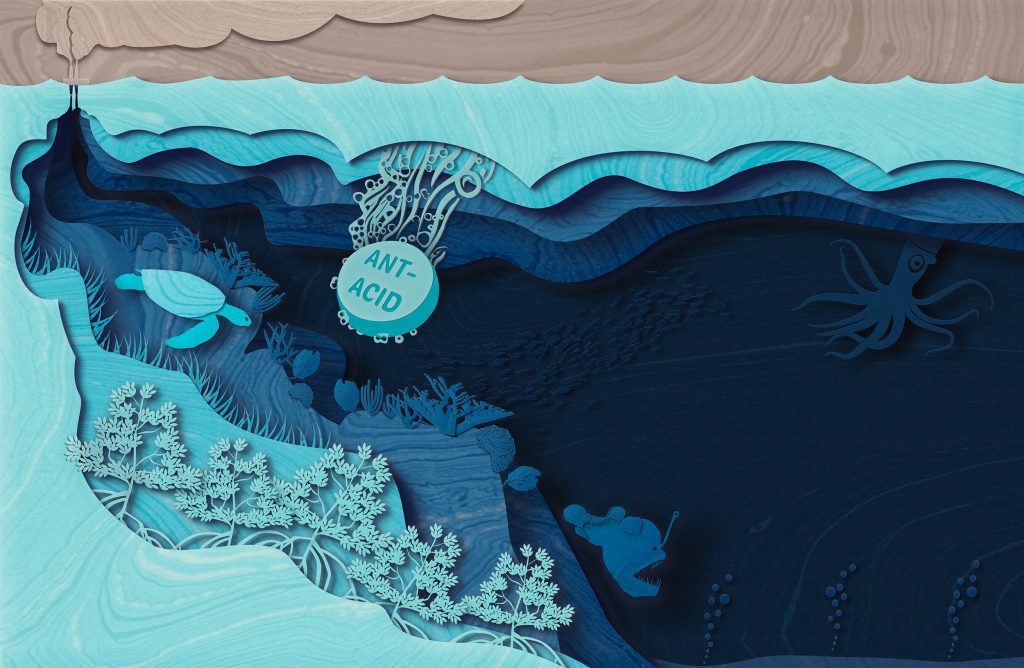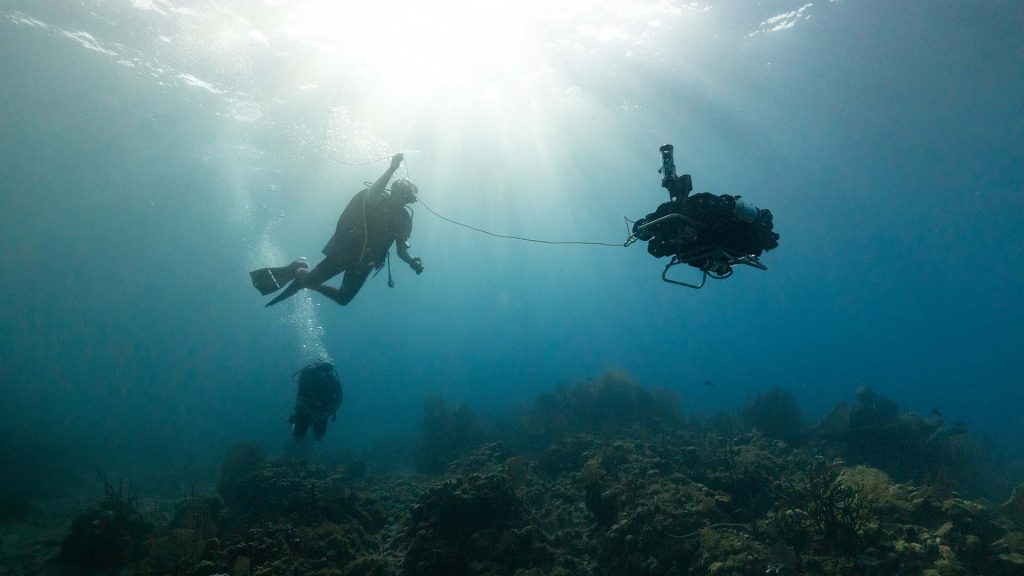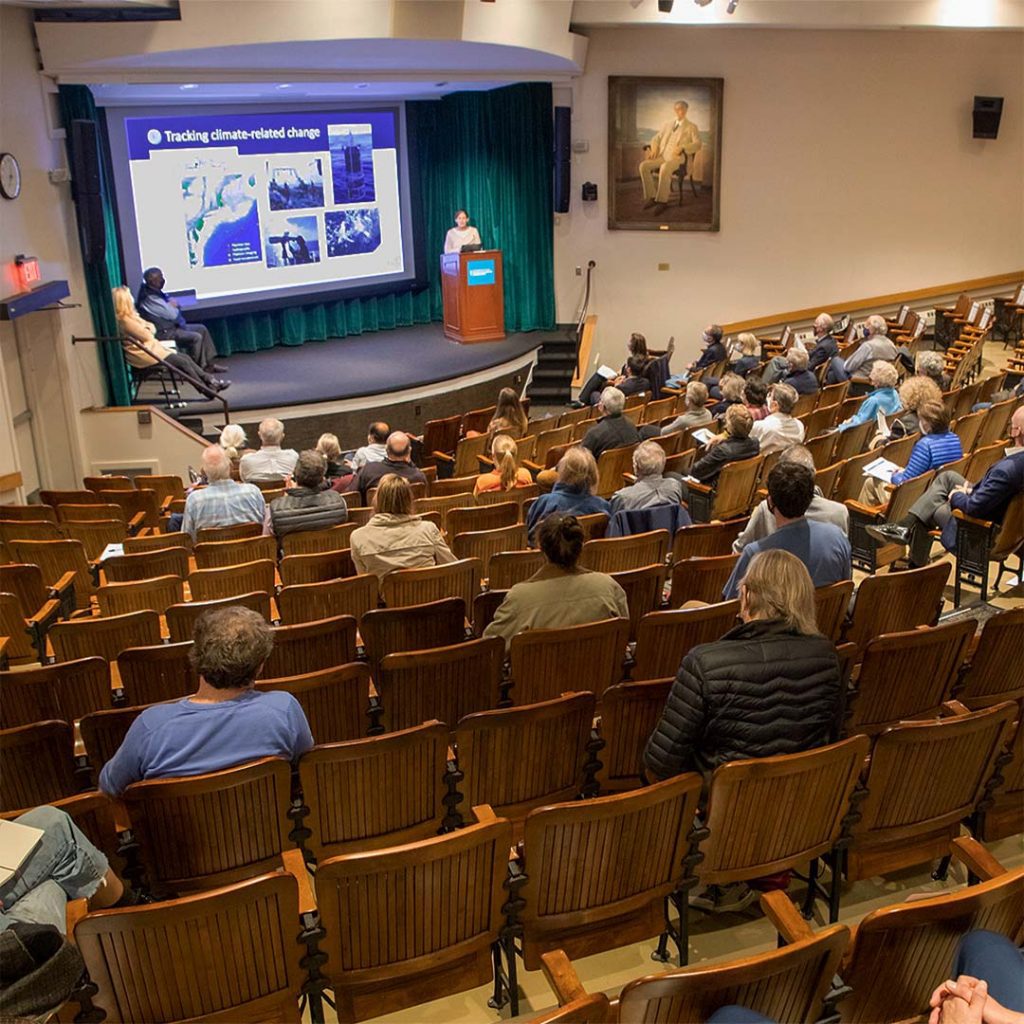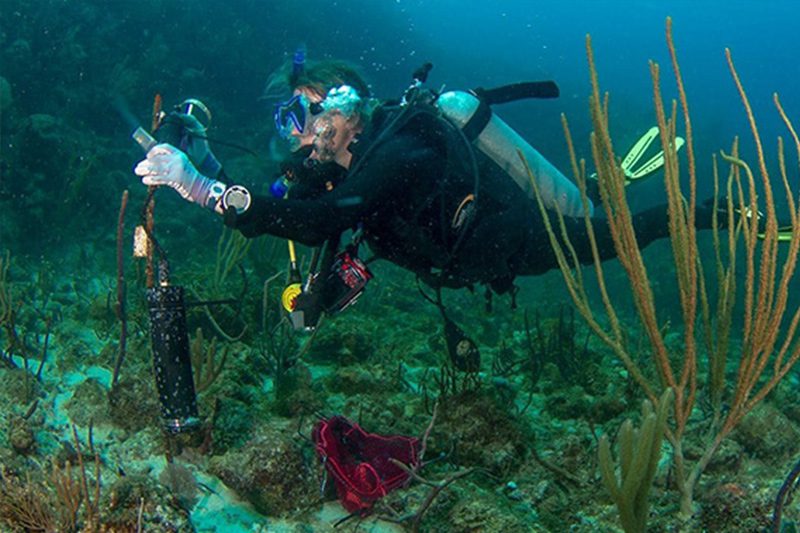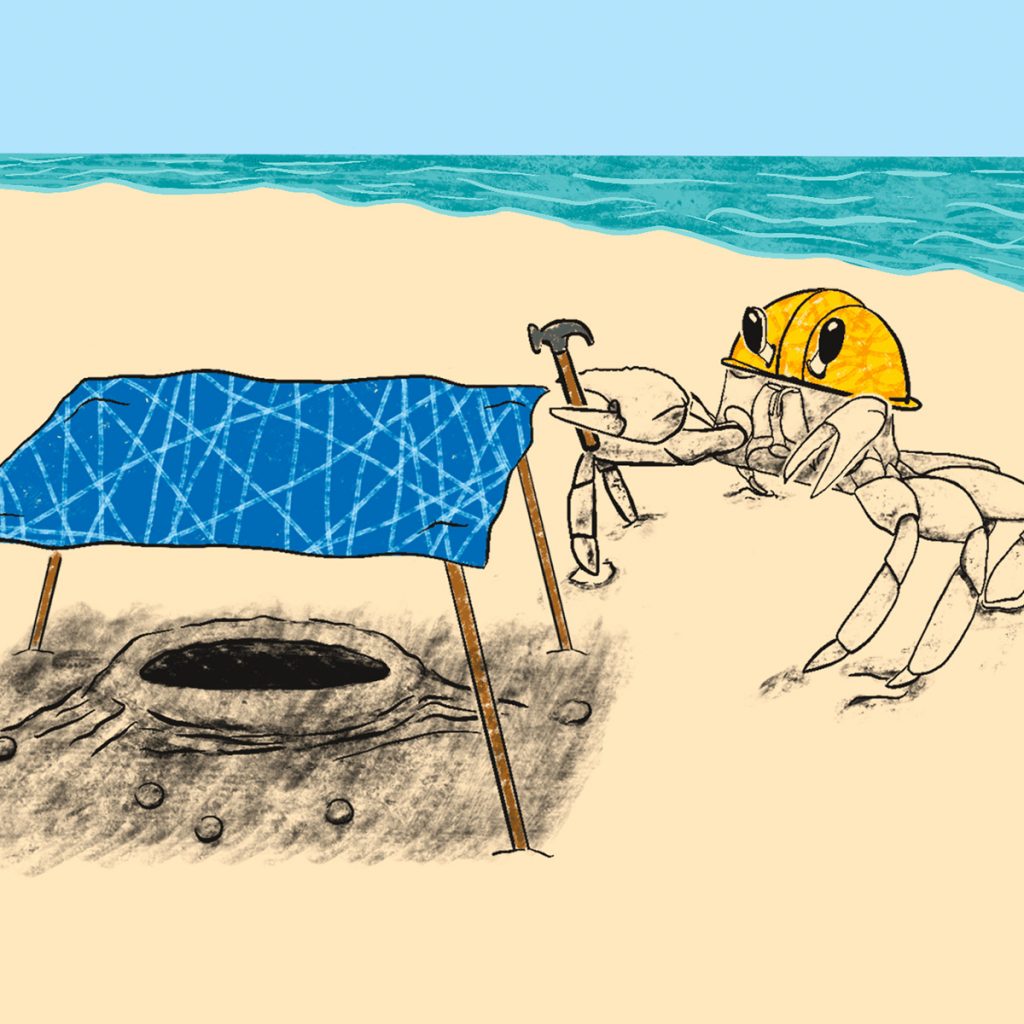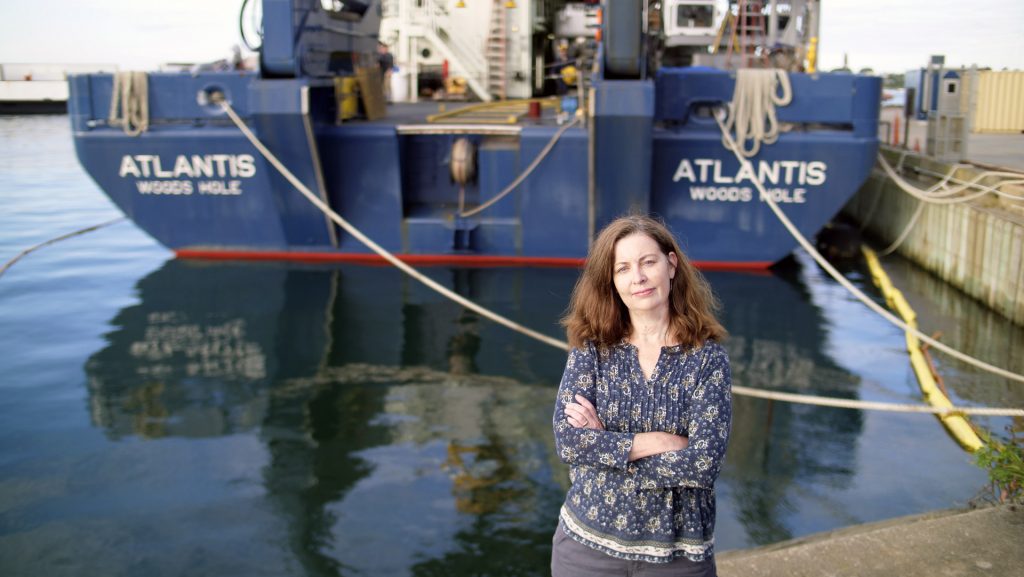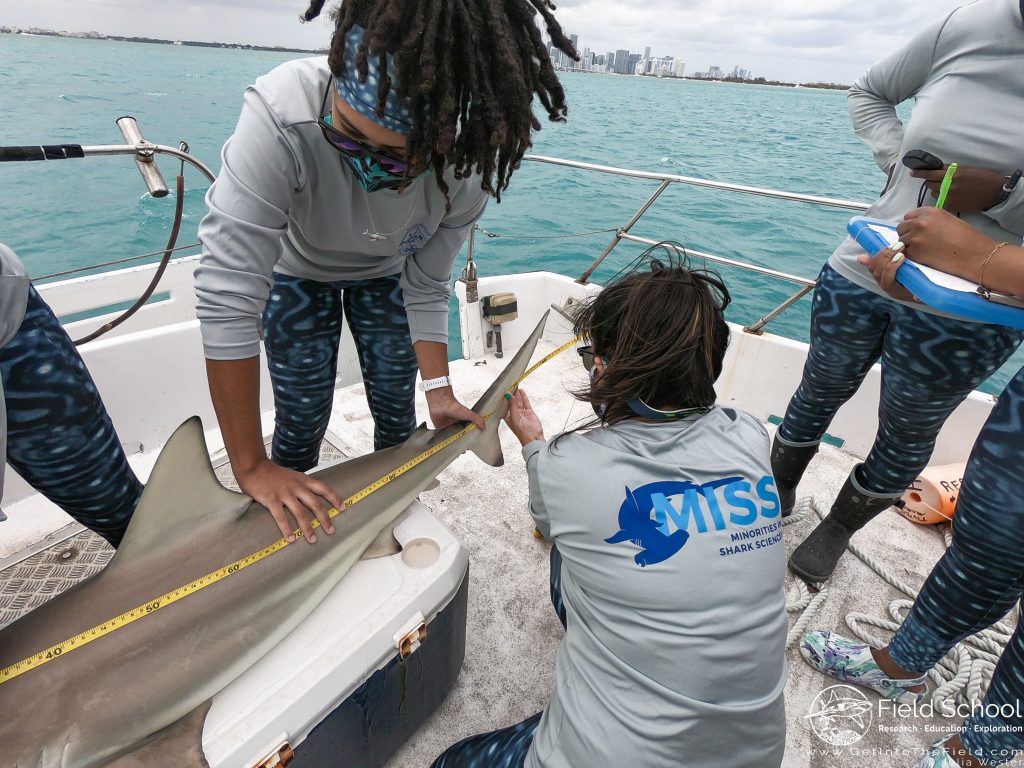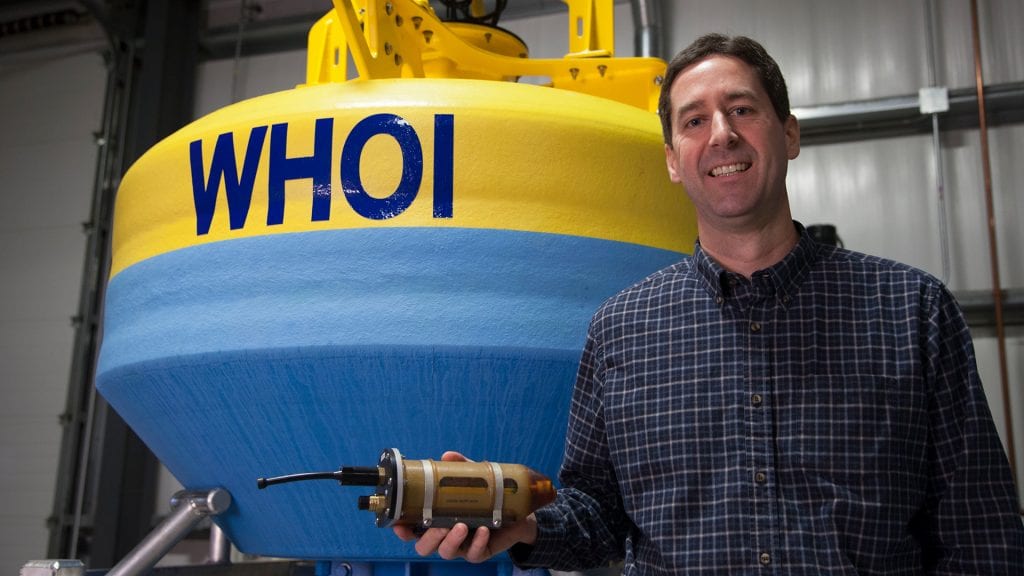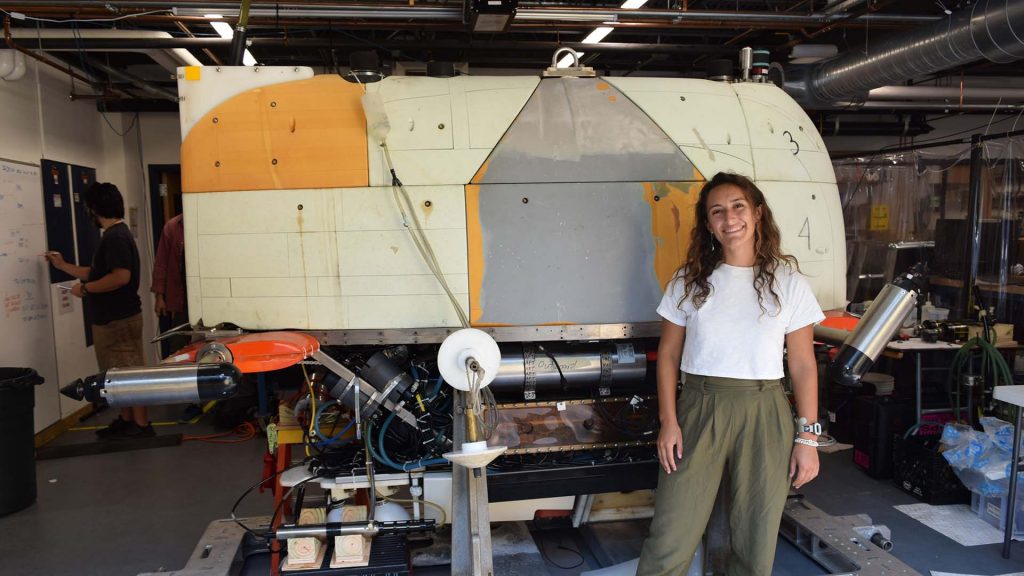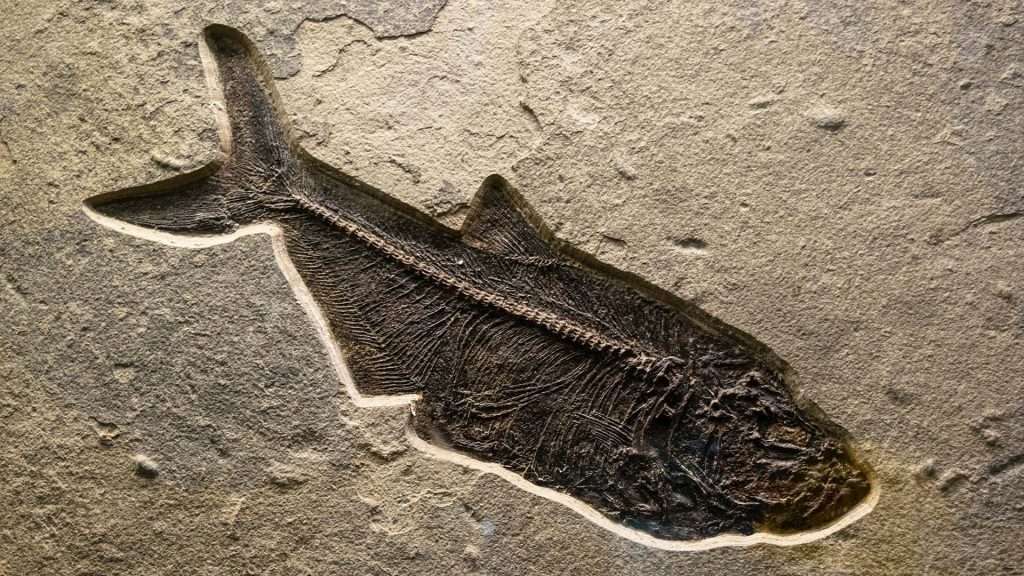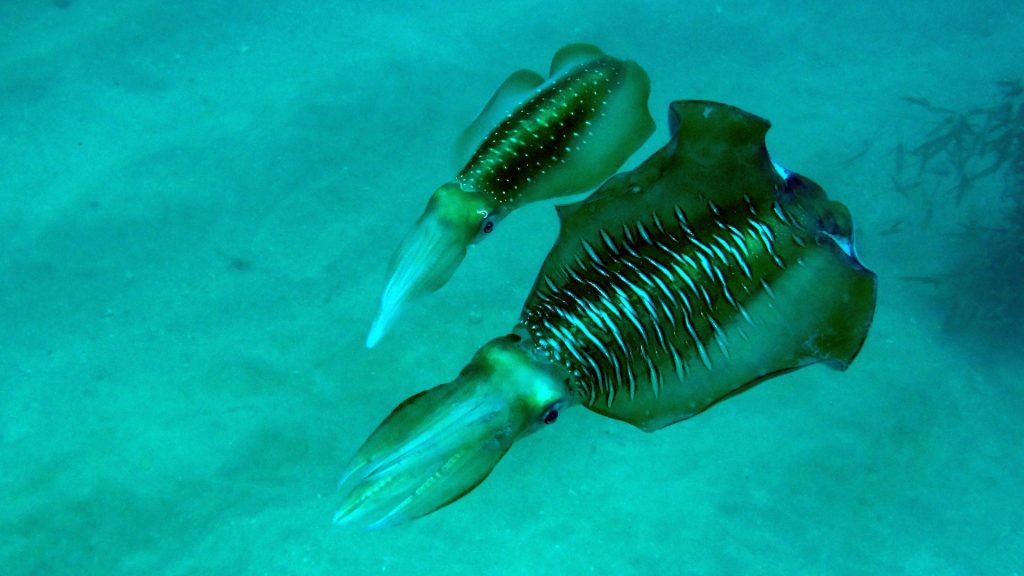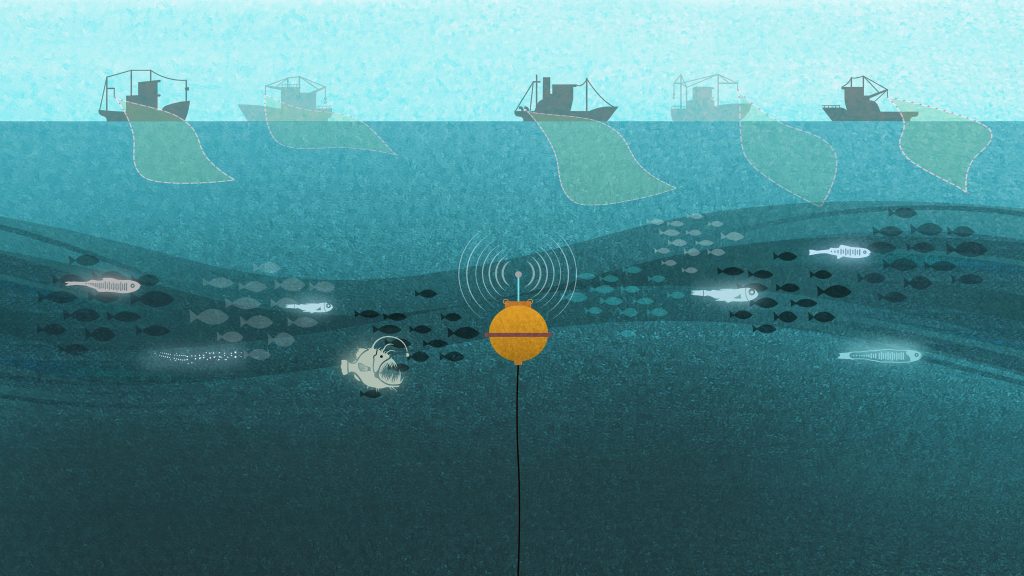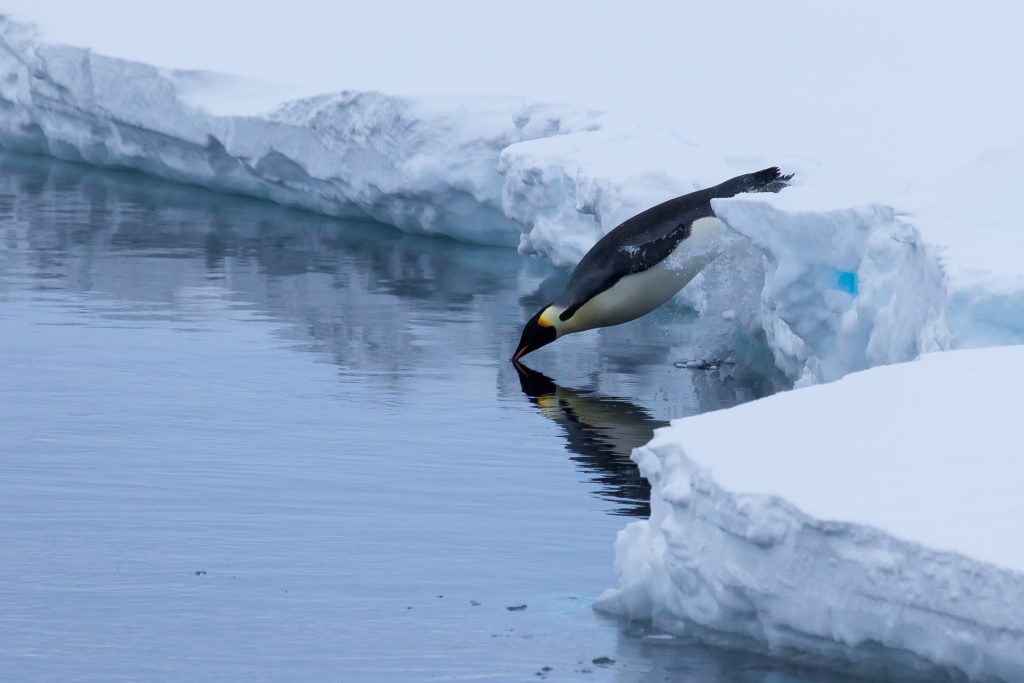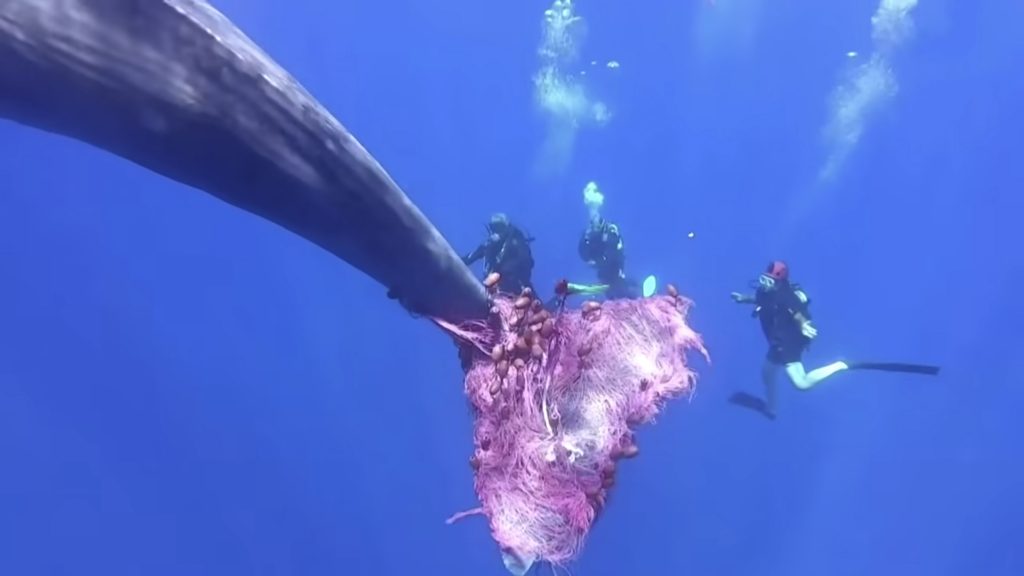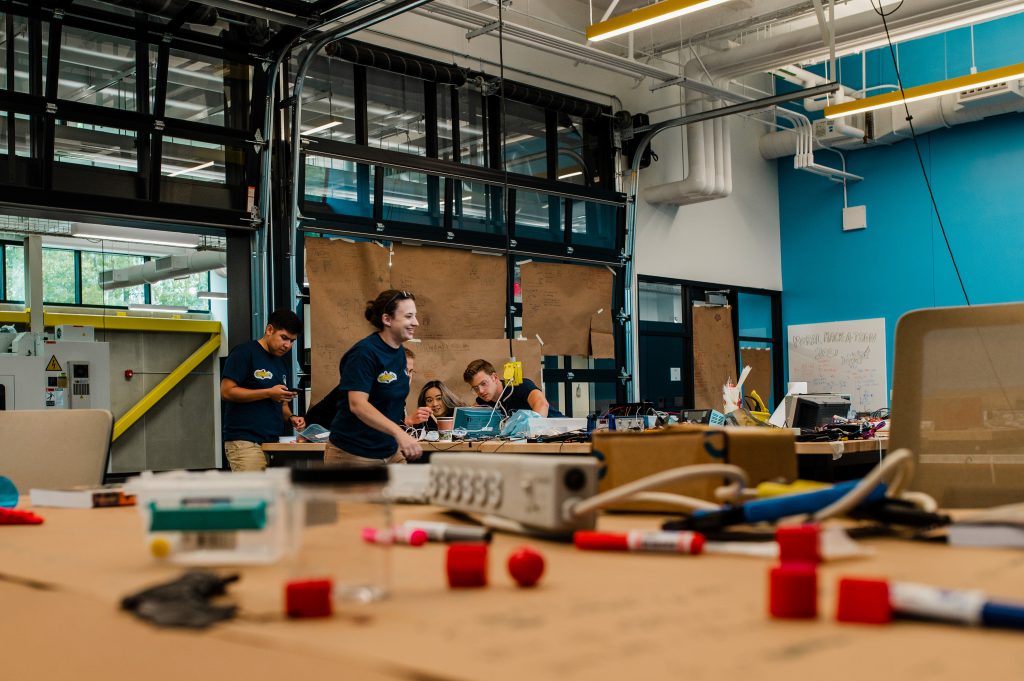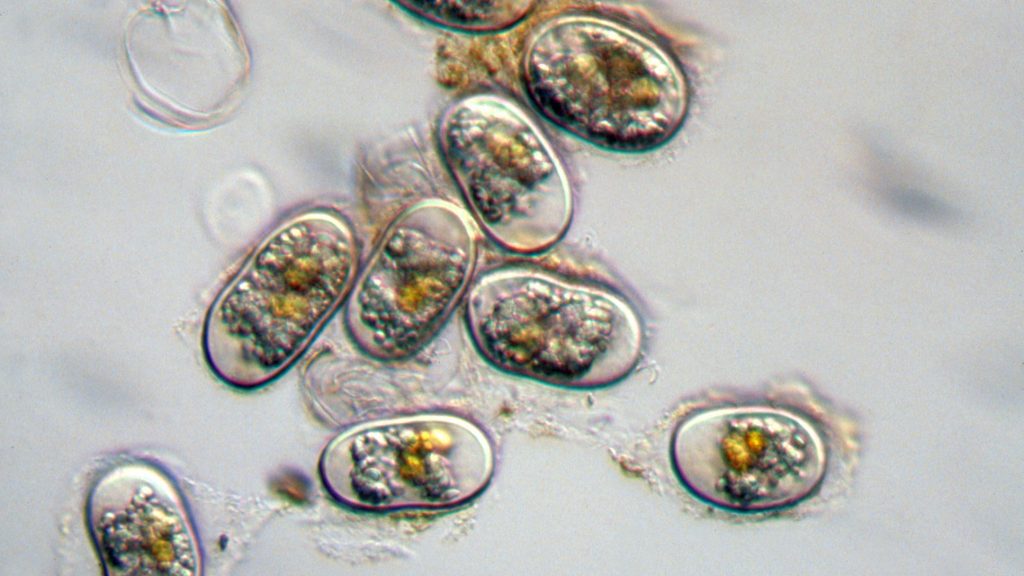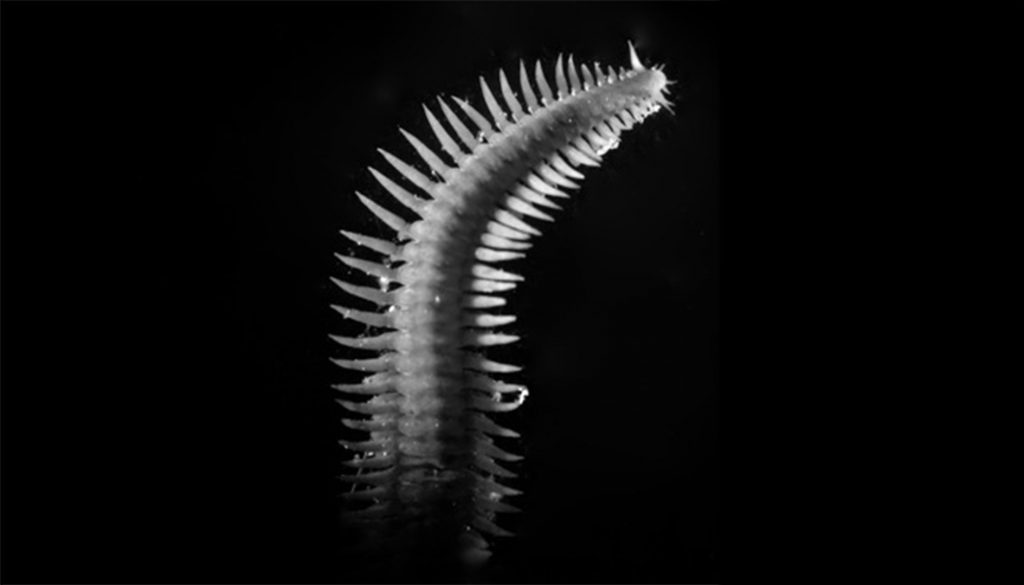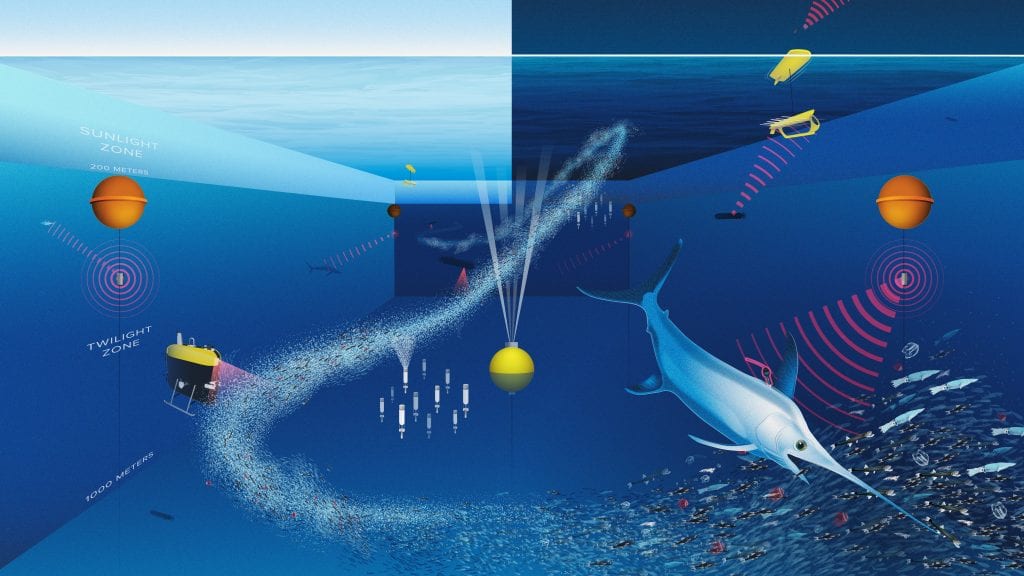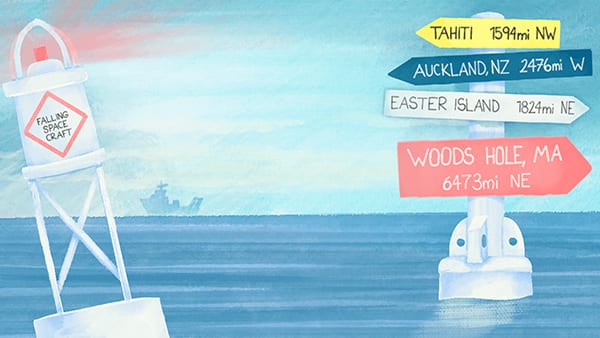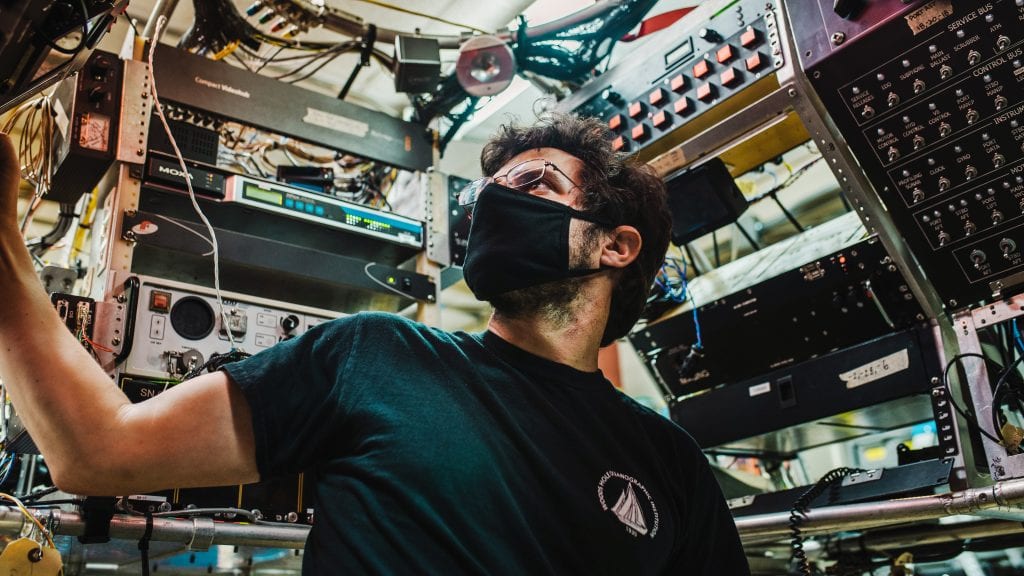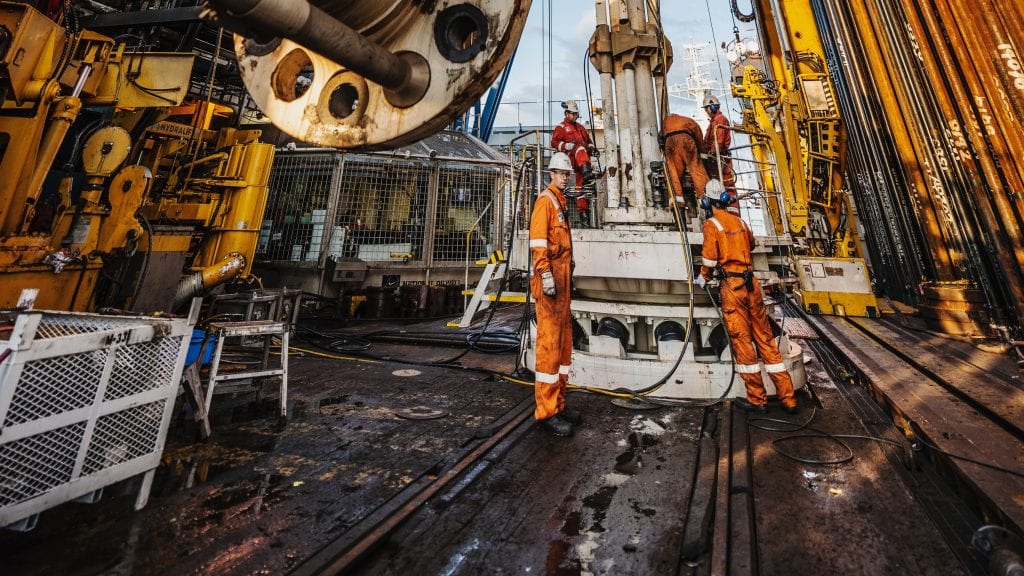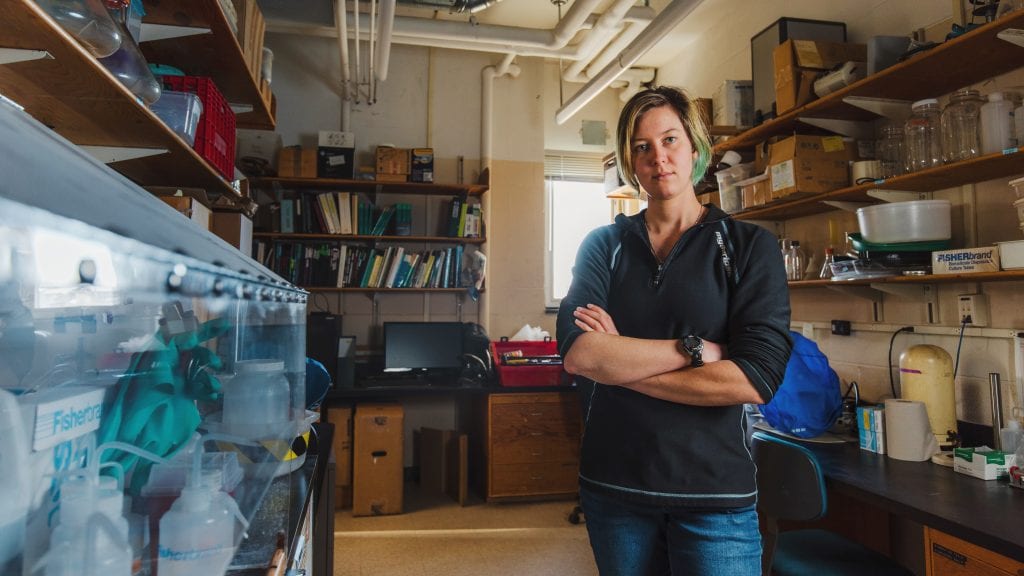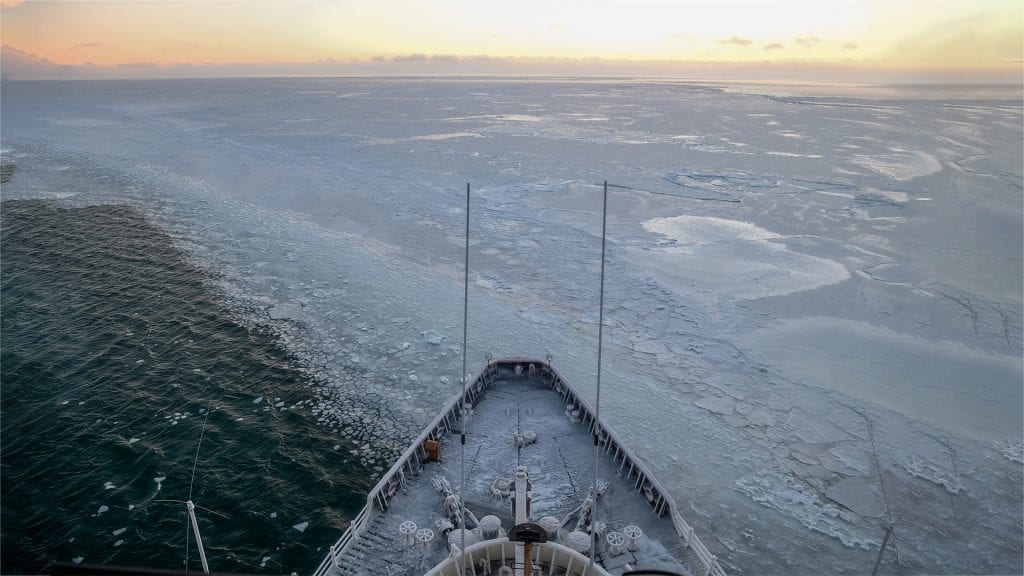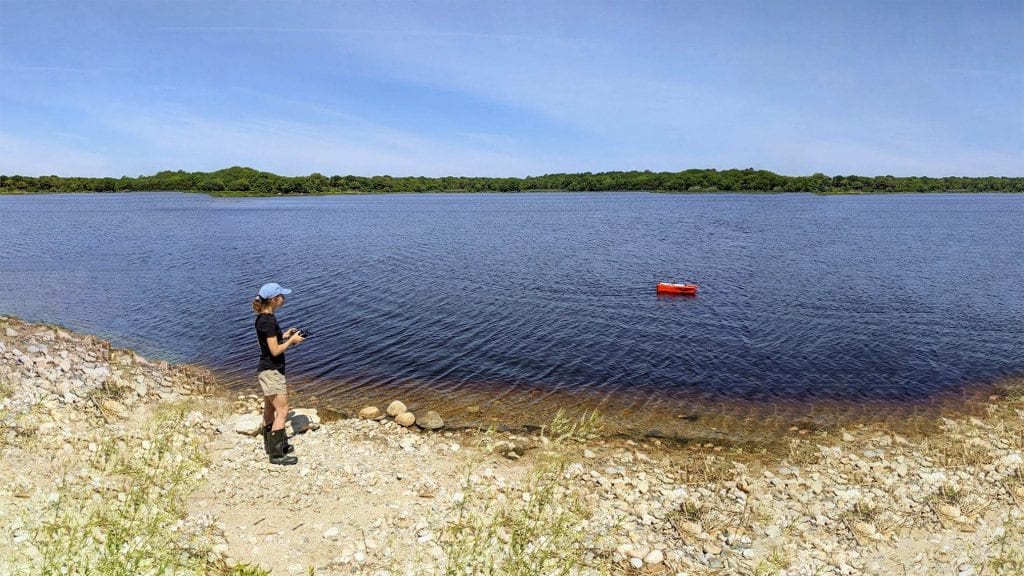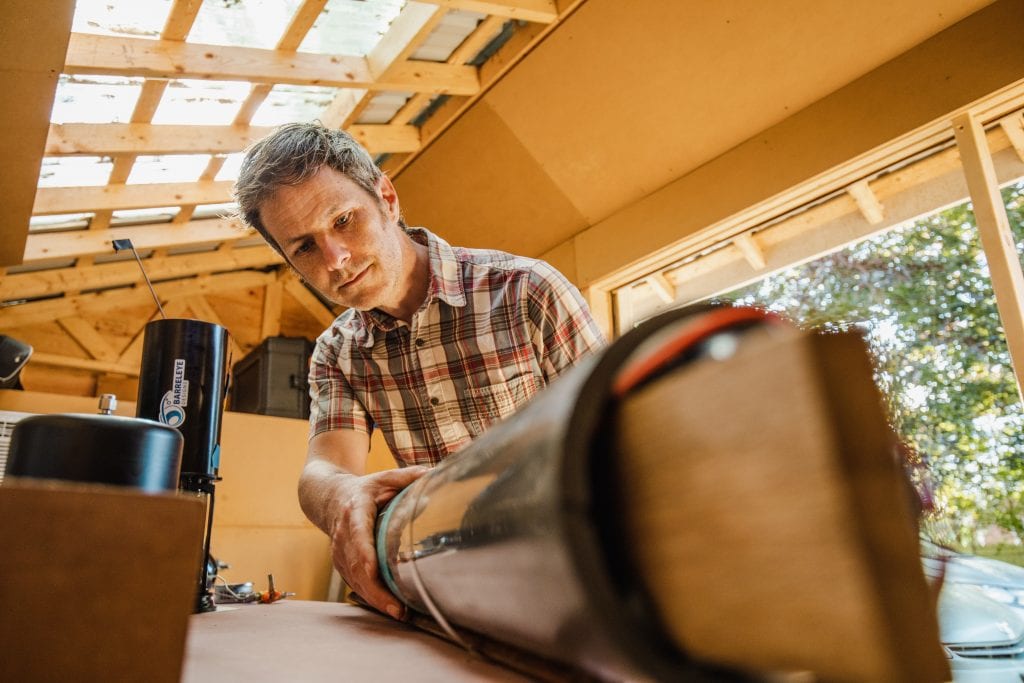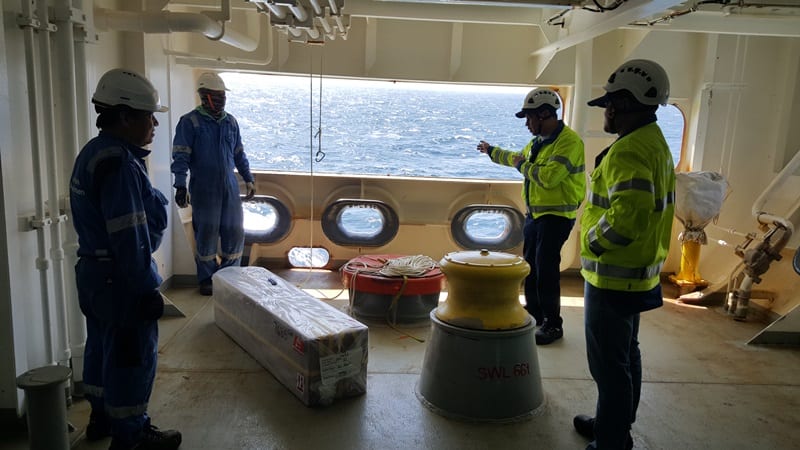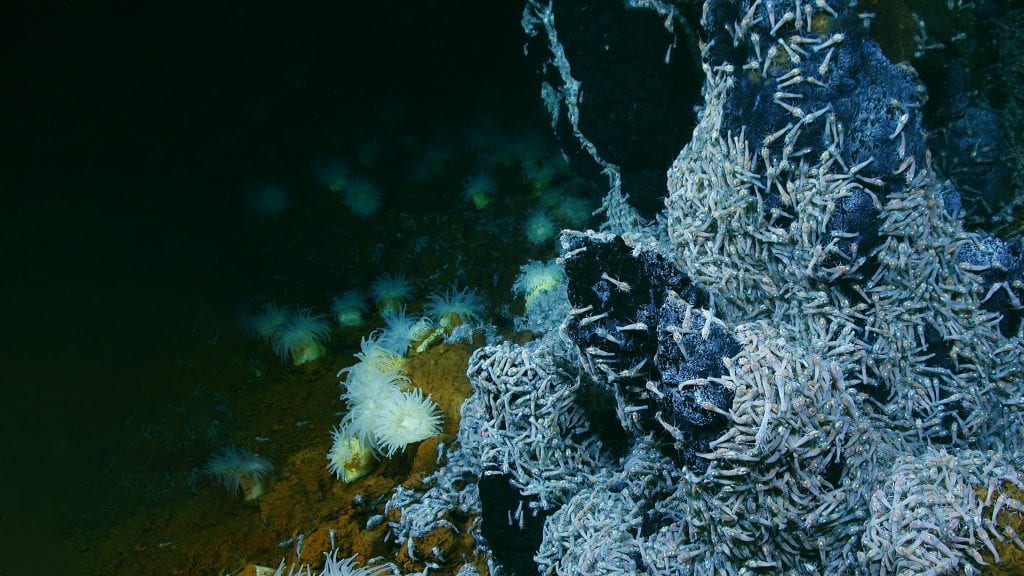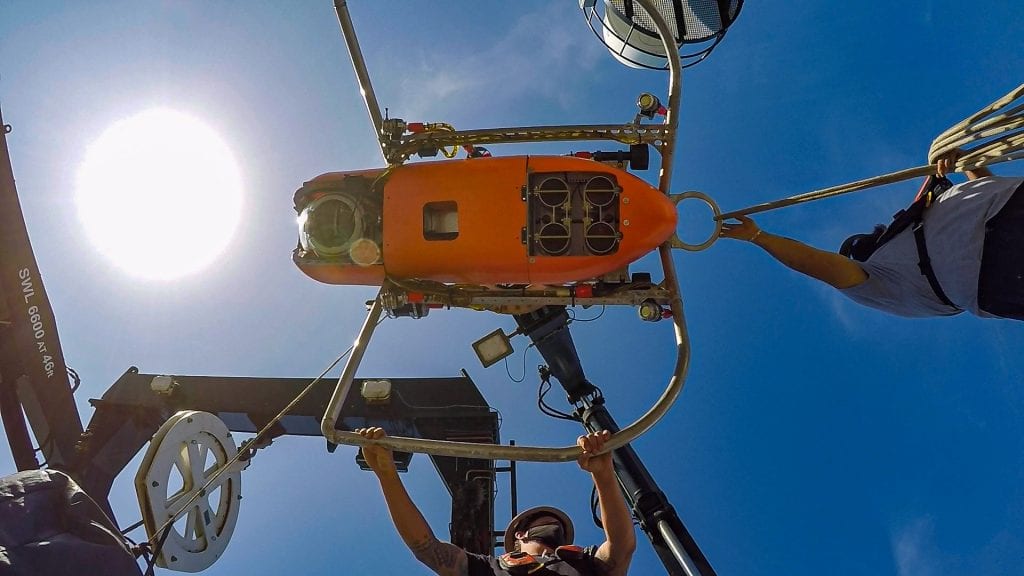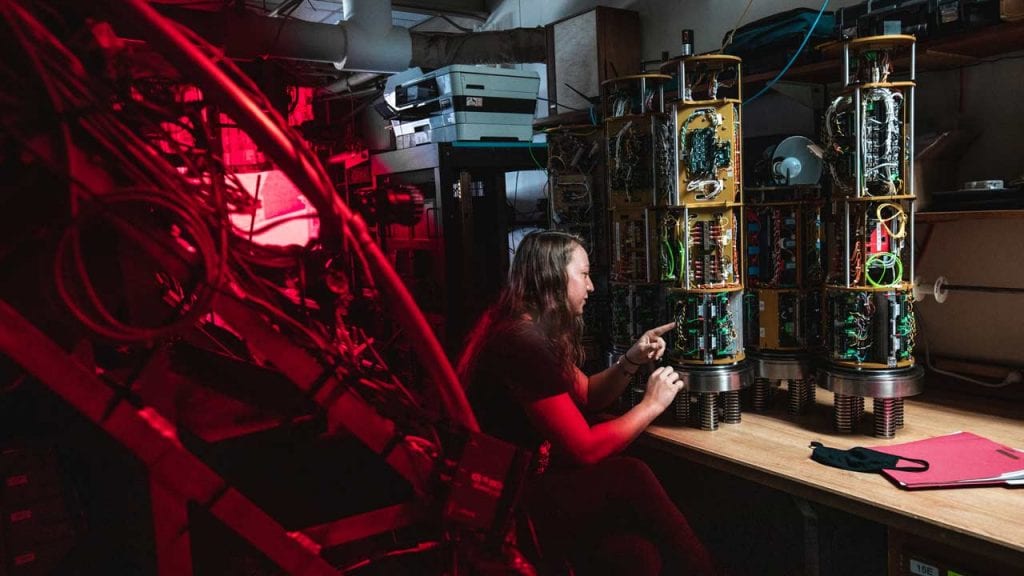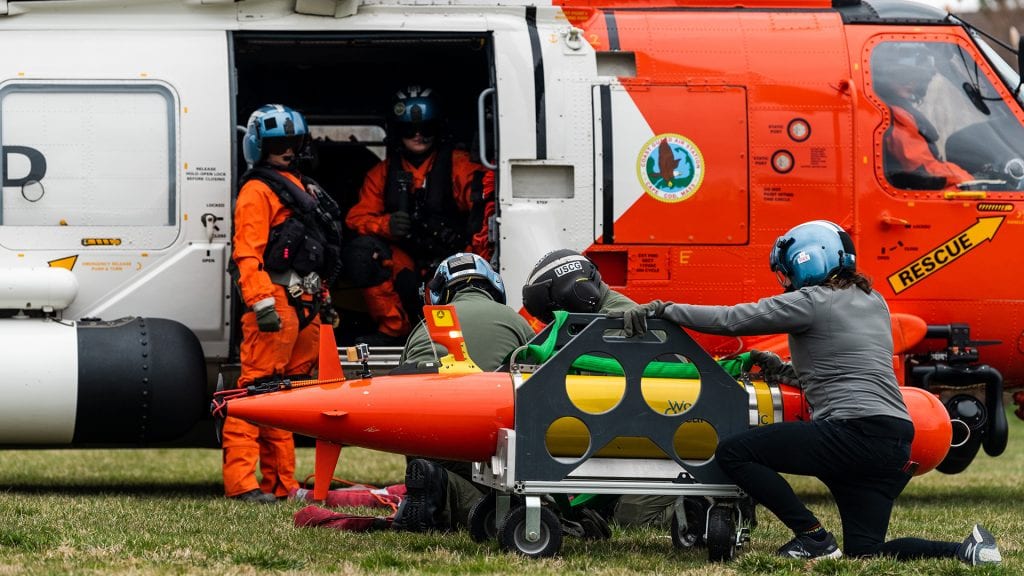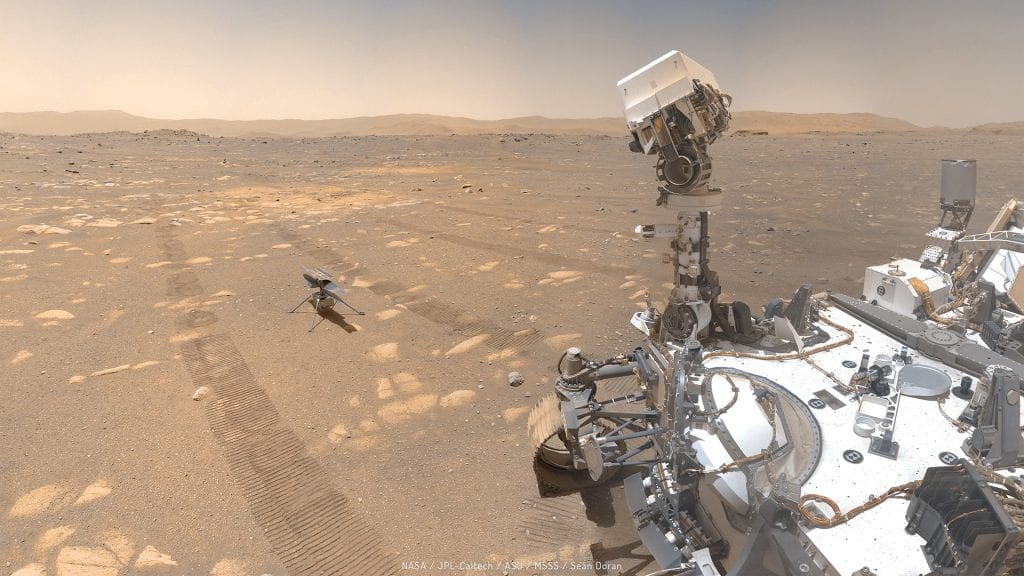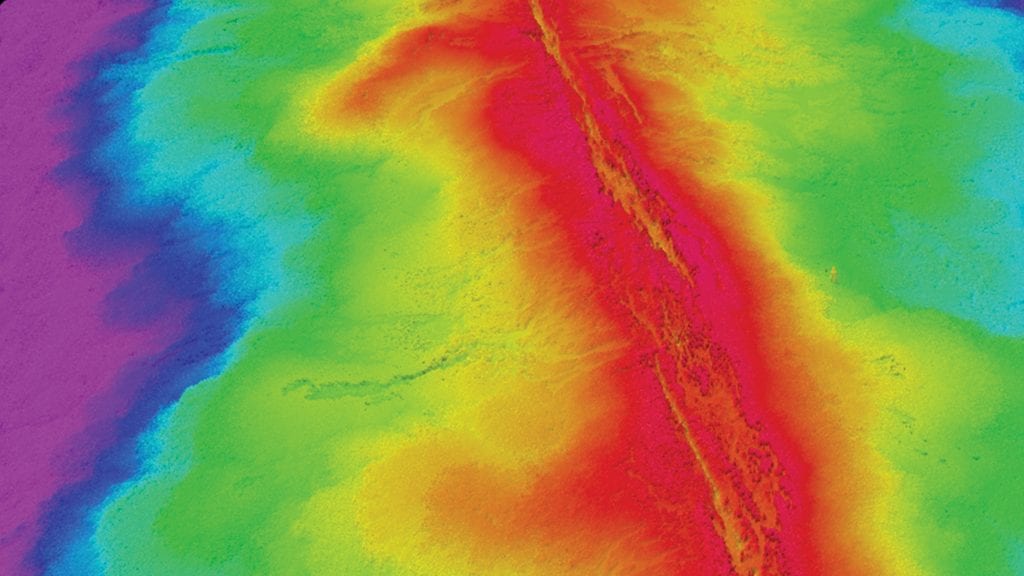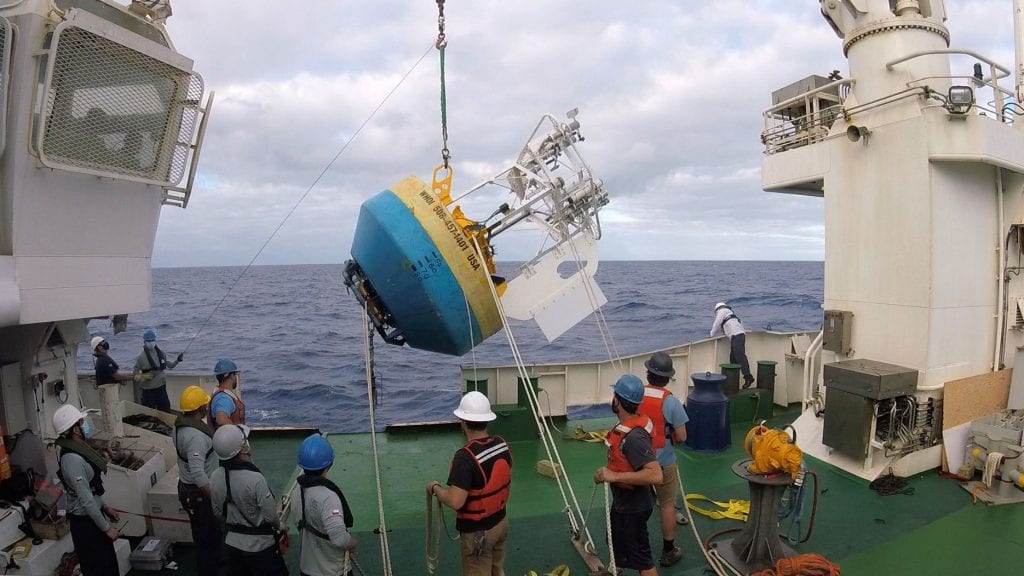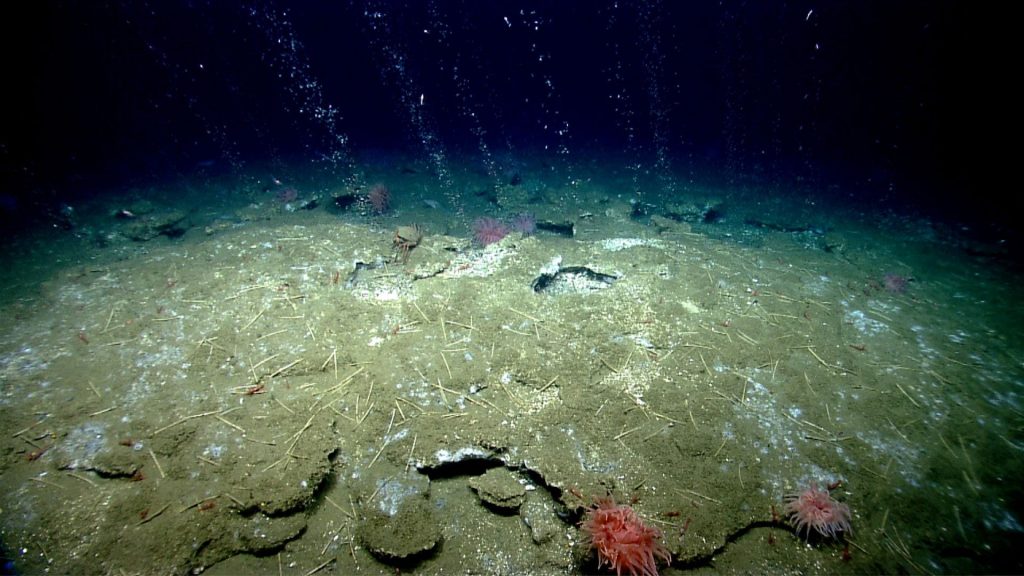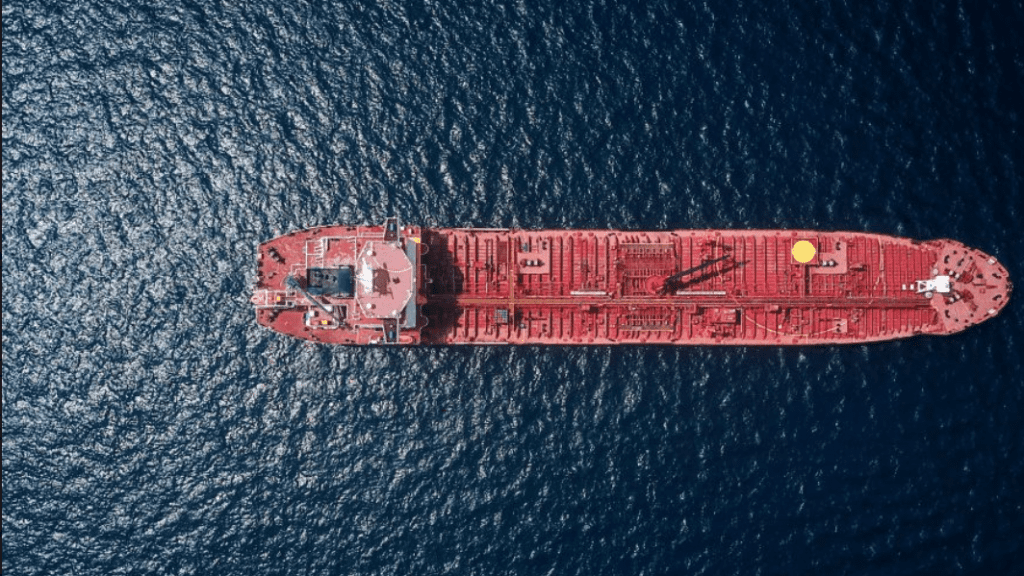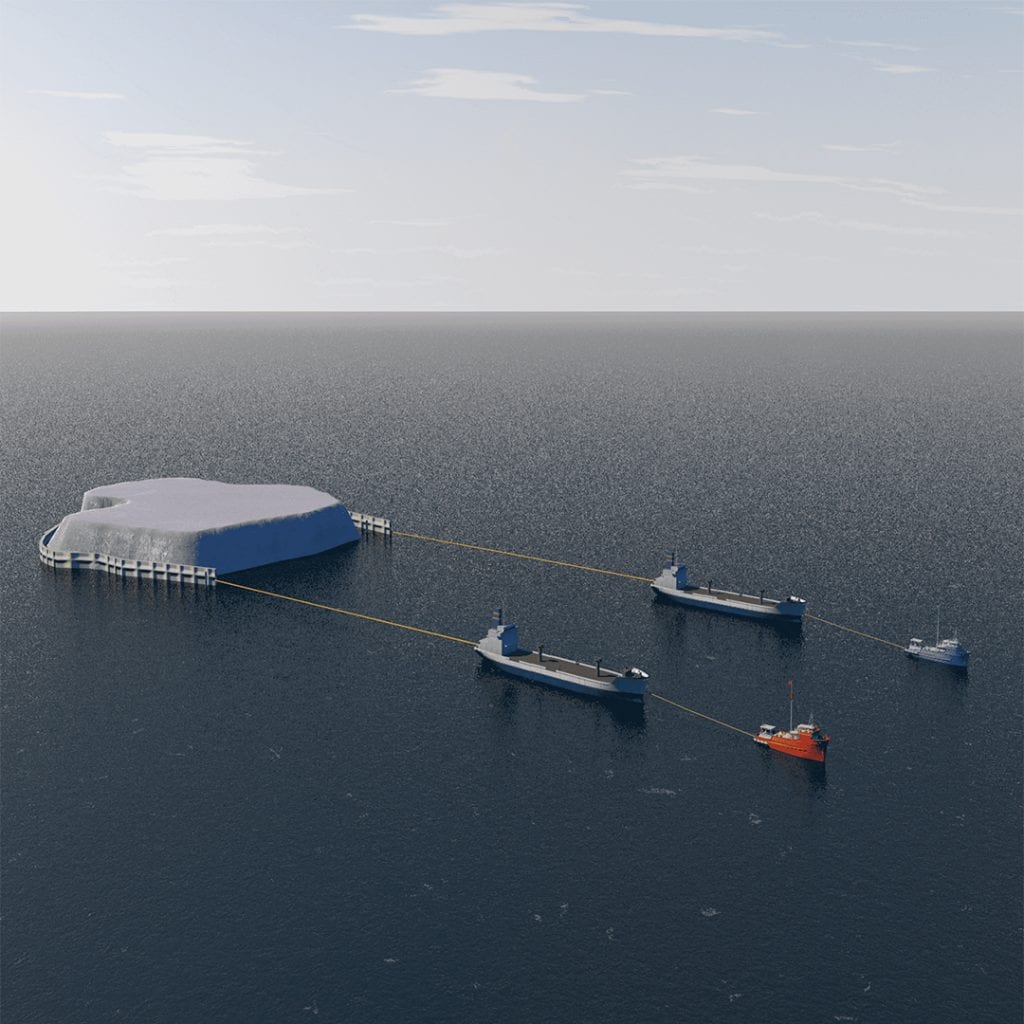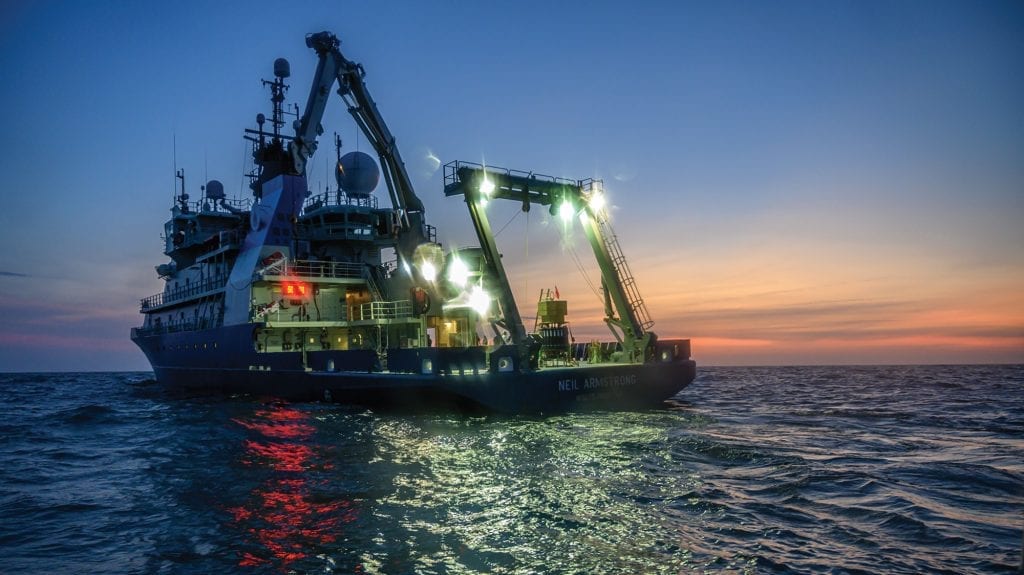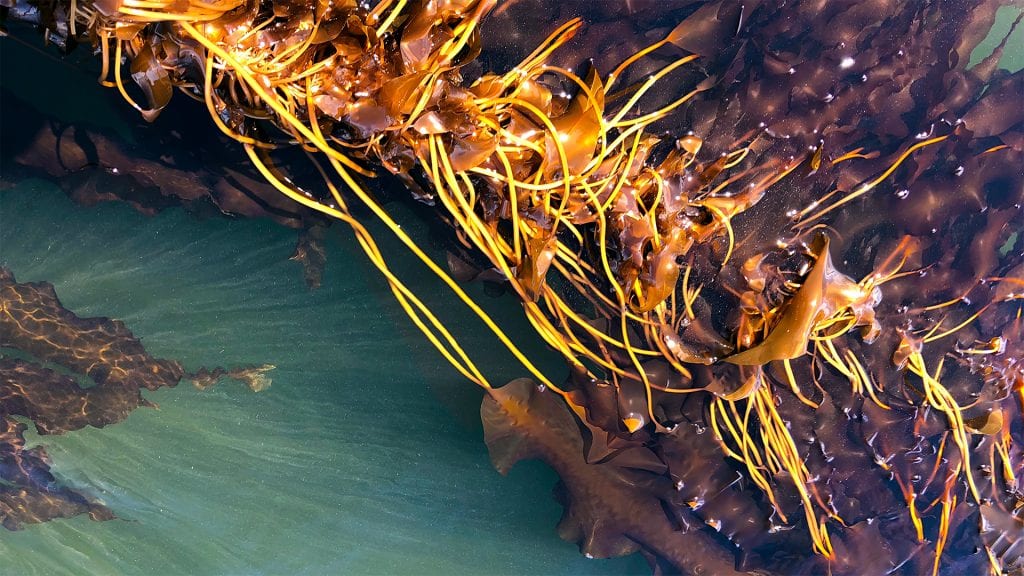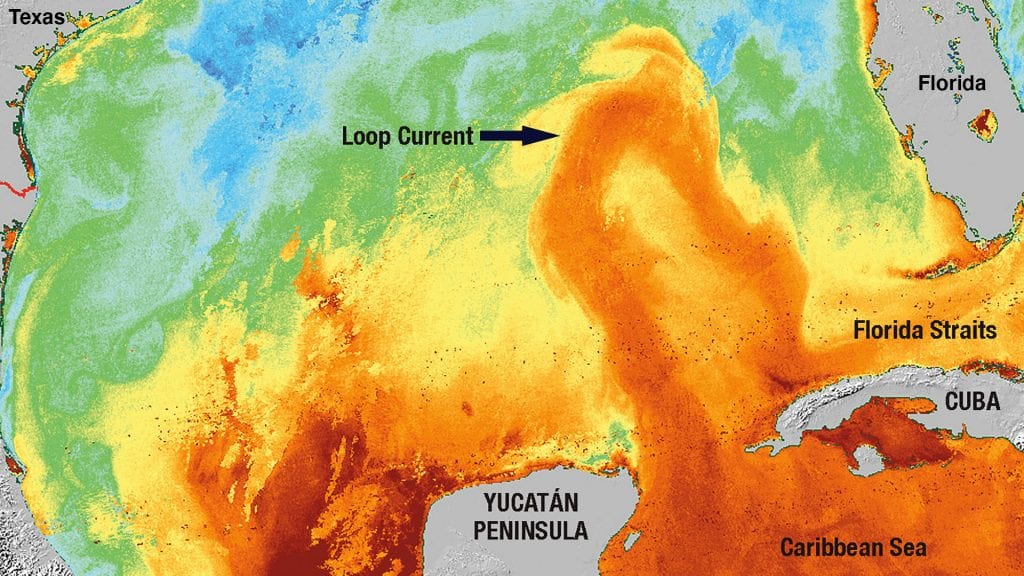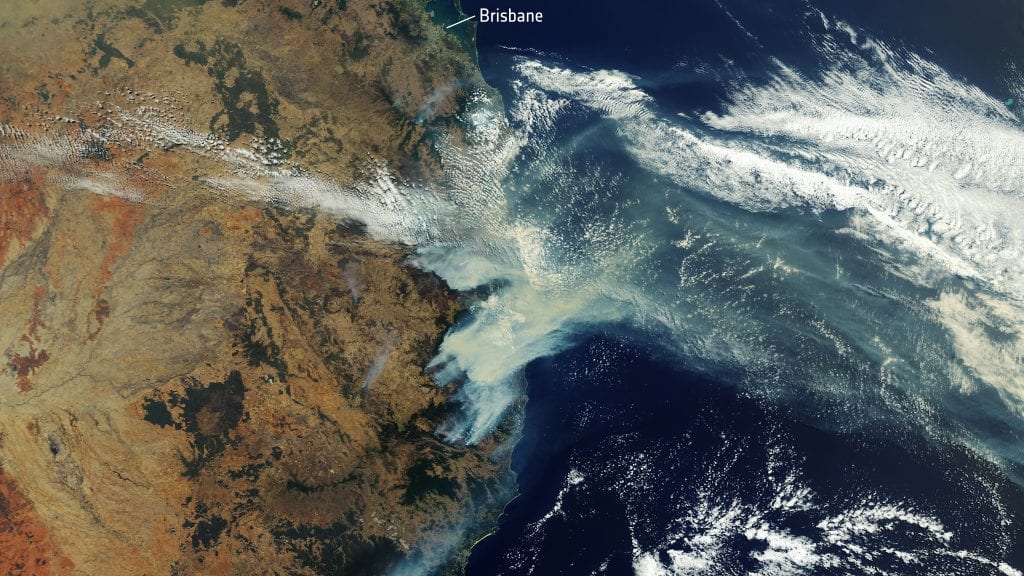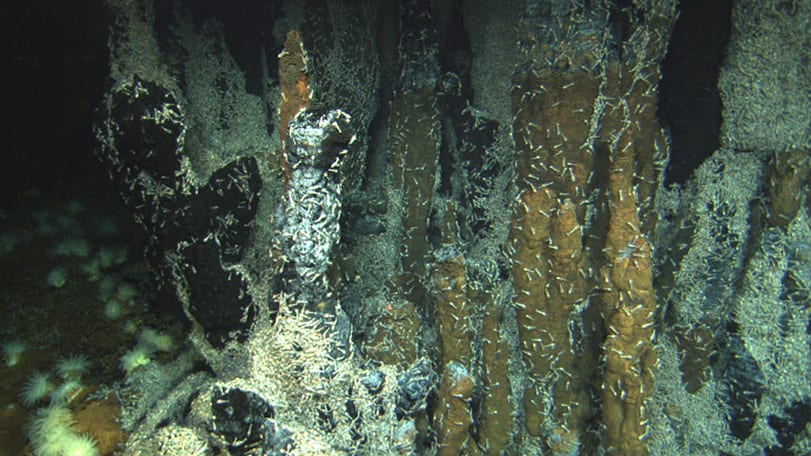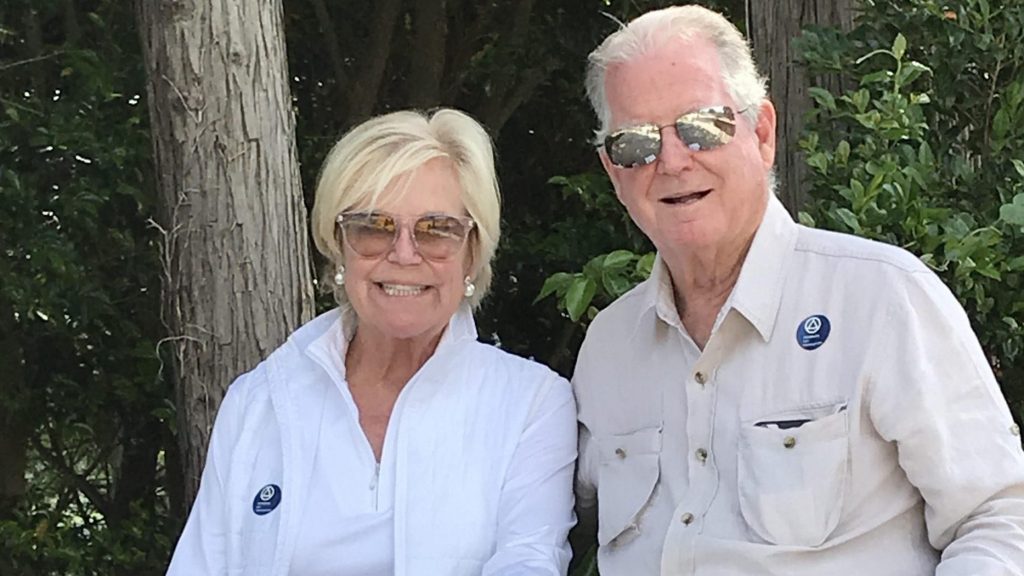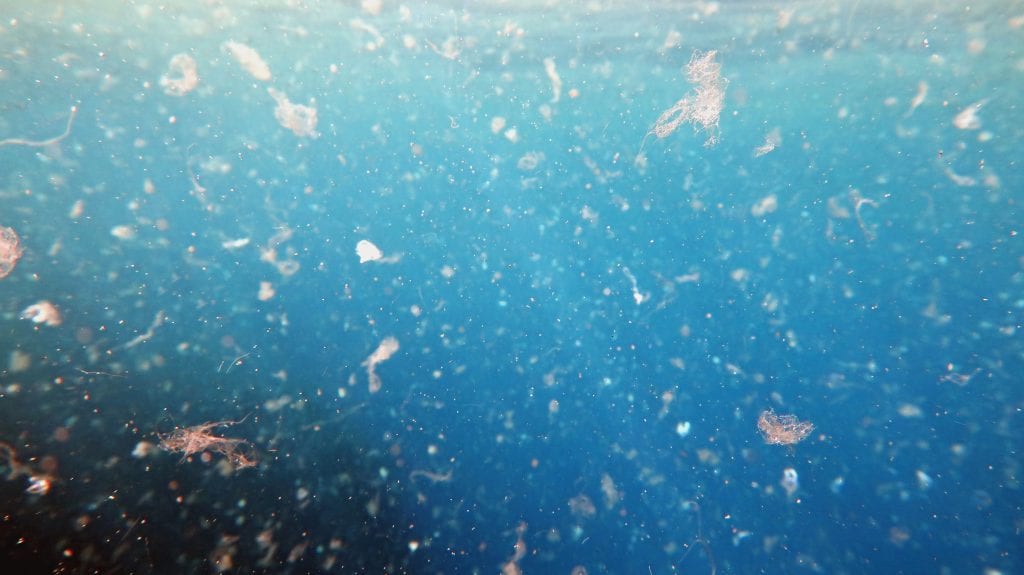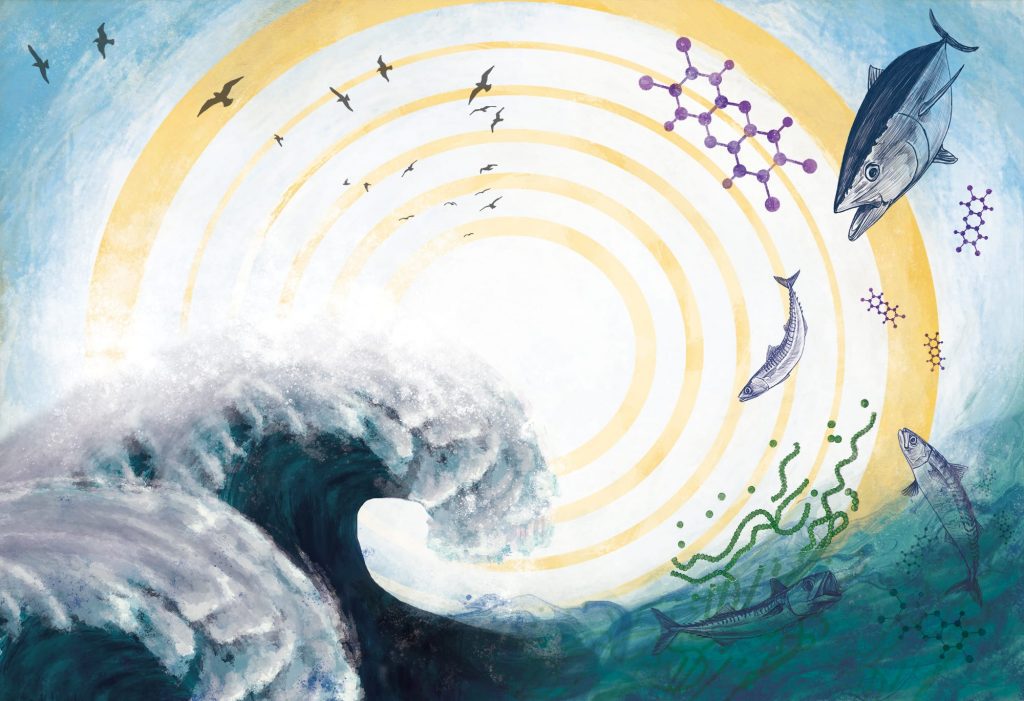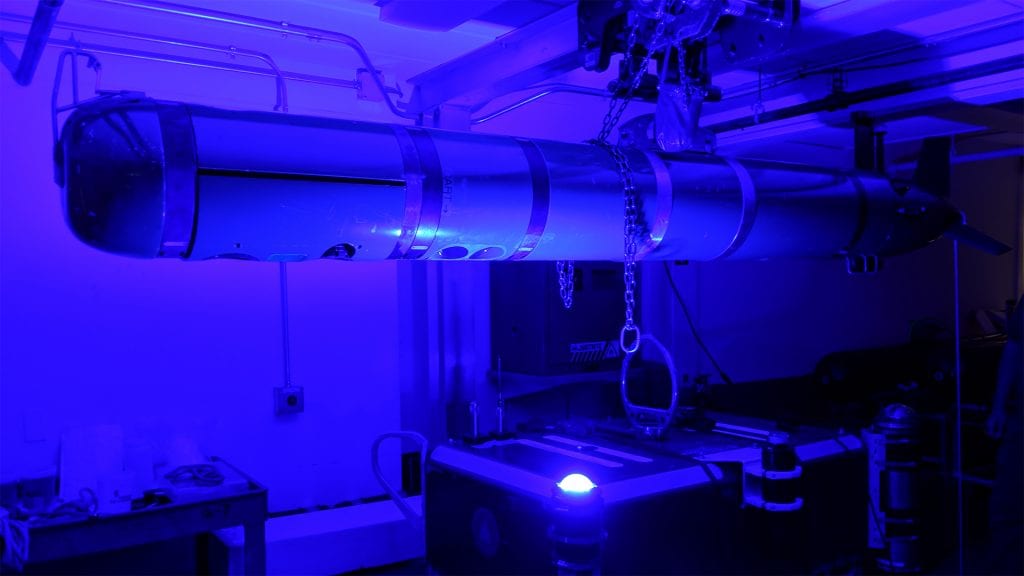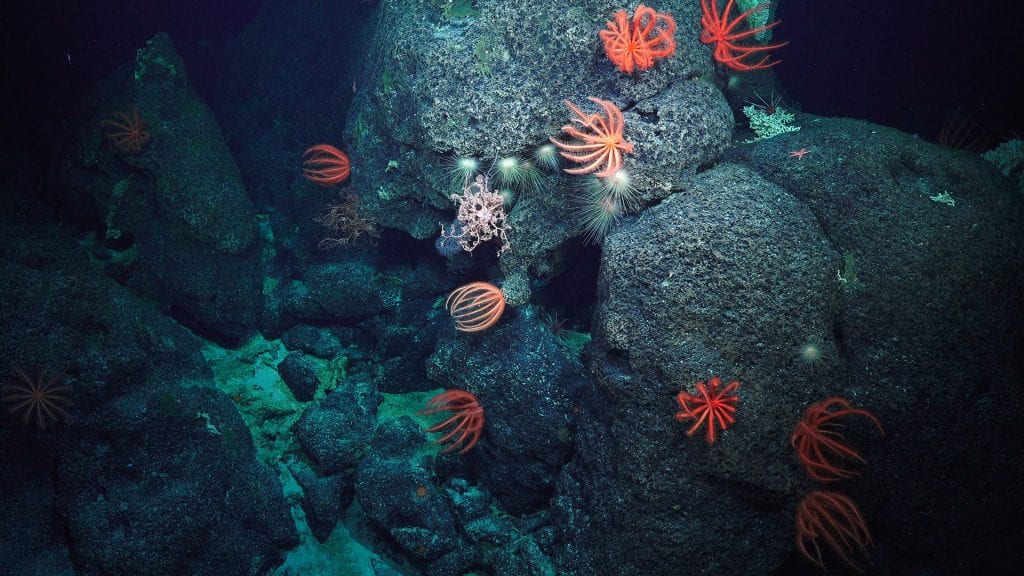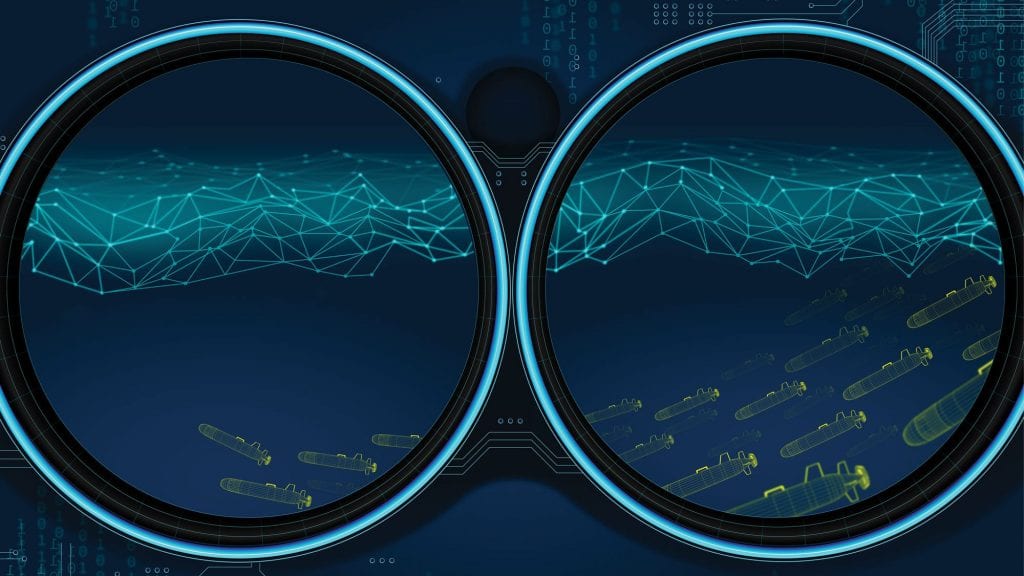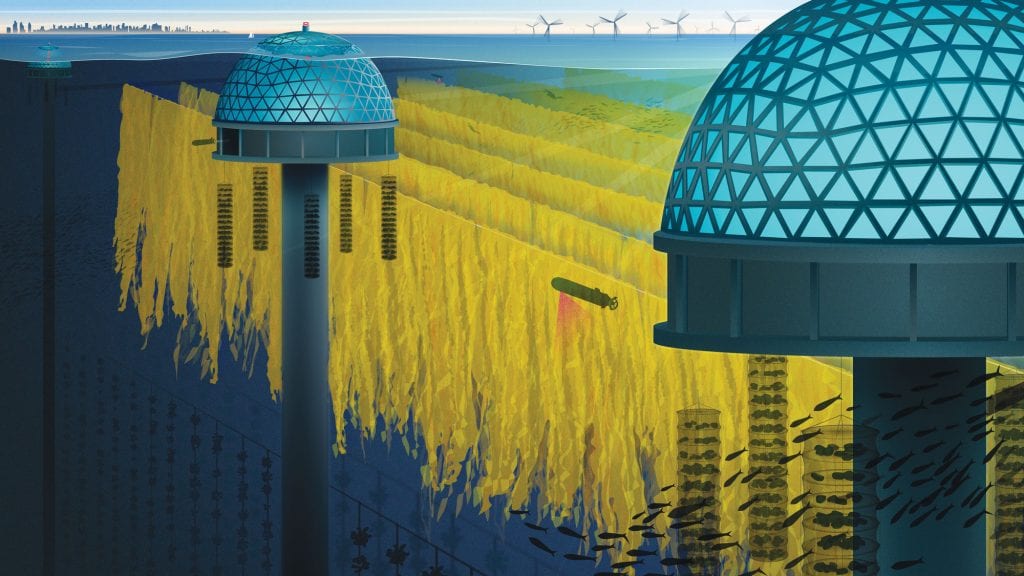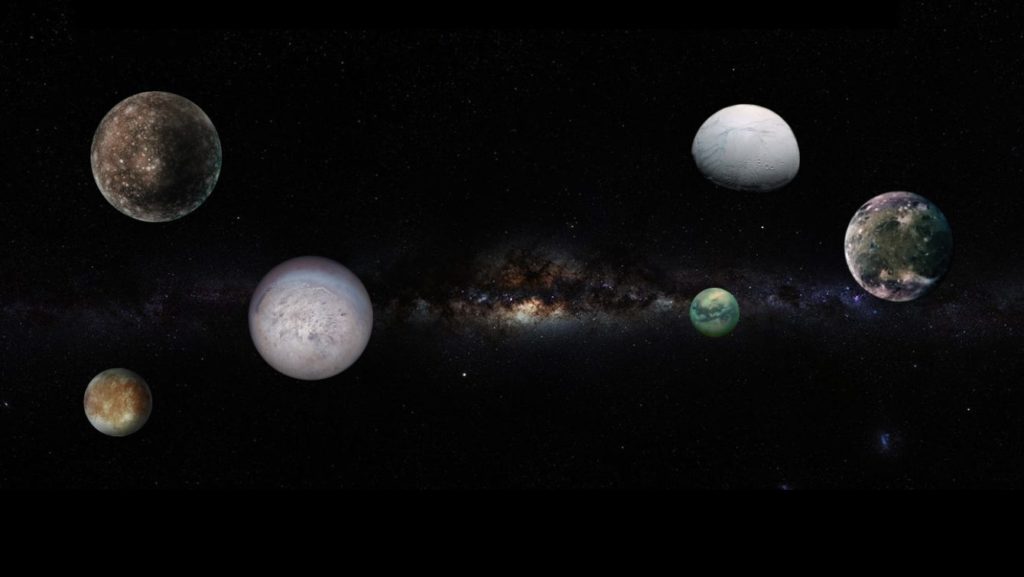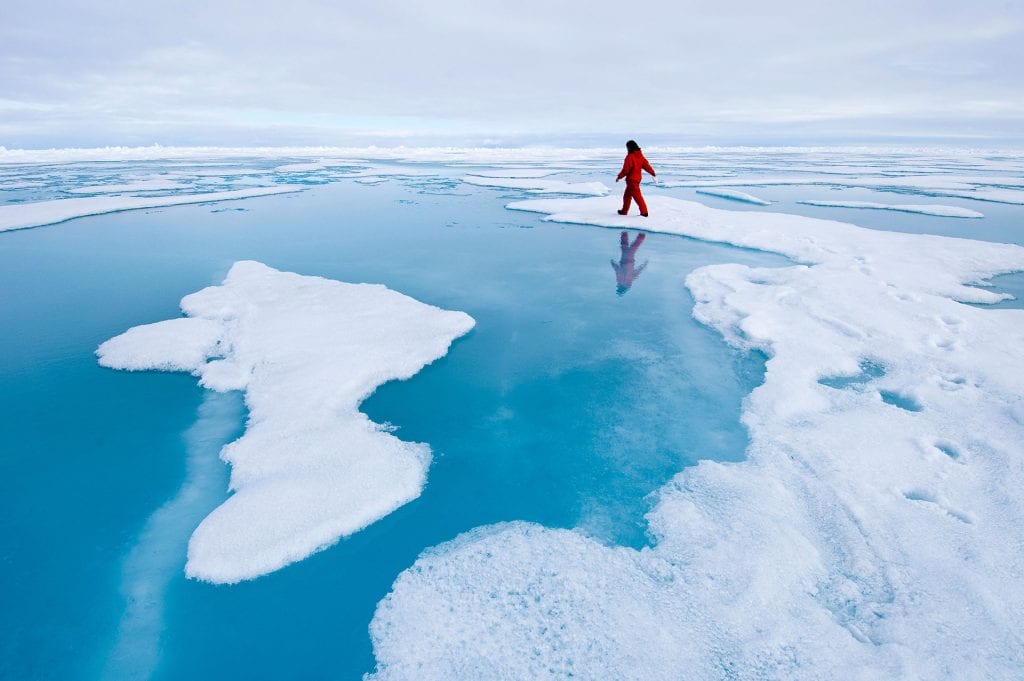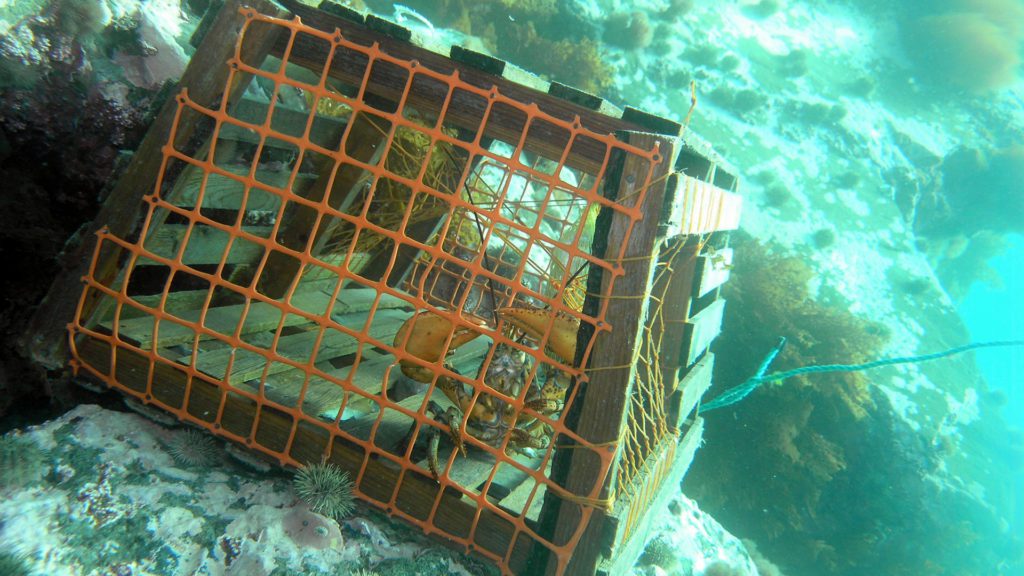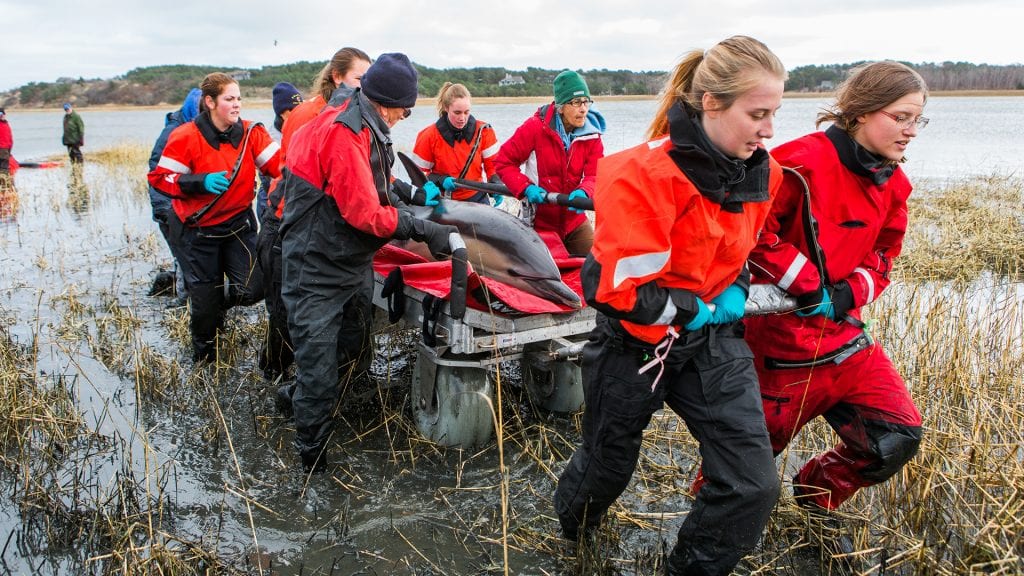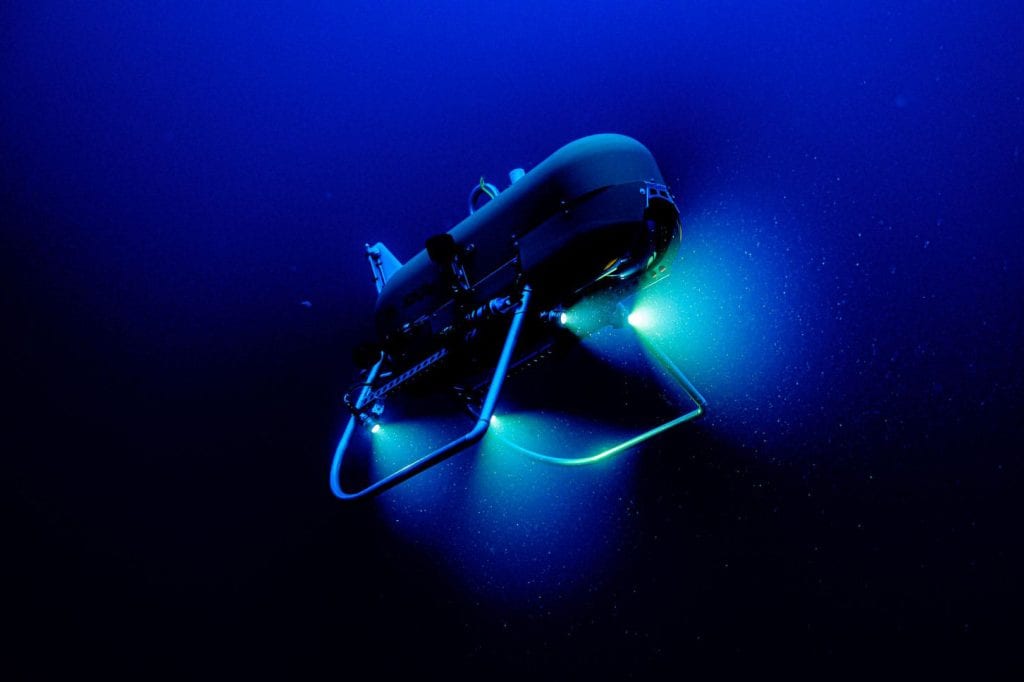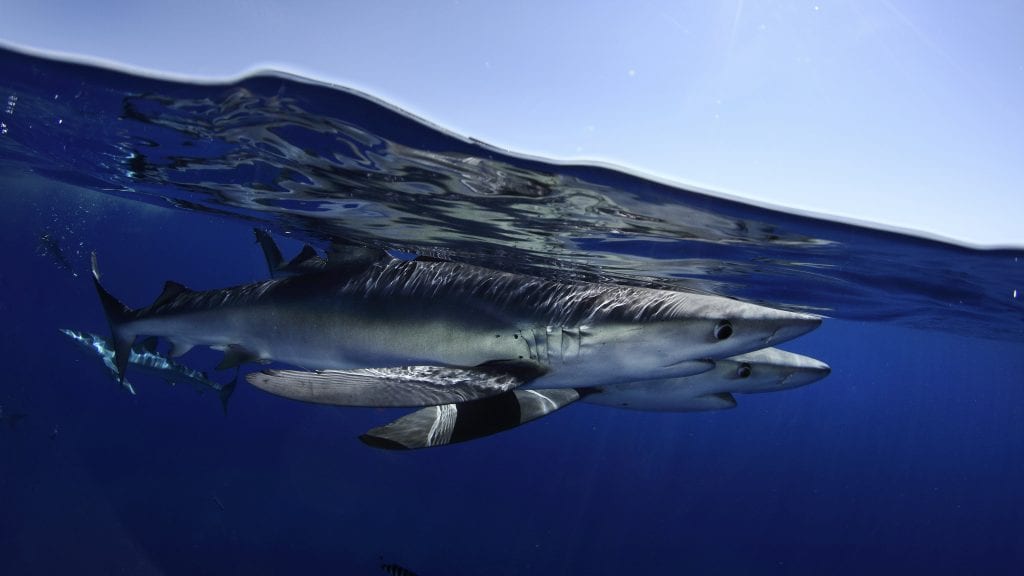Impact Stories
Impact Stories
Filter by Impact
Filter by Topic
-
Healthy habitats and thriving wildlife | Ocean Life
Hidden giant
An expedition to the world’s largest coral colony
-
Drive discovery | Ocean Life
The little big picture
WHOI senior biologist Heidi Sosik on the critical need for long-term ocean datasets
-
Drive discovery | Climate & Weather
The ocean weather nexus, explained
The vital role of ocean observations in extreme weather forecasting
-
Unlock innovation | Pollution
Breaking down plastics together
Through a surprising and successful partnership, WHOI and Eastman scientists are reinventing what we throw away
-
-
-
Unlock innovation | Ocean Tech
Whale aware!
New tech and industry partnerships help ships steer clear
-
Unleash talent | Ocean Culture & History
Breakthroughs below the surface
How ocean science is reshaping our world
-
Unleash talent | How the Ocean Works
The Ocean (Re)Imagined
How expanding our view of the ocean can unlock new possibilities for life
-
Inform action | Ocean Tech
A polar stethoscope
Could the sounds of Antarctica’s ice be a new bellwether for ecosystem health in the South Pole?
-
Breakthrough discoveries | Marine Microplastics
Secrets from the blue mud
Microbes survive—and thrive—in caustic fluids venting from the seafloor
-
Inform action | Climate & Weather
Fires, floods, and forgotten places
Finding home with author Madeline Ostrander
-
Unleash talent | Ocean Tech
Following the Polar Code
Crew of R/V Neil Armstrong renew their commitment to Arctic science with advanced polar training
-
New possibilities for human lives | Sustainable Ocean
Harnessing the ocean to power transportation
WHOI scientists are part of a team working to turn seaweed into biofuel
-
Inform action | Beach Closures
How do you solve a problem like Sargassum?
An important yet prolific seaweed with massive blooms worries scientists
-
Inform action | Climate Change
Ancient seas, future insights
WHOI scientists study the paleo record to understand how the ocean will look in a warmer climate
-
Inform action | Coastal Ocean
Rising tides, resilient spirits
As surrounding seas surge, a coastal village prepares for what lies ahead
-
Healthy habitats and thriving wildlife | Marine Mammals
Whistle! Chirp! Squeak! What does it mean?
Avatar Alliance Foundation donation helps WHOI researcher decode dolphin communication
-
Breakthrough discoveries | Currents, Gyres, & Eddies
Mary Sears and the race to solve the ocean in World War II
How her expertise on tides, currents, and swells saved American lives overseas
-
Innovations to address climate change | Ocean-Based Climate Solutions
We can’t do this alone
For marine chemist Adam Subhas, ocean-climate solutions don’t happen without community
-
Breakthrough discoveries | Ocean Tech
How WHOI helped win World War II
Key innovations that cemented ocean science’s role in national defense
-
New possibilities for human lives | Ocean & Human Lives
Life at the margins
Scientists investigate the connections between Ghana’s land, air, sea and blue economy through the Ocean Margins Initiative
-
Drive discovery | How the Ocean Works
Grits, storms, and cosmic patience
As storms stall liftoff, Europa Clipper Mission Team member Elizabeth Spiers patiently awaits the biggest mission of her life
-
-
Drive discovery | Climate & Weather
Cold, quiet, and carbon-rich: Investigating winter wetlands
A hydrologist takes on a groundbreaking study to understand how groundwater moves through New England salt marshes in the winter.
-
Unlock innovation | Ocean Tech
New underwater vehicles in development at WHOI
New vehicles will be modeled after WHOI’s iconic remotely operated vehicle, Jason
-
Breakthrough discoveries | Ocean Life
Sonic Sharks
The predators may not be a silent as once thought
-
Unleash talent | Ocean Tech
Learning to see through cloudy waters
How MIT-WHOI student Amy Phung is helping robots accomplish dangerous tasks in murky waters
-
Healthy habitats and thriving wildlife | Ocean Life
A rare black seadevil anglerfish sees the light
A viral video shows a denizen of the ocean’s twilight zone making an unusual trip to the surface
-
Healthy habitats and thriving wildlife | Ocean Life
How will we ever count them all?
WHOI biologist Francesco Ventura recounts a conservation win for sea turtles in remote Guinea-Bissau
-
Healthy habitats and thriving wildlife | Underwater Archaeology
Five marine animals that call shipwrecks home
One man’s sunken ship is another fish’s home? Learn about five species that have evolved to thrive on sunken vessels
-
Healthy habitats and thriving wildlife | Ocean Life
Deep-sea amphipod name inspired by literary masterpiece
Name pays tribute to Cervantes’ Don Quixote and reinforces themes of sweetness and beauty
-
Inform action | Climate & Weather
5 Takeaways for the Ocean from the COP29 Climate Conference
Explore the key outcomes from this year’s UN Climate Conference
-
Unleash talent | Ocean Tech
Go with the flow
Mike Singleton, relief captain, R/V Neil Armstrong describes the intricate dance of navigating ocean currents during scientific expeditions
-
Unlock innovation | Ocean Life
A gift for ocean research
Boater and oceanography enthusiast Steven Grossman supports innovative WHOI projects with $10 million donation
-
Unleash talent | Ocean Circulation
Nature’s Language
Using applied math (and chalk) to understand the dynamic ocean
-
Drive discovery | Ocean Tech
Navigating new waters
The engineering team at the Ocean Observatories Initiative overcomes the hurdles of deploying the coastal pioneer array at a new site
-
Drive discovery | Ocean Circulation
Ocean in Motion
How the ocean’s complex and chaotic physics defines life on our planet
-
Inform action | Ocean Life
The case for preserving deep-sea biodiversity
WHOI biologist Annette Govindarajan offers her takeaways from the COP16 UN Convention on Biological Diversity in Colombia
-
Drive discovery | Ocean Life
Saving Tico
A manatee’s odyssey and the role of currents in marine mammal conservation
-
Breakthrough discoveries | Ocean Life
Tracking big fish at fine scales
Scientists from Woods Hole Oceanographic Institution track how shortbill spearfish take advantage of local ocean currents when foraging.
-
Inform action | Climate & Weather
For Ben Santer, the fingerprints of the climate crisis are very human
WHOI distinguished scholar explains the art of climate fingerprinting
-
Healthy habitats and thriving wildlife | Ocean Life
Underwater Starfield
A swimmer’s encounter with creatures of the open ocean
-
Inform action | Sustainable Ocean
An economist’s quest to “reel in” illegal fishing
WHOI’s Yaqin Liu explains the challenges and opportunities of safeguarding global fisheries
-
Unlock innovation | Ocean Tech
The 10,000-foot view
WHOI’s Tom Bell tracks changes to vulnerable coastal ecosystems with aerial imagery
-
Breakthrough discoveries | Ocean Circulation
The long journey of Bottle No. 71645
Drift bottle released in 1968 to study ocean currents found on Maine beach
-
Unlock innovation | Climate & Weather
A new champion for ocean science
Gift from WHOI’s board chair Paul Salem to jump-start ocean-based climate solutions
-
Inform action | Climate Change
Counting on Corals
As struggling reefs put a squeeze on Belize’s Blue Economy, could heat-tolerant corals be the answer?
-
Inform action | Pollution
The ocean currents behind Brazil’s pollution problem
South America’s largest country reckons with both history and ocean currents in a recent spree of pollution
-
Inform action | Climate & Weather
30 by 30: How do we get there?
Researchers contribute to a bold initiative to conserve 30% of the global ocean by 2030
-
Unlock innovation | Ocean Tech
The story of a “champion” submersible
Alvin’s humble origins began alongside Wheaties cereal
-
Healthy habitats and thriving wildlife | Ocean Life
5 unlikely ocean friendships
How certain marine species keep each other safe, fed, and healthy through symbiosis
-
Breakthrough discoveries | Twilight Zone
Five big discoveries from WHOI’s Ocean Twilight Zone Project
Six years since it began, WHOI’s Ocean Twilight Zone project brings new and exciting insights to bear
-
Inform action | Ocean Life
For right whales, a dwindling food source is causing concern
As an important food source wanes in the Gulf of Maine, right whales are forced to venture further north into a minefield of ships and fishing gear
-
Unlock innovation | Ocean Tech
A cabled ocean
Internet cables on the seafloor could advance how we track changes in the Arctic
-
Healthy habitats and thriving wildlife | Ocean Life
The value of iron for a seal
WHOI researchers travel to remote Sable Island to determine if iron gives gray seal pups a head start in life
-
Inform action | Climate Change
Four Key Takeaways From COP28
The ocean had a moment at COP28 in Dubai last year—and 2024 holds even more opportunity
-
Drive discovery | Ocean Tech
A new way to discover life in the ocean’s hadal zone
WHOI biologist Johanna Weston develops a novel tool to catch and study life in the ocean’s most extreme depths
-
Breakthrough discoveries | Ocean Life
Is underwater construction noise leaving scallops defenseless?
Sea scallops expend a lot of energy reacting to noisy pile drivers
-
Drive discovery | Ocean Tech
Our eyes on the seafloor
A Q&A with WHOI marine microbiologist Maria Pachiadaki on sampling the deep ocean with Jason
-
Healthy habitats and thriving wildlife | Ocean Life
Wintering Waterbirds
Winter doldrums? Take a local birding trip to encounter a diversity of seabirds this season
-
Inform action | How the Ocean Works
Record breakers
Find out how Antarctica’s seven largest ice shelf collapses size up in this climate interactive
-
Inform action | Climate Change
The ocean gets a fresh look at UN Climate Conference
A peek inside the Ocean Pavilion’s immersive spaces
-
Unleash talent | Coastal Ocean
Happy Working in the Mud
Former MIT-WHOI Joint Program student Rachel Jakuba explains how her passion for chemistry lead to a career in environmental science on Cape Cod.
-
Unleash talent | Carbon Cycle
The pull of the poles
Researchers discuss their work at the ends of the earth
-
Inform action | Climate & Weather
A cold case, filed
A year after East Antarctica’s Conger ice shelf collapsed, an expert uses forensic evidence to uncover what happened
-
Drive discovery | Climate & Weather
The climate won’t wait
MIT-WHOI Joint Program student Emma Bullock talks Arctic research in an age of climate change and international disputes
-
Drive discovery | Sustainable Ocean
Puzzling over a mollusk mystery
What’s causing a contagious cancer to spread among clams?
-
Drive discovery | Climate & Weather
Critical support for ocean innovation
Donation from Trustee Sarah Johnson supports innovative projects
-
Drive discovery | Seafloor & Below
Unlocking the Earth’s time capsule
Mantle rocks and fluids from one of the final expeditions on the R/V JOIDES Resolution will provide insights into how Earth was formed—and maybe how life began—for generations of scientists
-
Drive discovery | Ocean Life
Nowhere to go
As sea ice dwindles, Antarctic krill face an uncertain future
-
Innovations to address climate change | Climate & Weather
Experts gather to discuss the ocean’s super-powered carbon pump
Morss Colloquium focuses on the ocean’s role in moving carbon out of the atmosphere and into the depths
-
Drive discovery | Ocean Tech
A new way to track marine snow ‘blizzards’
New submersible provides insights into how organic carbon moves through the ocean twilight zone
-
Drive discovery | Ocean Tech
3 memorable Jason Dives
Volcanoes, vents, and creatures of the deep through the lens of ROV Jason
-
Unlock innovation | Ocean Tech
Up close and personal
Ocean robots work alongside marine animals to study their behavior
-
Unleash talent | Ocean Circulation
What’s happening with AMOC?
Scientists discuss the state of the Atlantic Ocean’s ‘conveyor belt’
-
Innovations to address climate change | Ocean & Human Lives
Dancing with Data
Diving into the ocean-themed movements of the Boston Ballet’s “La Mer”
-
Innovations to address climate change | Ocean Life
Four wins worth recognizing this World Ocean Month
Amid a sea of environmental issues, these four victories spark hope for the ocean’s future
-
Drive discovery | Ocean Tech
Robots to the Rescue
How the next generation of ocean robots will help solve the planet’s most pressing problems
-
Drive discovery | Ocean Tech
Group Chat
Underwater robots communicate in text-like fashion off the coast of Oahu
-
Drive discovery | Ocean Tech
Technology Hatchery
The latest robotics projects happening inside the George and Wendy David Center for Ocean Innovation
-
Drive discovery | Ocean Tech
AI in the Ocean Twilight Zone
Deep Learning techniques are revealing new secrets about the mesopelagic
-
Unleash talent | Ocean Tech
Automating Exploration
For MIT-WHOI Joint Program student Amy Phung, virtual reality and robotics are a natural pairing for ocean exploration
-
-
Unlock innovation | Ocean Life
Keeping an ear out for whales
Scientists look to safeguard the mammals with robotic buoys in the New York Bight
-
Breakthrough discoveries | Harmful Algae & Red Tides
Are warming Alaskan Arctic waters a new toxic algal hotspot?
WHOI researchers warn Arctic communities following detection of a harmful bloom
-
Unleash talent | Ocean Tech
Hardwired to love
Ocean engineers discuss our emotional connection with robots
-
Drive discovery | Climate & Weather
Propelling a new wave of ocean-climate solutions
WHOI researchers get a boost from climate-tech fund Propeller
-
Drive discovery | Climate & Weather
Solving climate challenges, one innovation at a time
WHOI researchers report progress on projects funded by the Ocean Climate Innovation Accelerator
-
Unlock innovation | Climate & Weather
Paddling an angry, ancient ocean
If ancient Beringians got to the Americas by boat, it couldn’t have been easy
-
Innovations to address climate change | Corals
Can Sound Help Save Coral Reefs?
WHOI scientists use sound to attract larval corals that could help rebuild reef ecosystems
-
Unleash talent | Pollution
How is human health impacted by marine plastics?
WHOI biologist Mark Hahn discusses a recent global plastics study
-
Inform action | Sustainable Ocean
Massachusetts Governor Maura Healey visits WHOI
Healey-Driscoll administration “leans in” on climate, Blue Economy research at WHOI
-
Unleash talent | Ocean Observatories
On the Move
The Coastal Pioneer Array is moving south in 2024. WHOI’s Al Plueddemann discusses the array’s importance and its upcoming move
-
Drive discovery | Climate & Weather
Reconstructing the Bering Sea’s stormy past
Researchers help Bering Sea indigenous communities understand the past and plan for future
-
Healthy habitats and thriving wildlife | Ocean Life
Casting a (long) line to the twilight zone food web
Scientists and fishermen work together to study key predators in the ocean twilight zone
-
Unlock innovation | Ocean Tech
How does Sentry know where it is?
New smarts keep the autonomous vehicle on track
-
Unleash talent | Climate & Weather
Pakistan’s ‘Ocean of Water’
WHOI’s Caroline Ummenhofer discusses how interactions between the Pacific and Indian Oceans influenced Pakistan’s devastating monsoon rains
-
Unleash talent | Marine Microbes
Bridge-to-PhD program at WHOI opens doors for new scientists
WHOI’s Center for Chemical Currencies of a Microbial Planet (C-CoMP) works to expand BIPOC representation in ocean sciences with its inaugural Bridge-to-PhD Fellowship Program
-
Unleash talent | Ocean & Human Lives
The predictive power of geochemistry
A WHOI researcher looks for changes in gas molecules to forecast volcanic eruptions such as Mauna Loa in Hawai’i.
-
Innovations to address climate change | Climate & Weather
Looking to the Mighty Mississippi for climate solutions
Researchers measure alkalinity flowing into the Gulf of Mexico to assess a carbon dioxide removal strategy
-
Unleash talent | Ocean Tech
From Northern California to Ocean Engineer
OOI engineer Irene Duran’s life took her from a dry, hot California town to a career where preparing for inclement weather is part of the job
-
Drive discovery | Climate & Weather
Sargassum serendipity
A surprise find connects MIT students working on solutions for a harmful algal bloom in the Caribbean
-
Unleash talent | Ocean & Human Lives
Why Indigenous perspectives matter in the climate conversation
Wampanoag Tribal Member Leslie Jonas talks WHOI, Native rights, and a timely partnership
-
Innovations to address climate change | Coastal Ocean
An introduction to marsh bothering
A sea-level modeler plunges into fieldwork on Prince Edward Island
-
Drive discovery | How the Ocean Works
When will Antarctica’s ice cliffs come crashing down?
Researchers challenge their own assumptions to improve sea-level rise predictions
-
Unlock innovation | Coastal Ocean
Living on the edge
Science faces off with an increasingly volatile coast
-
Breakthrough discoveries | Ocean Life
When it comes to albatross ‘divorce,’ climate isn’t the only issue
Personality can factor into lovebird split-ups in the southern Indian Ocean
-
Drive discovery | Seafloor & Below
Coming full circle
WHOI Trustee Jamie Austin’s endowed fund supports strategic goals
-
Unleash talent | Coastal Ocean
The teetering balance of coastal CO2
WHOI scientists Matt Long and Aleck Wang explain the incredibly important role of coastal seagrasses and rivers in the global carbon cycle
-
Unlock innovation | Climate & Weather
5 essential ocean-climate technologies
In the race to find solutions to our climate crisis, these marine tools help us get the data to make informed decisions
-
Breakthrough discoveries | Pollution
Sunlight and the fate of oil at sea
Danielle Haas Freeman draws on the language of chemistry to solve an oil spill puzzle
-
Unleash talent | Ocean Life
Making a splash on TikTok
Nate “The lumpfish guy” Spada brings ocean science to millions with amazing creatures and a sense of humor
-
Unleash talent | Climate & Weather
Waiting on the next freshwater flush
Could the unprecedented amounts of freshwater in the Beaufort Sea stall the current system that controls our climate? WHOI’s Isabela Le Bras weighs in.
-
Drive discovery | Climate & Weather
The Power of Super Reefs
Working with the governments and scientists of several Pacific Island nations, the project’s first goal is to limit the impacts of pollution and fishing by expanding these countries’ marine protected areas (MPAs).
-
Healthy habitats and thriving wildlife | Ocean Life
Edie Widder: A light in the darkness
By sharing her fascination with the luminous deep, explorer, author, and conservationist Edie Widder sheds light on why it matters.
-
Drive discovery | Ocean Tech
Who is Alvin and what are sea trials?
If you like the deep sea and exploring for science, you’re going to love Alvin!
-
Breakthrough discoveries | Pollution
A toxic double whammy for sea anemones
Exposure to both oil and sunlight can be harmful to sea anemones
-
Drive discovery | Ocean Life
Invasive tunicates have shellfish farmers crying “foul”
As shellfish farmers struggle with invasive tunicate invasions, scientists are trying to gain insight into the thermal tolerances for these strange critters and determine where they might show up next
-
Unlock innovation | Ocean Tech
How to study an underwater earthquake from shore
Scientist Chris German on a successful AUV Sentry mission when the science team could not travel to sea
-
Unleash talent | Ocean Tech
Meet the Sentry Team: Justin Fujii
Research engineer Justin Fujii on working with autonomous underwater vehicle Sentry
-
Healthy habitats and thriving wildlife | Ocean Life
Squid Games
Shortfin squid are becoming more available to New England fishermen, but why?
-
Drive discovery | Hurricanes
Commercial ship tracks Gulf of Mexico’s hurricane heat potential
The vessel will help track hurricane intensity and other ocean conditions across the Loop Current on its regular route between Jamaica and New Orleans
-
Innovations to address climate change | Ocean Life
4 Potential Solutions for Corals in Crisis
Racing against the clock, WHOI researchers and colleagues are developing innovative solutions to rebuild reefs and improve coral resiliency–before it’s too late.
-
Innovations to address climate change | Ocean Life
Hope for Corals in Crisis
The emerging science and technology that could give coral reefs a fighting chance
-
Unlock innovation | Changing Shorelines & Erosion
Novel tool sheds light on coral reef erosion
Coral reefs are among the last lines of defense against coastal flooding.
-
New possibilities for human lives | Ocean Life
Partly cloudy with a chance of sharks
Researchers develop ‘heat map’ shark forecast system to improve beachgoer safety
-
Drive discovery | Ocean Tech
7 Places and Things Alvin Can Explore Now
With its new depth rating of 6500 meters (4 miles), WHOI’s human-occupied vehicle (HOV) Alvin is set to take scientists places they’ve never explored in person
-
Innovations to address climate change | Ocean Life
On the crumbling edge
The race to ensure protection for the emperor penguin across the world
-
Drive discovery | Ocean Life
Tracking dispersal of baby fish for better reef conservation
To improve marine protected areas, WHOI scientists study the traffic patterns of juvenile reef fish
-
Breakthrough discoveries | Oxygen Dead Zones
The hypoxic reef
Scientists say a lack of oxygen might be stressing tropical reefs even more than warming temperatures, acidification, and pollution. But the combination of these factors spells disaster for coral.
-
Drive discovery | Climate & Weather
OCIA: Accelerating the pace of ocean-climate research
The first five projects funded by the Ocean Climate Innovation Accelerator (OCIA) are set to advance research at the intersection of oceans and climate.
-
Healthy habitats and thriving wildlife | Ocean Life
A bed of roses in the ocean
Flower-shaped corals blossoming off the island of Tahiti offer hope for reefs
-
Unleash talent | Ocean & Human Lives
5 WHOI women making waves in ocean science and engineering
In celebration of Women’s History Month, we’re spotlighting a few scientists who have made a difference in the WHOI community and beyond
-
Innovations to address climate change | How the Ocean Works
With worsening storms, can the Outer Banks protect its shoreline?
The double-whammy of more intense storms and a COVID-era real estate boom has scientists and planners focused on resiliency
-
Unleash talent | Ocean Tech
Meet the Jason Team: Mario Fernandez
A mechanical engineer, pilot, and expedition leader on vehicle design and adventures at sea
-
Unleash talent | Ocean Tech
Meet the Sentry Team: Amanda Sutherland
A Mechanical engineer on independent workflow and collaboration
-
Innovations to address climate change | Climate & Weather
Elizabeth Kolbert on ocean-based carbon removal
Pulitzer prize–winning author reflects on methods that could enable the ocean to store more carbon, and what that could mean for marine ecosystems and sea life.
-
Inform action | Climate & Weather
National Academy scientists say the ocean must play a role in CO2 removal to stave off climate change
A committee from the National Academy of Science reviews ocean-based methods to remove carbon dioxide in order to meet the Paris Climate Agreement goals
-
Unlock innovation | Ocean Life
Sniffing out methane in the deep sea
Scientists cruise the Gulf of California’s Guaymas Basin to test out new tech for detecting and measuring methane in the deep
-
Unleash talent | Ocean Life
Coral time machines
Sophie Hines discusses the paleo-research power of fossil corals
-
Unleash talent | Coastal Ocean
Dune buggies and diving:
PhD student Ciara Dooley talks about coastal research with the DUNEX Program
-
New possibilities for human lives | How the Ocean Works
Ocean data gives Northeast fishermen an edge against a warming ocean
Fishermen successfully brace against warm water wave from Gulf Stream, thanking greater access to data from the WHOI Shelf Fleet Program
-
Inform action | Climate & Weather
How to speak “Ocean”
Major communications initiative aims to bridge gaps in ocean literacy and awareness
-
Drive discovery | Climate & Weather
An enduring legacy of impact in ocean and climate research
The new Francis E. Fowler IV Center for Ocean and Climate—a flagship program of WHOI’s president—is designed to unlock the institution’s full potential as the world’s premier independent ocean research organization to address climate change
-
Unleash talent | Climate & Weather
From the sound: A future powered by the sea
These two WHOI scientists discuss the promise of offshore wind and wave as renewable energy, and why WHOI is uniquely poised to make these safe and efficient forms of power
-
Innovations to address climate change | Climate & Weather
An ocean of opportunity
Ocean experts explore the potential risks and rewards of ocean-based solutions to climate change
-
Unlock innovation | Ocean Tech
A curious robot is poised to rapidly expand reef research
WHOI scientists with the Coral Catalyst Team are leveraging a new, artificially intelligent robot to automate coral reef health assessments
-
Innovations to address climate change | Coastal Ocean
Adapt or retreat:
No solution is off the table to prepare for sea level rise in Woods Hole
-
Drive discovery | Climate & Weather
A coral reef kickstart
WHOI’s Reef Solutions Initiative takes a multi-disciplinary approach to investigate solutions for ailing coral reefs
-
New possibilities for human lives | Ocean Life
Five times the ocean helped us learn about the human body
For people studying the human body, big ideas can sometimes come in small, briny packages
-
Drive discovery | Ocean Life
Burrows on the beach
Rebuilding after a hurricane isn’t easy—especially for those pale, stalk-eyed creatures known as ghost crabs
-
Unleash talent | Ocean Tech
Meet the Alvin 6500 Team: Lisa Smith
Alvin Certification Coordinator Lisa Smith on working with Naval Sea Systems Command (NAVSEA) to get HOV Alvin cleared for diving.
-
Unleash talent | Ocean Life
Jaida Elcock: diversity is essential–in the marine ecosystem and in science
MIT-WHOI Joint Program student Jaida Elcock always knew she was going to work with sharks. Oceanus caught up with her to find out more about why sharks—and representation—matter.
-
Unleash talent | Ocean Tech
Whale Safe
For Mark Baumgartner, Whale Safe is the natural evolution of WHOI’s work with passive acoustics
-
Unleash talent | Ocean Tech
Summer with Sentry: Intern Renee Gruner-Mitchell
Renee Gruner-Mitchell on her internship working on AUV Sentry at the National Deep Submergence Facility during the summer of 2021.
-
New possibilities for human lives | Ocean & Human Lives
Accessible Oceans
Making marine science available to the visually-impaired
-
Healthy habitats and thriving wildlife | Ocean Life
Five marine living fossils you should know about
After living for millions of years, these species may have mastered evolution in our ocean
-
Unleash talent | Ocean Life
For Cynthia Becker, solutions to coral health are in the smallest details
MIT-WHOI Joint Program student Cynthia Becker sits down with Oceanus Magazine to explain why marine microbes may be the key to diagnosing reef health
-
Healthy habitats and thriving wildlife | Ocean Life
Speaking in colors
How squid use a dazzling array of colors and body patterns to make friends, fend off enemies, and survive life below the surface.
-
Unlock innovation | Ocean Tech
Measuring the great migration
A bioacoustic mooring will use sound to help estimate life migrating in the ocean’s twilight zone as part of a new long-term observation network in the Atlantic
-
Healthy habitats and thriving wildlife | Ocean Life
Fascinating facts about emperor penguins
We might chuckle at the sight of penguins waddling over ice, but these flightless birds would put Olympic swimmers to shame. Learn more about emperor penguins, the largest penguin in the world and permanent residents of Antarctica.
-
Unlock innovation | Ocean Life
Keeping an ear out for entangled whales
To help mitigate the impacts of illegal fishing off the Sicilian coast, a WHOI scientist and his collaborators are attaching acoustic tags to drift nets so sperm whales can be located and tracked for disentanglement crews.
-
Unleash talent | Ocean & Human Lives
Diverse Voices From Our Maritime Past
By providing access to local and marginalized voices, these archives hope to help ensure that local communities can benefit from the work of Western scientists and historians.
-
Drive discovery | Ocean Tech
WHOI breaks in new research facility with MURAL Hack-A-Thon
Engineers use test tanks and 3D printers to prototype an acoustic sensor in the new Quissett Research Facility
-
Unlock innovation | Ocean Life
A dragnet for toxic algae?
To keep a close eye on harmful algal blooms, shellfish farmers are relying on a WHOI-developed camera system that spies on toxic species below the surface and sends alerts when they’re present.
-
Healthy habitats and thriving wildlife | Ocean Life
Life at Rock Bottom
This digital photo essay brings you the forms, figures, and facts of life more than a mile and half deep
-
Drive discovery | Ocean Tech
In the Ocean Twilight Zone, Life Remains a Mystery
A New, Long-term Observation Network Could Help Reveal Its Secrets
-
Drive discovery | How the Ocean Works
Spock versus the volcano
Five hundred meters below the calm surface waters of the Aegean Sea off Santorini Island, Greece, lies an active submarine volcano. There, a decision-making robot equipped with artificial intelligence searches for life and danger.
-
Drive discovery | Climate & Weather
Secrets in the dust
Scientists mine ancient dust from the ocean’s loneliest spot
-
Drive discovery | Alvin
Overhaul to take Alvin to greater extremes
Work on Iconic Sub Will Put 99% of The Ocean Floor Within Reach
-
Drive discovery | Ocean Tech
Extreme Measures
THE OCEAN DOESN’T REVEAL ITS SECRETS EASILY. By observing natural phenomena, throwing instruments over the side of ships, and diving…
-
Unleash talent | Ocean Life
Experts Explore the Edges
Daniel P. Zitterbart Assistant Scientist, Applied Ocean Physics and Engineering In my group, we use remote sensing of animal behavior…
-
Unleash talent | Ocean Life
Falling in love with deep-sea parasites
At hydrothermal vents there are body-snatchers, intestinal hitchhikers, and chest-bursters, but something about them is still alluring to Lauren Dykman
-
Drive discovery | How the Ocean Works
A rare mission north
Serendipitous science mission aboard the Polar Star provides “once-in-a-lifetime” opportunity to collect critical ocean data below the ice
-
Innovations to address climate change | How the Ocean Works
The ocean has heartburn. Is relief on the way?
Researchers investigate the use of alkalinity enhancement to quell ocean acidification and help maintain the sea’s role as a carbon sink
-
New possibilities for human lives | Ocean & Human Lives
How historic hurricanes can help predict storm intensity
Research into past hurricanes could help predict the strength of future storms, and inform infrastructure planning and emergency management decisions in southern New England
-
Drive discovery | Ocean Tech
New glider design aims to expand access to ocean science
Gliders are vehicles vital to collecting oceanographic data, but not accessible to everyone in the ocean community. A team of WHOI engineers want to change that
-
Drive discovery | Climate & Weather
Science RoCS Initiative responds to need for increased ocean monitoring
Commercial ships are helping oceanographers deploy robotic Argo floats to keep an eye on hard-to-reach parts of the ocean
-
Drive discovery | How the Ocean Works
Going the Distance
Unraveling the mysteries of the vast global ocean means entering some of the most remote and dangerous places on the planet.
-
Unlock innovation | eDNA
Five things to know about NOAA’s 2021 Tech Demo
Researchers prepare WHOI’s autonomous underwater vehicle, Orpheus for its first deep dive of 2021Tech Demo.
-
Unleash talent | Ocean Tech
Meet the Alvin 6500 Team: Rose Wall
Alvin Engineer Rose Wall on joining the Alvin Group during an overhaul and the pandemic.
-
Unlock innovation | Ocean & Human Lives
Oil spill response beneath the ice
Successful test deployment of WHOI vehicle Polaris expands U.S. Coast Guard response to oil spills in the Arctic
-
Unlock innovation | Ocean Life
From Mars to the deep
Navigation technology that helped NASA’s Perseverance rover land safely on Mars could guide robots in another unexplored terrain that’s much closer to home: the deepest trenches of the ocean.
-
Drive discovery | Ocean Tech
Racing an undersea volcano
Using AUV Sentry to make a high-resolution, near-bottom, seafloor map before the next volcanic eruption at the East Pacific Rise
-
Drive discovery | How the Ocean Works
Amidst pandemic, researchers deploy new monitoring station in tropical Pacific
After two attempts in 2020 to replace a monitoring station of the coast of Chile, WHOI researchers and colleagues successfully deployed the moored system despite pandemic-related challenges. This extends a 20-year ongoing presence of a monitoring buoy in this otherwise data-sparse area of the Pacific.
-
Unleash talent | Ocean & Human Lives
Five books WHOI researchers are reading right now
Ocean scientists don’t just read peer-reviewed papers to stay inspired. Some require less-obvious forms of reading to keep their minds sharp
-
Unlock innovation | Ocean Tech
Microbial Methane – New Fuel for Ocean Robots?
Researchers are developing on an energy harvesting platform that converts marine methane to electricity. The system could be an answer to power-hungry robots that are being asked to explore increasingly larger swaths of the ocean.
-
Inform action | Ocean & Human Lives
WHOI scientist shares her perspective on ‘imminent’ oil spill in the Red Sea
As a major oil spill looms in the Red Sea, a WHOI physical oceanographer shares her insights on where the oil might go.
-
Breakthrough discoveries | How the Ocean Works
Tracking change in the Arctic Ocean
Changes in the Arctic Ocean are becoming clearer, thanks to an ocean monitoring network maintained by WHOI researchers in the Beaufort Gyre since 2003.
-
New possibilities for human lives | Sustainable Ocean
Can icebergs be towed to water-starved cities?
The big tow Researchers have floated the idea of long-distance iceberg towing for decades.
-
Drive discovery | Ocean & Human Lives
On the high seas
A cruise with a view: The deck of the Armstrong was a welcome change of scenery for those used to…
-
New possibilities for human lives | Sustainable Ocean
The Bounty of the Ocean
Researchers work to harness the untapped benefits of the sea
-
Unlock innovation | Ocean & Human Lives
‘High-octane’ hurricane fuel swirls in the Gulf of Mexico
Researchers deploy an arsenal of underwater floats to monitor the Loop Current—one of the Atlantic Ocean’s fastest and warmest currents—to collect critical data for hurricane forecasting.
-
Drive discovery | Climate & Weather
Investigating the ocean’s influence on Australia’s drought
Researchers look to the Indian Ocean for clues on how Australia’s blazing wildfires and bone-dry conditions have reached such extremes.
-
New possibilities for human lives | How the Ocean Works
Finding answers in the ocean
The test being used to diagnose the novel coronavirus—and other pandemics like AIDS and SARS—was developed with the help of an enzyme isolated from a microbe found in marine hydrothermal vents as well as freshwater hot springs.
-
Drive discovery | Ocean Tech
Gift enables new investments in ocean technologies
A grant from the Coleman and Susan Burke Foundation has allowed WHOI to make crucial investments in remote technology that enhance research innovation at sea. New video monitors aboard the R/V Neil Armstrong will allow scientists and crew to video conference throughout the ship or with colleagues on shore.
-
Drive discovery | Ocean & Human Lives
WHOI establishes new fund to accelerate microplastics innovation
With the backing of a handful of family foundations, WHOI is launching a Marine Microplastics Innovation Accelerator to help answer some of the most pressing—and foundational—questions about marine microplastics and their impacts
-
New possibilities for human lives | Ocean & Human Lives
A Sea of Hazards
How ocean scientists are working to safeguard us from the perils of a changing ocean
-
Unleash talent | Ocean & Human Lives
Experts Explore the Ocean-Human Health Link
Eleonora Van Sitteren Guest Student, Lindell Lab I work with the Lindell Lab group at WHOI on a selective breeding…
-
Unlock innovation | Ocean & Human Lives
Can seismic data mules protect us from the next big one?
Researchers look to new seafloor earthquake detection systems for better detection and warning of seismic risk
-
Breakthrough discoveries | Seafloor & Below
Why we explore deep-water canyons off our coast
WHOI biologist Tim Shank joins NOAA Fisheries, the National Centers for Coastal Ocean Science, the National Ocean Service, and the Mid-Atlantic Regional Council on the Ocean (MARCO) to study the ecological diversity and economic value laden in the 90 underwater canyons along the northeast U.S. continental shelf
-
Unlock innovation | Ocean Tech
Sea Ahead
Once upon a time, ocean scientists hung up cans on up a tree on Bikini Atoll to measure wave height in the Marshall Islands during nuclear weapons testing. Today, ocean technologies and data harvesting are heading somewhere big, from swarming bots, to more autonomous submersibles, and the miniaturization of ocean sensors
-
Unleash talent | Ocean & Human Lives
Looking into the Future
WHOI researchers discuss various ways that ocean science and technology are enabling a deeper understanding of our blue planet
-
New possibilities for human lives | Sustainable Ocean
Uncharted Waters
Our global ocean will change dramatically over the next few decades. What might it look like, and how will humans adapt?
-
Drive discovery | Ocean & Human Lives
Are We Alone?
To discover life in space, we look to our ocean extremes to understand what it’s capable of withstanding. The Exploring Ocean Worlds Program brings WHOI’s marine expertise into the far reaches of our solar system.
-
Innovations to address climate change | Climate & Weather
Oceans of Change
“THE SEA NEVER CHANGES, AND ITS WORKS, FOR ALL THE TALK OF MEN, ARE WRAPPED IN MYSTERY.” So observed the…
-
Drive discovery | Climate & Weather
The Ocean’s Moveable Feast
Over the past few decades, Carin Ashjian, a biologist at Woods hole Oceanographic Institution (WHOI), has explored the marine food…
-
Unlock innovation | Ocean Tech
Bioacoustic alarms are sounding on Cape Cod
The International Fund for Animal Welfare (IFAW) and its Marine Mammal Rescue Team in Yarmouth, Mass. have responded to a record high of more than 464 marine mammals stranded on Cape Cod since January this year. Researchers at Woods Hole Oceanographic Institution (WHOI) believe patterns from animal sound data may be the key to curbing these numbers.
-
Drive discovery | How the Ocean Works
The Rise of Orpheus
WHOI’s new deep-sea autonomous underwater vehicle moves one step closer to exploring the hadal zone—the deepest region of the ocean—to search for new clues about the limits of life on Earth, and possibly beyond.
-
Unlock innovation | Ocean & Human Lives
Rapid Response at Sea
As sea ice continues to melt in the Arctic and oil exploration expands in the region, the possibility of an oil spill occurring under ice is higher than ever. To help first responders cope with oil trapped under ice, ocean engineers are developing undersea vehicles that can map oil spills to improve situational awareness and decision making during an emergency.
-
Breakthrough discoveries | Ocean Tech
A tunnel to the Twilight Zone
Scientists track hungry blue sharks as they ride swirling currents down to the ocean twilight zone—a layer of the ocean containing the largest fish biomass on Earth


